Victoriana by Hostile V
Introduction
Original SA post INTRODUCTIONLet's talk genre mashups.
Let's talk about two tastes that don't necessarily go together but can be combined into something new and interesting. Specifically, let's talk about the worst thing they can do: be boring and be derivative. I bet you can name a few off the top of your head that make an effort to avert that cardinal sin. Take Shadowrun (mostly because it's pretty relevant with where I'm going). Shadowrun, at its core, is combining generic fantasy with Gibson-era cyberpunk and promptly goes buck wild with it, building a future that feels approachable but new. Shadowrun also commits to its core thesis of "the players are people dancing around in the grey areas of society and doing odd jobs for money" and works with that. The players might actually change the future and the world somehow.
It's not hard to imagine where Shadowrun could've gone awry. It does have some Metaplot Issues but it could have been worse. The world could have been bare bones or worse, too complicated and too set in stone. The species of metahumanity could've been too one dimensional, too niche. The advantages and disadvantages could have been too cumbersome. The developers tread a fine line creating a game that was both enjoyable but comprehensive, fluid (with some odd mechanics, but that's inherent in the genre) but structured.
But I'm not really here to talk about Shadowrun. I'm here to talk about Victoriana 3rd edition, a game which honestly feels like it might've been built out of Shadowrun's possible shortcomings.

VICTORIANA is a fantasy game set in an altered 19th century Britain. Specifically, it takes place in the year 1856 in a nebulous time where the Crimean War has not yet ended and the Second Opium War has not yet begun (never mind the fact that there were scant months in between them). Victoria is the Queen, Albert isn't dead yet, tensions are mounting in the Americas for the Civil War in a few years and Britain is the biggest empire in the world. As you can tell, Victoriana hews closer to the historical fiction side of things.
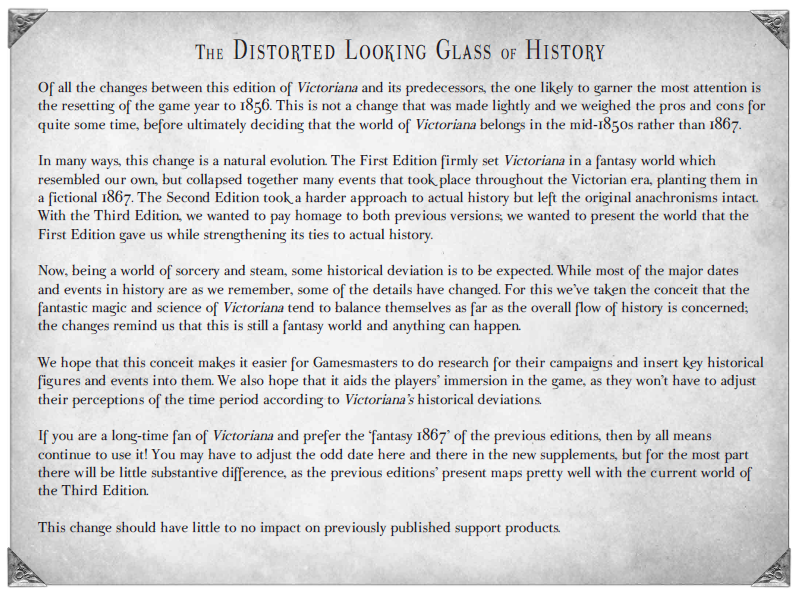
On the fantasy side of things, you have the Shadowrun approach of metahumanity. Humans are a subspecies alongside Dwarves,
Socially and culturally, things are a mixed bag. Britain views certain subspecies with polite disdain but they also have that reaction towards British Chinese, British Eurasian Indians and other assorted foreigners living within the Empire. However the subspecies are not forced to be outsiders of society and have a place; your subspecies is less of a social identity than your social class is. Christianity, Islam and Judaism don't exactly exist as we know them, influenced by a different sort of angelic choir and different sort of Heaven and Hell. The majority of countries and nations of the time still exist, albeit it with non-human rulers and maybe some other changes.
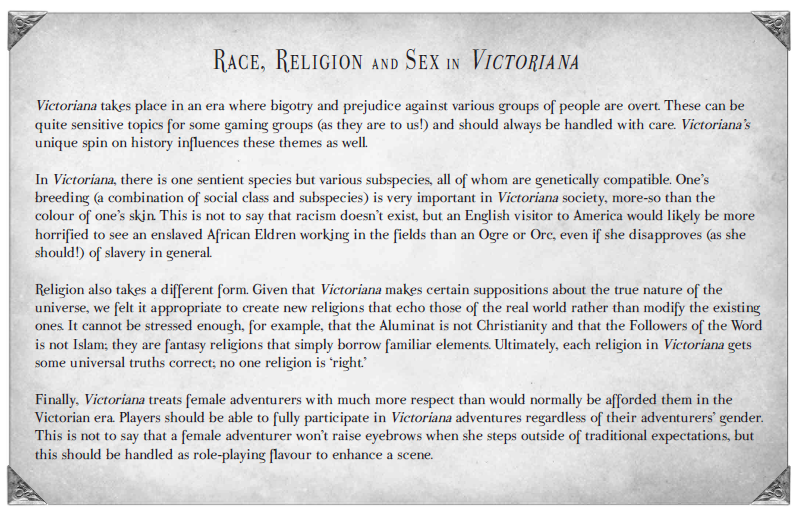
To paraphrase the book, Victoriana is a world of fantastic races, magic, steam, horror and adventure.
Dropping the airs of introduction for a bit, it's also not particularly...gripping.
So far as I've read into it and looked at it, Victoriana falls prey to the "like the real world BUT" traps of mashups. Like the real world BUT with fantasy races. Like real history BUT with Wyvern Riders and prosthetic steam limbs replacing legs lost in Crimea. Like real religion BUT with chaos vs. order and eight messiahs instead of one Jesus. And the worst part is it's not particularly compelling because if it's going to follow the "like the real world BUT" logic...well. You do have to suspend your disbelief to a certain degree with the core concept, that it's still pretty much all turned out the same despite new elements. But it feels like the Civil War is still going to happen and World War I will happen and revolution will sunder the royal system. The future is, unfortunately, pretty well set in stone but also far enough away that the player characters won't be able to see the impact of what they've done (though Eldren do live roughly 200 years). That's a rough limit to put on a game centered around Having Adventures and seems to be less focused on telling stories about characters.
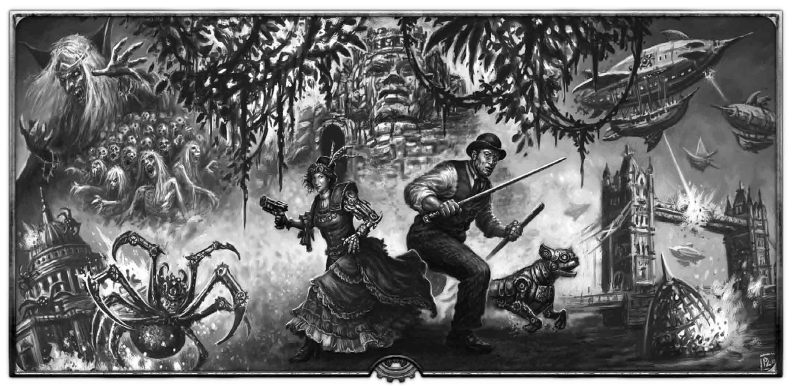
It's a lot like how fucking overstuffed this picture is.
But I think I'm getting ahead of myself and my criticisms. Point is, I'll be reviewing Victoriana 3e not because I'm interested in the setting or its ideas but because I'm interested in its flaws and what it could do right or better.
The game is divided into five different books (read: chapters). They are, in order:
- Book One: The Encyclopaedia Victoriana, or world building and cultural business.
- Book Two: One's Full Measure, or making characters.
- Book Three: Cogs and Movers, or game mechanics.
- Book Four: Sorcery and Steam, or all of the different magical systems (there are a LOT) and the much less advanced tech system.
- Book Five: Trials and Tribulation, or running the game and making adventures.
So stay tuned, dear reader, for the first chapter to Victoriana proper and its first flaw: you can include in-universe documents all you want but for the love of god don't just rely on those. At least put some summaries in blunt language for the purposes of explaining what you were presenting in more lofty language.
Oh, also there are some snippets of in-universe stories. The book's introduction starts off with a pulp story/Penny Dreadful about a British adventurer named Sir William infiltrating a submarine that belongs to his nemesis, the (sigh) sinister Irish terrorist/supervillain called Lord Clover. Sir William ends up rescuing the daughter of Dr. Arno Hartmann, a German Gnome with an interest in the lost continent of Thulia who is working for Lord Clover because Clover is holding Eva Hartmann hostage. The sub (the Leviathan) sinks, Dr. Hartmann dies, Lord Clover is presumed dead as he goes down with the sub, the mission is completed. It's your typical nationalistic trashy novel.
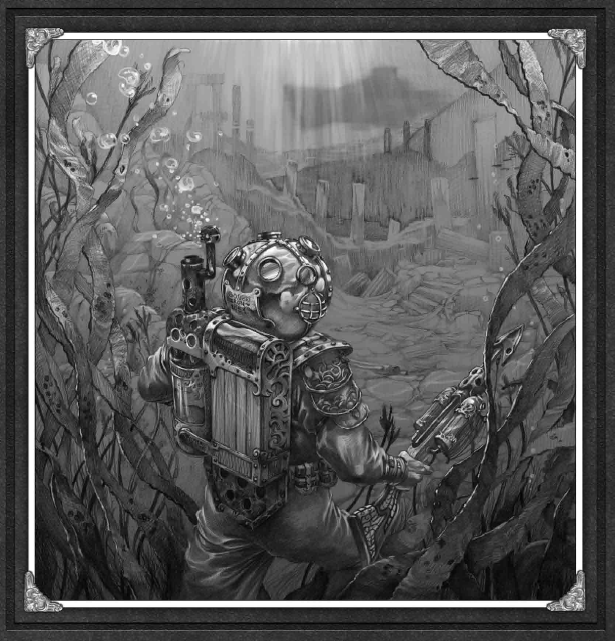
As a high point, the art for this book is very nice.
BOOK ONE: Part One
Original SA post
BOOK ONE: Part One
Or
The DOOM 3/Ubisoft Sandbox World Building Method
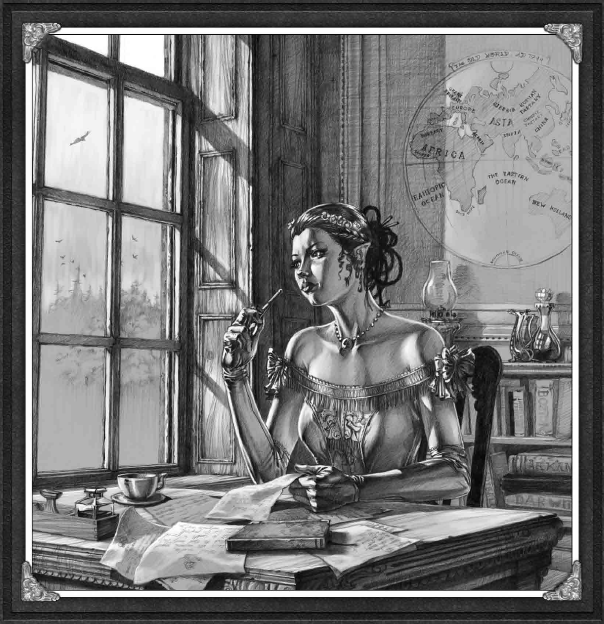
"Dear audio log diary..."
The entirety of Book One is framed as the personal possessions of Countess Lyonesse, an Eldren with a collection of news articles and various writings assembled to provide a guide to a daughter of an American friend she'll be hosting in London. It's divided into sections and I'll be paraphrasing for the most part, but I'm not joking: there is not a single bit of writing here (not counting sidebars) that is not in universe. And that is a fucking hell of a lot of exposition to just dump in the lap of the reader, especially because it doesn't really paint that much of a concrete picture of the world like neutral reader-aimed language does. As much as I hated Brave New World for having literally half of most of the books be uncut in-universe fluff, it at least had a chunk of each book that addressed the reader directly and said what was real and what wasn't. Not having that luxury means there's gonna be some repetition and insulting levels of As You Know considering who this is targeted at in-universe.
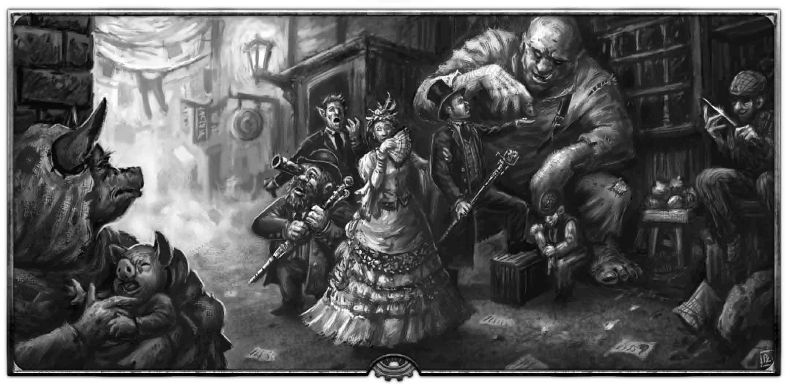
Upper class, lower class.
Collection One: Science and Sorcery in an Industrial Age
Sir Richard Arkwright, Father of the Industrial Revolution by Jonathan Sheffield: A newspaper interview with Arkwright, who is still alive in 1856 because he's an Eldren (he died in 1792). Despite being Eldren, he was born with no inherent magical aptitude and instead went on to invent the Spinning Jenny and other means of industrially-spinning cloth. His money would go towards investing in the steam engine (of James Watt who is now a Dwarf), railways and an invention called the Aerostat, a blimp that's basically 90% science with 10% magical components (and the cost of the magical parts is keeping it from being a cheap way to travel).So, basically, some machinery (like clockwork or steam) doesn't need magic to function but magic and technology can work together with no problems.
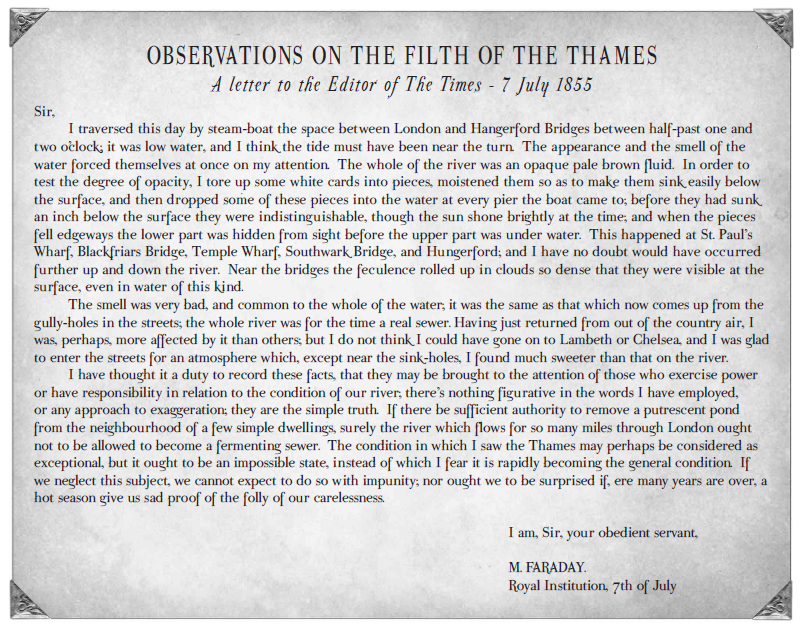
The Dying Embers by Sir Arthur Dee: I have no idea if this is supposed to be the son of John Dee because the only Arthur Dee I can find is John Dee's son who died in 1651 and would be way older than any species can possibly be by the publishing date of 1815. Anyway. The article is about the Consortium of Hermetic Guilds, a magical union that was formed in the aftermath of the Thirty Years War. It's essentially a cry for unity among magicians because magic is fading and has been; the Thirty Years War resulted in mass casualties across the board for magic users and magic has been weakening since the days of the Roman Empire. Dee is afraid of science supplementing magic and believes that without magic users being able to keep the aristocracy afloat, something worse than the American and French revolutions will come. It will. It's called World War I and the October Revolution.
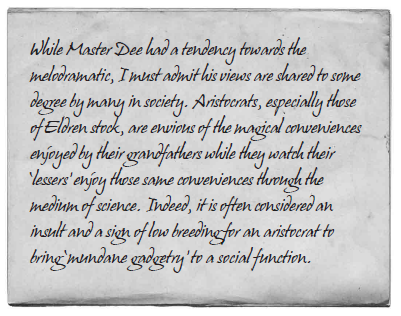
On the Origin of Sapiency by Charles Darwin: Subspecies can interbreed. A Ogre can stick it to a Gnome if they really feel so inclined and pray for the mother's survival. The changes are generally cosmetic; some people are born Eldren, some are born with the head of a lion. There are some physical differences and some mental differences, but none of the subspecies are truly separate. What complicates things are his tentative, not-yet-published idea of evolution and the fact that there really are godlike cosmic beings in the mix. Popular theory is that the Heavens created the Eldren and the Steppegoblin first. Darwin himself posits that Beastfolk are where you have to look to understand where the subspecies came from, believing them to be a step up from regular animals.
Aether for the Masses by Analise LaFayette: Manipulating aether is the basis of magic and it's been around as long as we've been able to control fire. The first masters of the craft made themselves out to be gods and kings (then advisors) and the Roman Empire was home to sights like entire legions being teleported to Gaul and flying airships. The big downside of magic is that these major feats require a lot of energy and this has had two results. First, the energy cost has kept these marvels from being mass produced. Second, because of the cost most people have just gotten by with limited or no access to magic. The Industrial Revolution has been a boon for magic users and the common man alike because it takes less magic to crank a handle than it does to fly an airship. In fact, technology is quickly becoming the great equalizer, giving the masses access to something that levels the playing field. A fireball is flashy, but a gun is quicker.
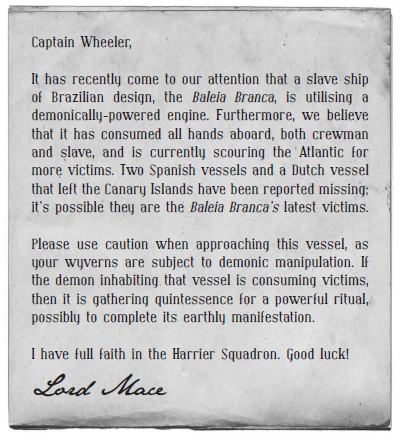
Conquering the Oceans by Hiram Findley: Because the aerostat can't really be mass-produced or turned into a cargo vehicle, ships still rule transportation and shipping. The Suez Canal is open and Isambard Brunel (real person, now a dwarf) has invented a steam ship capable of traversing the Atlantic in two weeks.
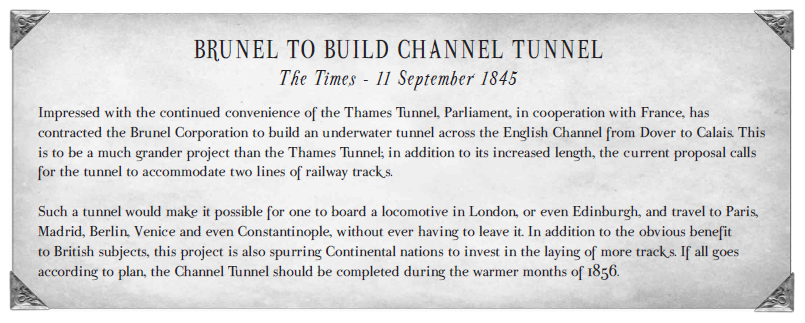
Yeah, good luck with that buddy. The Chunnel actually was proposed on and off a few times through the 19th century but things like global wars and the collapse of the British Empire got in the way until the late 20th century.
The End of the Wyvern Age? by Ronaldo Esteban Gomez Blanco: Before the aerostat, the sky was the realm of people riding griffins, rocs or wyverns (or the occasional person on a glider lifting it with magic or the flying carpet). The piece is mostly about the aerostat and it's your general of "NEW TECH" puff piece. Of note: countries are experimenting with armored aerostats in war (mostly as troop transport but now they're considering putting artillery on them) and there's also the invention of the ornithoper (better known as "that flapping wing thing with a bike attached").
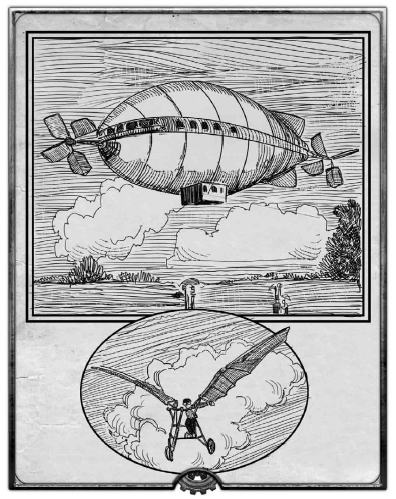
An aerostat and a flapping wing thing with a bike attached.
A Luddite's Perspective on the Iron Horse by Aiden Finnegan: GODDAMN RAILROAD IS RUINING BRITAIN AND THE COUNTRYSIDE THINK OF THE BEAUTY OF NATURE AND OUR CHILDREN

New Prime Movers by Regina Pembrooke: The main forms of energy/engines in the past were muscle, water, wind, clockwork, aether and clockwork mixed with aether. The new kids on the block who are revolutionizing the world are steam, electricity (thanks to John Wellington Starr, real person) and internal combustion. Steam is the most popular at the moment (no longer needing to rely on bound elementals), electricity is limited to some streetlights and combustion no longer requires a bound fire elemental but is currently limited to weapons and the engine is in prototype stages.
Means of Communication by Nathaniel Portence: Telegraph or Royal Mail, basically. You can also use familiars or magic but those are less fast. England is working on laying a cable to the Americas for the telegraph.
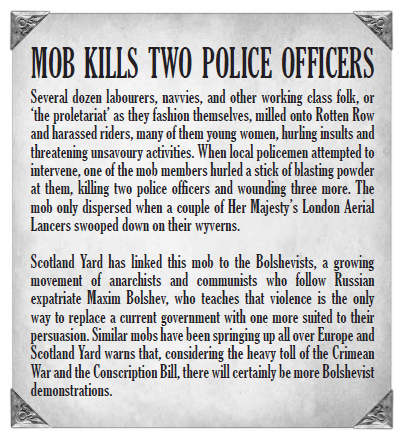
The Secret Society of the Telegraph by Nathaniel Portence: Uh. You basically need a chain of operators receiving and relaying messages to keep the signal going strong to get it to its destination. Not sure why this article needed to exist.
An Analytical Engine: Bringing Order to Entropy by Ada Lovelace: Charles Babbage (now a gnome) is planning on unveiling his new analytical engine that runs on punch cards and such.
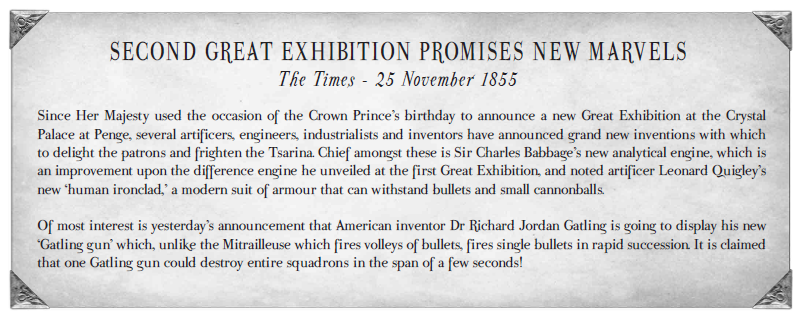
War Veterans Get New Limbs by Thomas Fordham: And they're clockwork limbs. They're not cheap and are being sold by the East India Company at a discount to veterans of Crimea or given for free through government grant.
The Poor State of Medicine by Florence Nightingale: So yeah turns out even with magic, medicine is still pretty awful and cholera is still a major issue. It's going to take a lot of snatched corpses to improve things (that's not a joke. As sinister as Resurrection Men were, providing bodies to doctors was one of the biggest things that helped 19th century medicine improve).
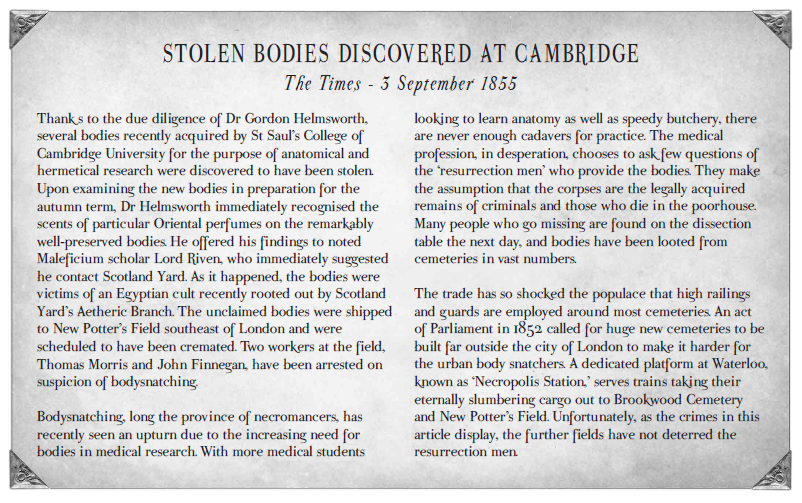
The Growing Storm of Industry by Richard Morton: Automated factories are handy but they only mass-produce mundane goods, make a lot of pollution and are putting workers on the street.
Collection Two: Religion
This entire section is from "Many Archons, Two Forces" by Elaine Hahn and no other sources, so I'll drop the bullet points for here. Victoriana runs into the problem that I see a lot when someone decides to just start forcing godlike beings existing into a situation based on real life: it raises a lot of questions and has a lot of implications if higher powers actually exist. Let's step back from the religious systems real quick. There are two fundamental forces at play in Victoriana: the Heavenly Host representing Order and the Pale Legion representing Entropy. Science is on the side of order, magic is on the side of entropy. You can't have one without the other and if one side was to stamp out the other, Very Bad Things would happen.
But this is a game that includes analogues to the Abrahamic religions and all that, so how does that come into play? Well, the gods of the polytheistic religions are counted as Archons of one side like if they were players on the same team, so Jupiter and Odin and the Archangel Michael are all Archons of the Heavenly Host.
ALUMINAT
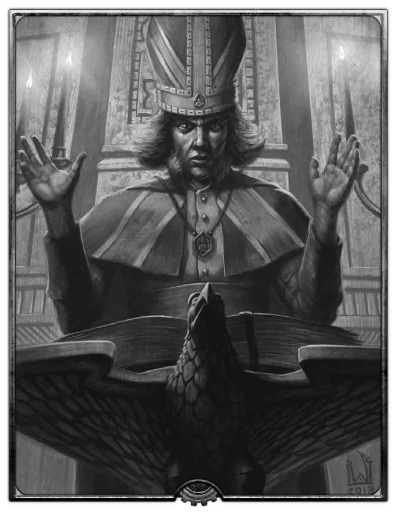
An Anglican Aluminati clergyman. I'm not well versed in real Anglicanism so I'm not sure what position he holds but if I had to guess I'd say he's a bishop. Either way man he sure looks friendly, don't he.
I'm not spelling that word out every time so I'm calling them the Als. Their name is a spin on the word "illuminatus". The Als are Christianity But, following the Aluminati Codex which is made up of the Yehudi (Jewish But) Books of Order and nine books written the Eight Voices (and the last is probably written by Jesus but the author is unknown).
What happened was that eight Archons visited eight people across the Middle East on a day between December 24th and December 31st. The eight (Jonathan, Justas, Kedron, Matthias, Simon Paul (Roman), Tamit (Egyptian), Tecla and Xanthos (Greek)) were tasked with reforming the Yehudi religion because the Archons believed it was corrupted by the dark side of sorcery (demonology and necromancy), thus starting Year 1. So the Eight Voices travelled across the Middle East together, casting out demonologists and necromancers and accusing the Romans of being corrupt sorcerers (they only got away with the latter because Simon Paul was a citizen). A rebellion against the Romans leads to 50 years of fighting against them, Justin and Tamit are captured and executed and return as Archons to advise the other six, and the rebellion is crushed in 70 CE. In that year the Eight Voices returned to their followers as Archons and preached to spread their works. Then Constantine ends up making the Al the religion of the Empire, the Council of Nicaea codify the Codex and the rest is history.
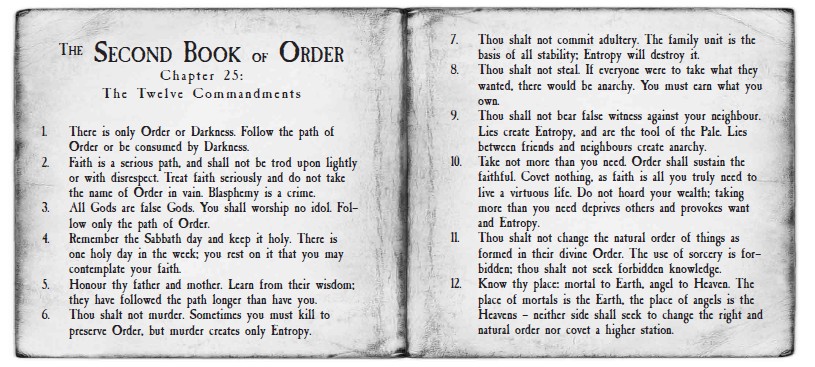
These apply to the Yehudi as well.
The basic tenant of Al is to believe in Order and uphold the commandments, abandon sorcery and build a united world. This is the main doctrine of the Roman Al but because people interpret things differently, it's splintered into the Romans, Scottish and Anglican Als of England. Presumably there's also Eastern Orthodox, Pentecostal, etc. elsewhere. The closest thing to the Vatican is the Conclave of the Roman Aluminat, a council of cardinals that meet in Rome.
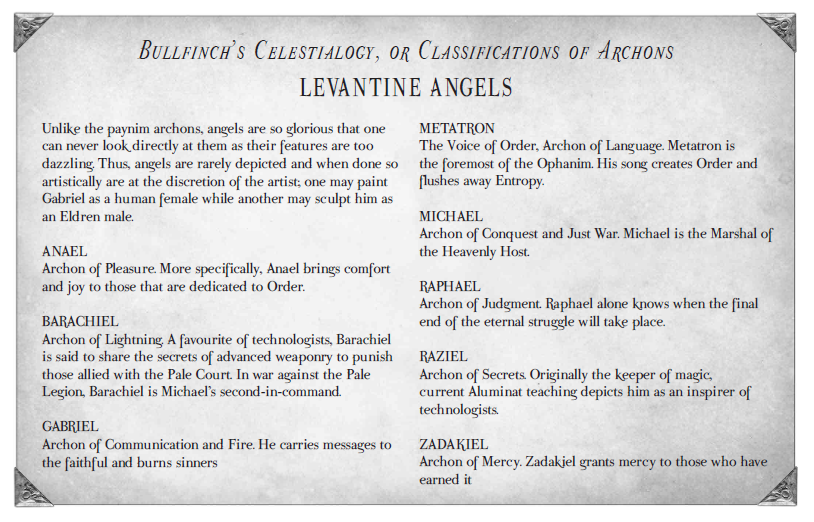
SONS OF DAVID
The "Sons of David" is a term used to refer to both the belief system and the Yehudi people, who are stand-ins for ethnic and religious Judaism. The Yehudi people lived between the Egyptians and the Persians and before the Archons sowed the seeds of the Al, they sent eight Archons to visit both nations and the Yehudi. The Pharaoh Akhenaton was told to reject the Egyptian pantheon and this actually "happened" in real life; Akhenaton did reject the pantheon and started worship of the sun Aten alone, going so far as to build a new city as a new capitol. For you Fallen London fans, said city would become the Second City and bring about that whole headache. The Persian priesthood (the Avesti) also got the same treatment and so did eight tribes of the Yehudi.
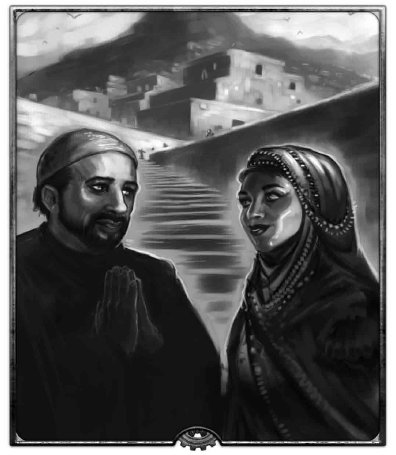
This didn't go well for the Egyptians or the Persians. Like real life, Akhenaton's change was not popular and was abandoned after his death due to lack of interest. For the Persians, they were doing fine up until they went to war with the Greeks and the Greeks won. Soon the Yehudial religion was the only one still following the Archons and now they were surrounded by Romans. The name "Sons of David" stems from a sign of defiance against the Romans and the wish to be an independent state. Then the Eight Voices start a rebellion...and it fails. As a result, a lot of Yehudi abandon the message of the Eight Voices because they failed in their rebellion so it wasn't right. And then things get worse because they're Judaism But and this is the ancient world. First, the Ninth Book paints the Yehudi as complicit in the capture and execution of the Eight Voices. Then Roman persecution comes down hard and forces some of the tribes to flee. Then Al picks up in Europe and quickly becomes the dominant religion and continue the persecution.
The Sons of David continue their worship despite being a marginalized group. They follow the basic rules of Order and everything in the Books of Order, but have added their own books and interpretations.
FOLLOWERS OF THE WORD
And hey, now it's time for Islam But to show up. Around the year 500, the fallout of the Roman Empire has lead to a power vacuum in the Arabian Peninsula and this inspires the Pale to try and launch an attack to take over the world. To counter that, the Heavenly Host send eight Archons to eight desert tribes and brought the Word with them. The Word is an oral distillation of the Aluminat Codex, making everything a lot more clear and straight-forward with less story and metaphor. The Blessed Eight united to purge and unite the Peninsula...and then turned on the Als. It's believed that the Host gave the Blessed Eight the Word in an attempt to clear up any errors or misconceptions and that the Blessed Eight would join the Als to fix and unite the faith. This didn't work! The Als think the Followers are heretics and the Followers think the Als are propping up a corrupt form of worship. The Crusades did nothing to lessen this divide between them.
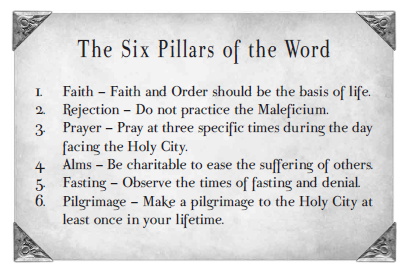
The Followers continue keeping the Word alive as an oral tradition, considering it blasphemy to commit it to paper. The only exception is that the position of how the Word views certain things can be put to paper but not actual verse or scripture: nothing verbatim, just opinions or stances. All Followers have the Word memorized and are expected to recite its prayers and passages three times a day.
PAYNIMRY
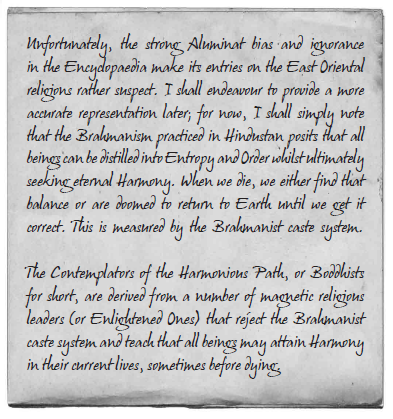
Here there be pagans. Paynimry is a blanket term applied by the Al to any religion that isn't the Aluminat. So, technically, the Sons of David and the Followers of the Word count as paynim. In actual execution, paynimry refers to actual pagan religions where there's worship of old gods or archons not affiliated with the Host, counting the latter as calling on Entropy instead of Order. As a result, the Celtic religion and Norse count as pagan religions.
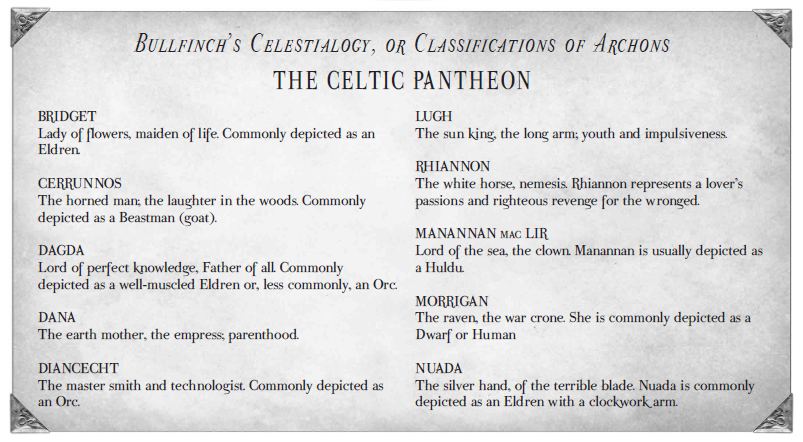
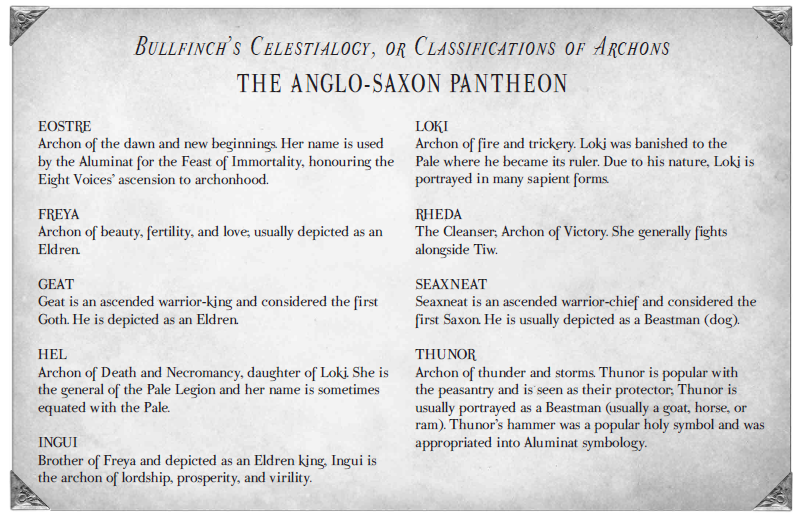

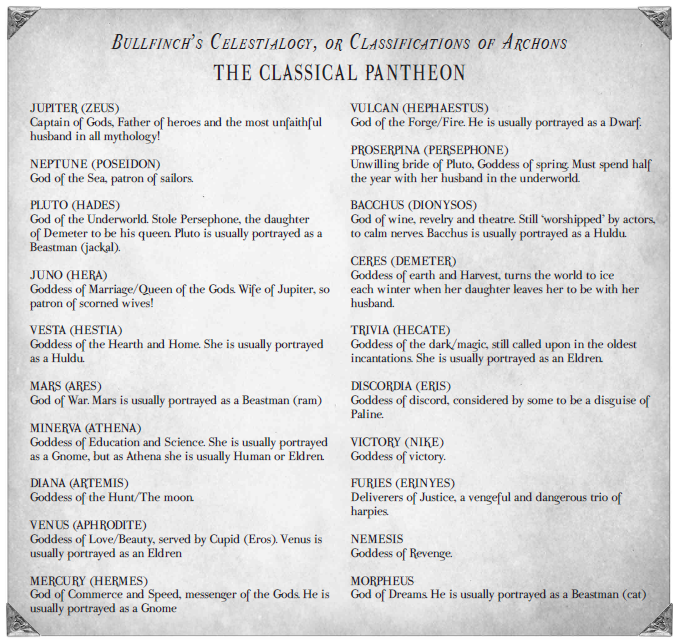
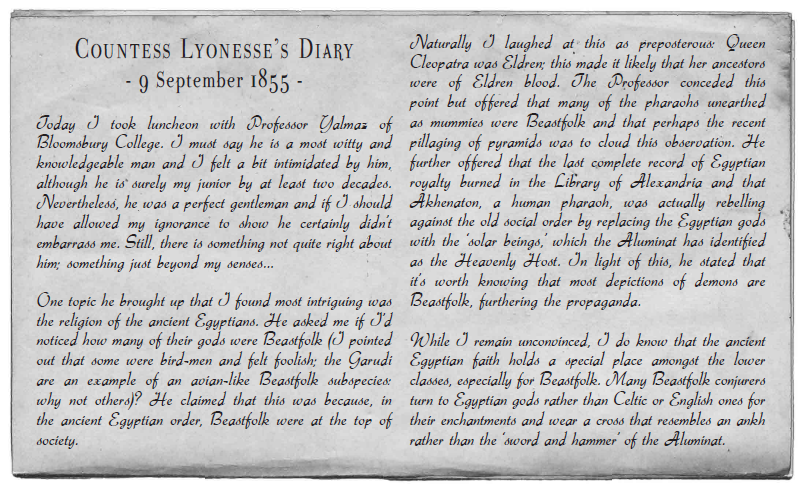
THE PALE
The Pale is another dimension that's bound to Earth through the Aether. Nobody's really sure what it is, but they do know it exists. The Pale could be a prison, a soul magnet or just a place where the pagan gods reside.
What is known is that demons and devils known as the Pale Archons live there and they used to be buddies with the other Archons. Before the formation of the Pale and the Heavenly Host, all Archons lived together undivided until the Pale Archons got kicked out for corrupting too many regular souls. The demons, lead by Paline, knew they couldn't take the other Archons in a fair fight so they attempted to ensnare and corrupt souls for their own use in an army. They only nominally serve Entropy, not considering themselves beholden to any higher power, and are really just interested in turning the Earth into a paradise of sin. Each demon has a parallel sin, though it's just a nominal thing imposed by the Als.
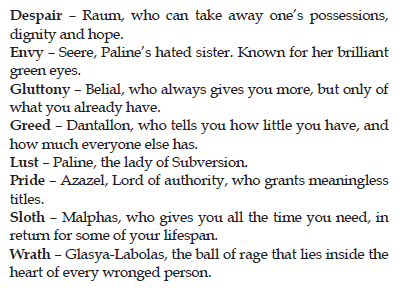
On the other side of things are the devils. The devils are Archons who didn't get kicked out from the word go and ended up getting cast out when the Heavenly Host had the Great Flood happen for absolutely zero discernible reason. Led by Lucifer, the devils have a bit of Order still ingrained in them and the first thing they did was build the brass city of Pandemonium. While the demons are aimless and in it for sin, the devils have their own form of Order they'd like to impose on the world.
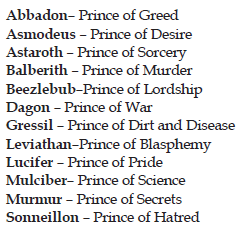
The presence of the devils is a threat to the demons because A: the devils outnumber them and B: souls drawn into the Pale tend to drawn to the familiarity of Pandemonium than the chaos of the demons. So Paline seduced Lucifer to ensure an uneasy truce between the two groups. They're still together, and they still like each other, but they still want to see the other go down and rise triumphant.
And that's it for the first two parts of this chapter/book. Let's take a minute to discuss this.
Thoughts
FFFFFFFFFFFFFffff god that was fucking draining to all put to paper.
So Victoriana leans way too hard on the Historical Fiction side of things and it's just annoying and draining. It feels like I just slogged through a textbook. None of it really feels organic, it's just "okay this famous person isn't human anymore, now there are clockwork limbs, now there are wyvern riders". It's just...rough going and it raises So Many Questions, especially on the religious side of things. It just doesn't feel new or fresh because it's just too much of a slave to the Historical Fiction side of things than the Fantasy half.
Next Time: society, also maybe the countries? I don't know, the latter is a bit heavier than the former.
BOOK ONE: Part Two
Original SA post
BOOK ONE: Part Two
Or
Even More "Pronoun But"
SOCIETY
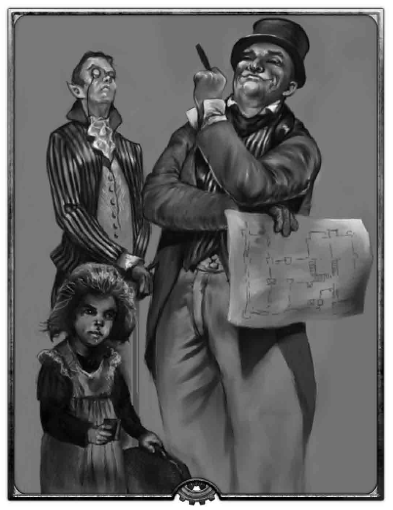
Hey kids, let's play "guess the social class"!
So I'm an American and I was born in 1990. I have a much more different view of society than a Victorian British person would. Basically, British society's stratification isn't just money; it's mostly land, property and breeding. In the real life sense, this meant a lot of fucking your cousins to keep power in the family. In the sense of this book, this means that by Victorian
Upper Class
The Upper Class
Things ain't great for women. If you're a normal woman, you host parties, balls and look pretty without saying anything. If you have magical aptitude, you get to go off and study that. Or you can go off and become an adventuress. That's it.
Middle Class
Upper middle class folks are bureaucrats, military officers, educated professionals. The majority of middle class people are magicians, bankers, factory owners, people with a good education. Lower middle class contains shopkeepers, missionaries and clerical workers. The middle class is less beholden to the rules of society and socialization so they can mostly just do their own thing. Women are still expected to get married, pump out an heir and run the home. Women can work but it's viewed as being cruel to them. The main exception is if they know magic, then they're viewed as competent and people will step out of their way. Women are also among the biggest innovators in technology.
In addition to going abroad for missionary work amongst the "heathens" by spreading the word of the Aluminat, a lot of middle class people like going to India. This is because they get a taste of social freedom and because their empire is doing shit to India, white foreigners are now King Shit of Calcutta and get to live the upper class dream.
Lower Class
The lower class makes up 75% of the population of England and the majority of the subspecies. Education isn't good among them and child labor laws don't exist yet. People who would have grown up tilling the lands in the country have fled to London to lose limbs in industrial machinery. Because of this flight to the city, life has gotten harder in the rural environments of London Upper lower class has artisans, bakers, skilled laborers. Women work but tend to get paid less than men. Also your life expectancy isn't great due to pollution, risk and hard living.
Etiquette and Fashion
Yeah uh. I don't feel like including all of this. It's Victorian England, you know just what's in here. Really the only thing that's interesting here is that it's not frowned up for two married Eldren to divorce or for an Eldren to have a sort of low-key party after their not-Eldren spouse dies, they finish grieving and they put themselves back out in the world.
THE WORLD
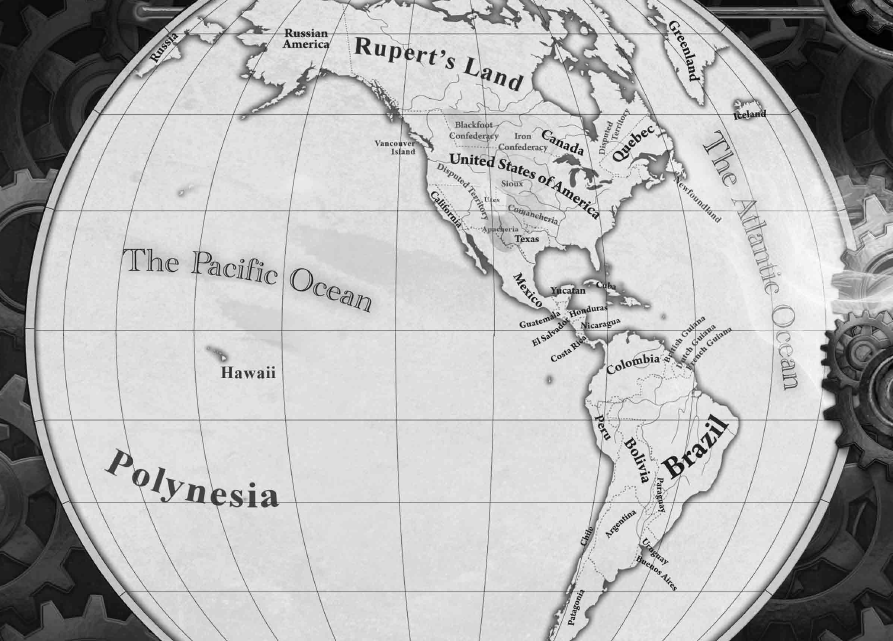
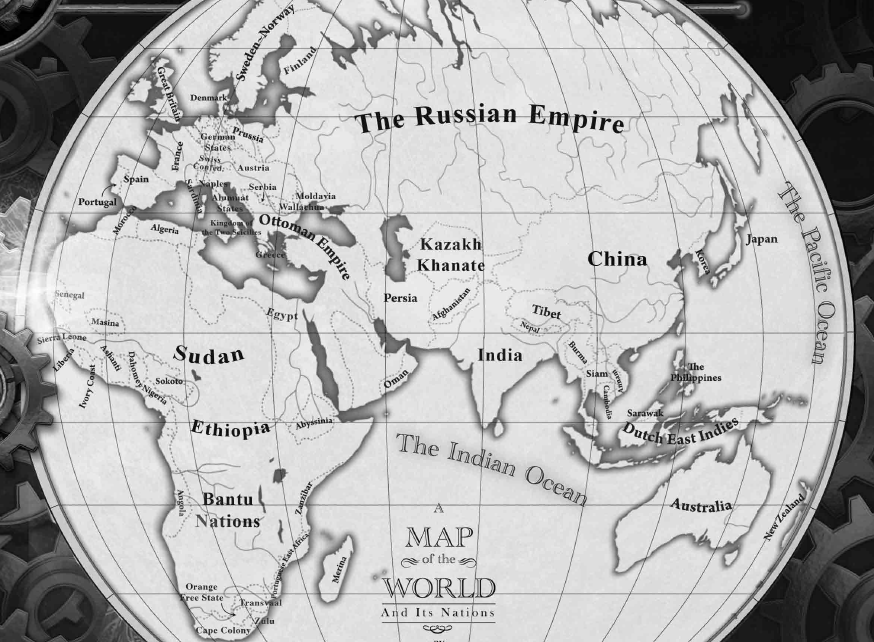
Not all of these appear in the book. Also, Kvenland is lightly cut off there in the north from the picture I took.
Today we're going to play a game called "is this a real thing?" and I will be doing my best to make 22ish pages of countries tolerable.
EUROPE
Great Britain: Britain is at war with Russia in the Crimea. This is the main thing going on. Britain is made of Scotland, Ireland and Wales and is ruled by Queen Victoria who is an Eldren. Sickness, pollution and crime are becoming major problems and the British people are pretty patronizing towards other nations and their beliefs.
Ireland: Ireland really doesn't like being part of the United Kingdom and the Time of Troubles and Potato Famine are less than a decade old. Most of this article on Ireland is the history of the acquisition of Ireland. Because Ireland has been suffering and there's a general poverty, a lot of Irish are either leaving for America, Australia or New Zealand or being shipped to London to become cops, soldiers or laborers. Also they have a growing Irish republican movement.
France: The Revolution killed most of the Eldren aristocracy. Then Napoleon (now a dwarf) took over the First Republic, turned it into an empire and then lost it at Waterloo before being sent to St. Helena. His replacement, Louis VIII, was chased out of France after a second revolution in 1848 and now France is in a Second Republic ruled by Louis Eugene Cavaignac instead of Napoleon III. Since France has been spent from fighting the Napoleonic Wars and from helping in Crimea, most of France's efforts are directed towards maintaining their colonies and worrying about Prussia. Is this a real thing? Well, originally Napoleon III turned the Second Republic into a Second Empire which necessitated another war. However, it looks like the Second Republic is going to fall apart under revolution because Cavaignac is not a popular ruler. The people feel like he manipulated them and France's poor showing in Crimea isn't making him any friends, so it looks like the rise of the Third Republic is going to happen anyway, just not with another Napoleon involved.
Spain: Spain is ruled by Isabela II (a Huldu)who is disliked for her heritage, her religious preferences and the fact that people think the throne should have gone to the late King's brother Carlos due to law. People sympathetic to Carlos have attempted two failed revolutions and might be planning a third. Most of the info on Spain is just a lot about how the government is unstable and basic knowledge of Spain. Is this a real thing? Yes, Isabela II was a real person and Carlos did attempt civil wars against her rule. They succeeded on the third attempt.
Portugal: Portugal is dealing with the fallout of the reign of Miguel I and his deposition by Maria II. It's more complicated than that but I'm not really familiar with this history; long story short Maria was supposed to be the Queen and Miguel stole the throne with the help of the Aluminat. The current ruler is Maria's son, Pedro. Portugal's doing alright, all things considered. They're leery of the Aluminat and they still have their colonies. Did this happen? Yes.
The Low Countries: Holland, Belgium and Luxembourg are united under the Dutch Republic, aka the Low Countries. Holland's dominance of the seas collapsed and their Indian Companies had the bubble burst and then came Napoleon. Now Belgium has its own independence and the Dutch Republic is learning a lot from Prussia. Belgium is continuing its appalling treatment of its African colonies as well as trying to remain a neutral party between Europe and Russia (Leopold is related to Victoria's husband Albert but he was involved in Russian military affairs).
The Scandinavian Confederation: The SC is made up of five nations loosely connected. Denmark, Finland, Kvenland (real country, now defunct with its land divided up), Norway and Sweden are the members of the coalition. Finland is under Russian control while Norway and Sweden are ruled by the same king. The entire confederation was made in response to the German confederation to help protect Scandinavian interests and as a result they're butting heads with the Prussians. The only real interesting thing is Kvenland. Kvenland is an isolationist nation of Beastfolk, Giants and Dwarves ruled by a Giant king. The only reason they're in the Confederation is to keep people from fucking with their countrymen.
The German Confederation: The GC is made up of many small states leftover from the Napoleonic Wars and the remains of the Holy Roman Empire. Austria was in control of the GC, but now that mostly falls to Prussia under the control of Friedrich Wilhelm IV. But Friedrich is a Boarman Beastfolk, and his subspecies has resulted in powers like Britain dismissing him as any kind of threat. He has the help of Otto von Bismarck to control Germany and King George V of Hanover and his clairvoyant powers supporting Austria. This all pretty accurate except for Friedrich being a Boarman and King George having clairvoyance.
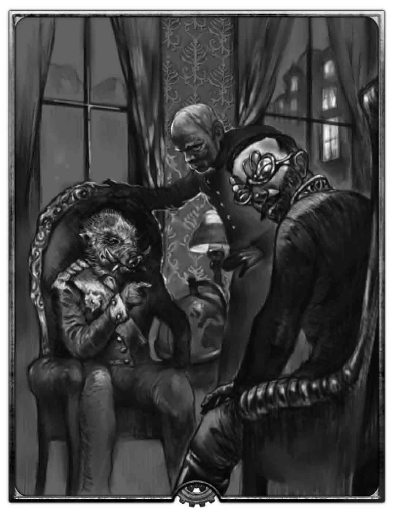
Friedrich Wilhelm IV, Otto von Bismarck and George V who is wearing his magical glasses that let him see despite his blindness. No I'm not kidding.
The Swiss Confederation: A collection of small groups that are now neutral and revamping their economy to use one currency. Not much happening in Switzerland that I feel is worth mentioning.
The Austrian Empire: Klemens Wenzel von Metternich (now a gnome) and Franz Karl I run Austria with Franz letting Metternich do his own thing. Austria's mostly focused on solidifying its power within its area and that's really it.
The Italian States: Sardinia wants to unify the states and bring it back together into one kingdom under the control of Victor Emmanuel II. The Kingdom of Two Sicilies, ruled by Ferdinand II, would rather rule all of Italy. Then there's the Aluminat States in the middle and how everything else is ruled by Austria.
Greece: Ruled by King Otto, they're trying to steal Constantinople from the Ottoman Empire. Also Lord Byron fought in the Greek War of Independence, which is actually true but hardly relevant to anything.
Russia: Russia is controlled by Ekaterina I, or Catherine the Great if you're more Western. She's a Steppegoblin which is basically a type of Eldren. Her first husband, Peter the Great, got her on the throne and then died five years into their marriage. Because she's a Steppegoblin, she's still ruling Russia and for some reason every husband she's had has died within five years of marriage. She's done a good job of making women equal to men and for keeping the serf class oppressed while modernizing Russia. Nowadays her, uh, eccentricities are catching up with her and her daughter Princess Nadja is the face of Russia. Russia is known for being weak in tech and rich in magic, making them a force to reckon with in Crimea.
The Ottoman Empire: The good days are far behind the Ottomans despite Sultan Abdulmecid I's attempts to modernize. The war in Crimea is threatening their control over the area around the Black Sea, Greece has become independent, Balkan nationalist movements are threatening more uprising and Russia is waiting to sink its teeth into the empire like an alligator and bust out the death-roll.
THE ORIENT
Note: you should not call this area "The Orient" anymore. The area contains the Middle East and the Pacific nations as well as India and China.
Persia: Originally the hub of science and intellect in the Middle East after the collapse of Europe during the Dark Ages, Persia has had some problems. The biggest problem is wars with Russia, which has been hungry enough for land and resources to push aggressively and cause Persia losses which have made countries start to consider Persia as a target.
India: India is being exploited by the British through the East Indian Company and general British rule. Originally the occupation was tolerated, but now the commute between nations has gotten shorter and the British have gotten more pushy and intolerant of Indian culture. A rebellion is certain.
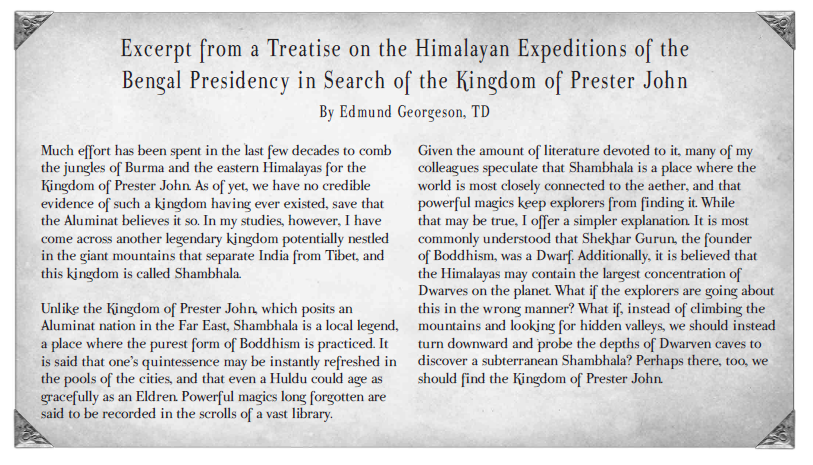
China: The Manchu Dynasty (really the Qing Dynasty) is in charge of China. 20 years ago they lost the Opium War to the British who have started to flood the nation with missionaries, trading post and cheap Afghan poppies. China possesses a strong magical background, like the Mandarin Sorcerers, but modern weapons and tactics proved a bit much for them. Nowadays China has to deal with every major power forcing them to trade and keep the borders open. The other thing they have to contend with is Hong Xiuquan and his religious movement rebellion in the aftermath of the Taiping Rebellion. The Taiping Rebels are currently in control of most of South China, but there's 8 more years before they historically lose to the Qing government.
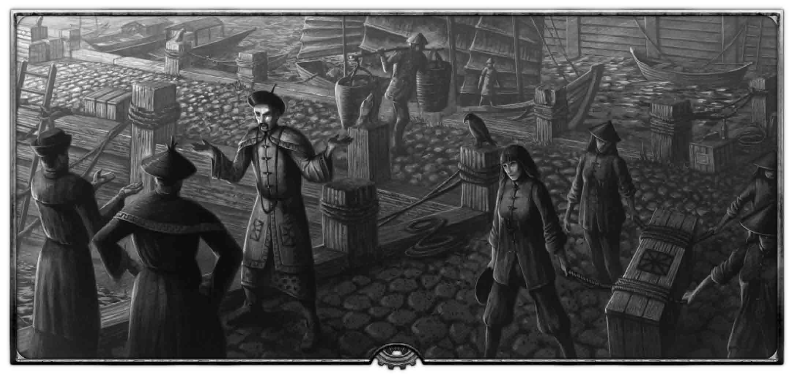
British merchants: no sense of right or wrong!
Japan: Japan has only relatively recently opened its borders to outsiders and that's only because American Commodore Matthew Perry forced them to at cannon-point. The Shogunate is still the real seat of power and Japan is home to the Oni, a sort of relative of the Ogre subspecies. Also the military is afraid of modernization.
Dutch East Indies: Better known as the islands of Indonesia, the Dutch East Indies are controlled by the Dutch East Indian company as the last true hold they have on the area. And it's quite a tight grip despite the threat of piracy.
Australia: The Aboriginals of Australia have a proud grasp of the magical art of magnetism aaaaaaand hello English colonists/prisoners. The colonization of Australia has had enough of a grip for 2% of the empire to immigrate to the island, mostly due to crime or because they're looking for gold. New Zealand is also being colonized and their relationship with the Maori isn't great either.
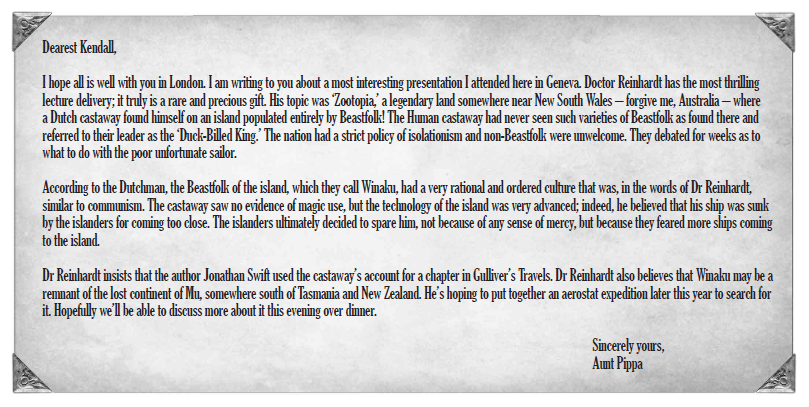
THE DARK CONTINENT
AKA Africa, you also should not call this area The Dark Continent anymore.
Egypt: Only nominally a part of the Ottoman Empire, Napoleon's invasion gave them the chance to become their own sovereign nation without declaring total independence from the crumbling empire. Britain has a fascination with Egypt and has dedicated time to putting money into the Suez Canal, hunting for treasure and
Ashanti Empire: The Ashanti Empire of the Gold Coast practices haemomancy and has a good hold on the magical arts along with the help of ex-Dutch East Indian vets recruited into their army. Britain would really like to conquer them. The nominal reason is that they still practice slavery but the real reason is because they're still sore about losing a border dispute. Was this a real place? Well, strip out the blood magic and you'll find that Ashanti Empire still exists, albeit with a different name and in a much smaller form. The entire empire is where Ghana is now but the monarchy of the empire still exists within Ghana as a nation state/traditional state protected by the government after the territory was freed from Britain in the 1930s.
Kingdom of Dahomey: Dahomey made a good deal of money off the slave trade which allowed it to expand into a proper power. Now that the trade is dying up, they're turning to opening their borders and selling palm oil. They're ruled by Eldren Queen Sinkutin who has an elite cadre of female warriors and the tenacity of Catherine the Great. Was this a real place? Yes, actually. Dahomey was located in modern-day Benin and existed until 1894 when the French annexed them after defeating them in conquest. They really did make money off slavery, they really were famous for elite female warriors and they were fans of traditional Vodun.
Sierra Leone and Liberia: Sierra Leone was settled from escaped American slaves relocated by the British. They have a pretty good hermetic college and magical tradition. Liberia was also colonized by slaves who adopted the American constitution to be the legal basis of their nation. They're doing their best, but both countries have issues with engaging in black market practices such as slavery. They both exist in the modern day and age but unfortunately I'm not as well informed on what they're like to give them a fair shake. The only thing I can tell you is that Raiden from Metal Gear Solid was a Liberian child soldier and I can't really call that historical fact.
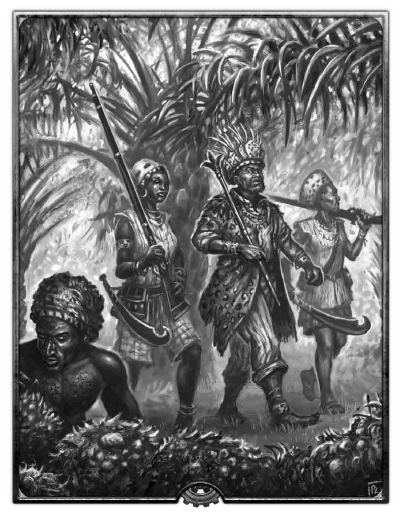
I really couldn't tell you which nation this is supposed to be because the book doesn't say.
Sultanate of Zanzibar: Sultan Mahid bin Sahid rules the Sultanate which has clove plantations and also slaves. That's pretty much it.
Kingdom of Merina: Really the only thing of note is that Merina is a country of Dwarves, Gnomes, Huldufolk, Karaka (a type of possible Eldren offshoot that is native to Africa) and Naacal (a sea-faring race of fish people). Also they trade slaves and are ruled by an Indonesian Karaka. Is this a real thing? Yes. The Kingdom of Merina is what is now known as Madagascar. Merina was pretty isolated until 1883 when the French invaded and then became totally annexed in 1896 after a decade of war and debate over Britain over who gets what. Britain walked away with Zanzibar instead of Madagascar. Sorry Zanzibar, should've mentioned this in the entry above.
Cape Colony: Formed by the Dutch before Britain got control over it, control over the Cape Colony also includes the Boers and native nations such as the Zulu. Britain is trying to woo the Boers back to the colony (they are currently in the process of settling elsewhere due to not liking British policy) and the Zulu Kingdom is ruled by Shaka Zulu who is now a Lion Beastman because why not. Some people might recognize Cape Colony by the name "South Africa" in the future.
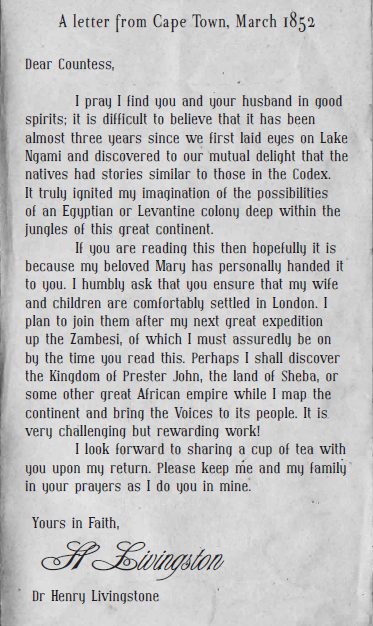
THE NEW WORLD
Hoo boy. So fun fact: healing magic of the Americas was not used to healing European diseases so the intentional/unintentional genocide of the American Indian still happens. In 1856, pretty much most of North American history happens albeit with some slight changes. The following changes don't get much play later in the chapter so I'll share them here.
- Quebec successfully secedes from Canada and forms the Kingdom of Quebec under the control of King Louis VIII/Louis Philipe I after the 1848 revolutions kick him out and form the Second Republic. This is not something that happens in the real world, for reference.
- The Republic of California is formed and still around. While this actually happened, the Republic lasted 25 days in 1846 because the Mexican-American war intruded and American forces setting up shop in California and flying their own flags meant they had technically been put down by the American military. The only thing the Republic of California is known for is the Bear Flag.
- A lot of nations in South America are becoming independent due to a mix of the French, Spanish, British and Portuguese losing their colonies.
- The Republic of Yucatan is formed and is friends with the Republic of Texas, keeping the Mexican forces at bay. The Republic of Yucatan was in fact a real nation (first in 1823 for 7 months, then from 1841-1848). It was in fact friends with Texas and this formation helped spark the Mexican-American War. It's still around because Mexico lost control over the Yucatan as a result of the war unlike real life.
- Nicaragua is ruled by an American by the name of William Walker. This actually happened, due to the practice of filibustering. Filibustering, in the military sense, meant to mount an armed insurrection in a foreign land for personal gain and for governmental gain. In essence they're like freebooters. Anyway, William Walker was in fact president of Nicaragua for a year, 1856-1857, with the help of private mercenaries. He was overthrown by the militaries of Honduras, Guatemala, Salvador and assorted Costa Rican efforts. The people of Nicaragua also hated him because Walker treated them awfully; he was a physician and lawyer and overall prodigy who thought he knew more than he did and developed dumb ideologies he decided to execute by attempting to create a slave-holding empire under his/American control in South America. He escaped Nicaragua in 1857 to the American Navy, who brought him back. Up until his death in 1860, he spend the rest of his life repeatedly returning to South America to try and attain his dream. He was eventually captured by the Honduran military who chose to execute him by firing squad instead of listening to America's demands that he be returned. In Costa Rica, April 11th is a national holiday commemorating a military victory against Walker and President Juan Rafael Mora Poras and soldier Juan Santamaria are national heroes for their actions against him. That was long-winded and indulgent and I apologize but I felt like including this legitimately interesting real piece of history before I go back to the boring fantasy stuff.
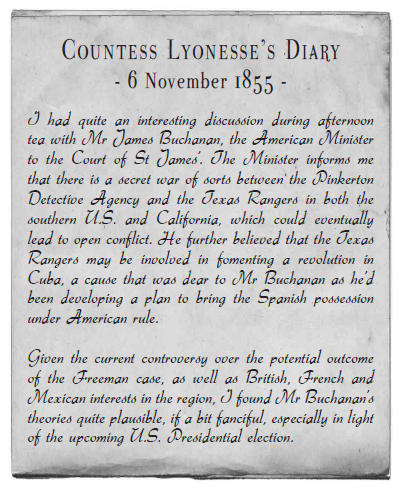
Republic of Texas: This also actually happened but it only lasted until 1846. They also support slavery along with California and Yucatan. The Texas Rangers are super sleuths and the government is set up so you can be elected as President indefinitely but you can only run after a term other than yours has passed (Sam Houston has basically won every election he's been able to run in). That's it for Texas! Kinda says a lot about how this game behaves like every other two-bit 19th century AU game: Texas is still its own country but they can't come up with a damn interesting thing about it.
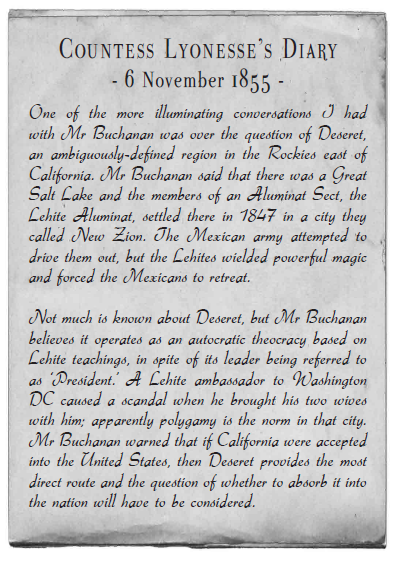
Comancheria: The Comancheria is not a proper nation but a confederation of American Indian tribes pushed west of the Mississippi or already living there. The Comanche tribe controls the Comancheria and gather the other tribes regularly to commune. They are not on good terms with the US, Texas, Yucatan, Mexico or California due to ignored treaties, trespassing and general violence. As a result, the US has to tread carefully when dealing with tribes that fall under the control of the Comancheria like the Ute, Sioux and Ute. Also the Eldren of the Comancheria are known as the Armouch/Blood Eldren for allegedly surrendering themselves to the Pale for power and they like to steal children. Y'know, your typical xenophobic rumor that's used as an excuse to steal land through force unless it's actually true but the book doesn't really say if it is.
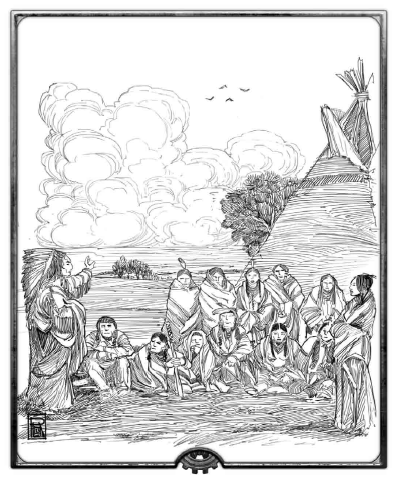
Mexico: First of all, the Aztecs probably came from Atlantis. Second of all, their encounter with the Spanish also didn't go well. Eventually Mexico becomes a republic after the rebellion against Spain lead by Aluminat priest Father Miguel Hidalgo. Also Santa Anna's failures were responsible for the formation of all of these Republics that folded already in our time. Santa Anna is still in charge of Mexico and that's really it to Mexico.
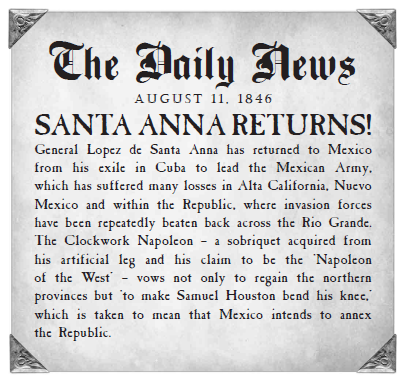
Republic of Columbia: Controlled by Simon Bolivar (who is an Eldren because, again, why not), Columbia contains Colombia, Ecuador, New Grenada, Santa Domingo and Venezuela. He made the government's structure with the help of Gnome Alexander Hamilton who is currently hanging out with him and running the government. This could not have and did not happen in real life; Hamilton died in 1804 in a duel against Aaron Burr but whatever now he's helping Columbia write their constitution with all of the ideas he wasn't allowed to use on the US. They're already working on trying to build the Panama Canal ahead of schedule and to overthrow that jerk Walker in Nicaragua. Did this really happen? Yes but it collapsed in 1830 and it most certainly did not have Hamilton.
Empire of Brazil: Currently under control of Pedro II, son of Pedro I who had to return to Portugal due to war, Brazil is the hotbed of education and magical learning in South America (so much so that the Hermeticist Guild is considering relocating there). They've overthrown the Argentinean government and Brazil is doing well for itself technologically. The empire is planning on exploring the Amazon deeper using aerostats and steamships to try and find a lost empire. So far they've managed to find tribes of female warriors and the nation of Patagonia, a nation of Cyclops who warn them not to explore further.
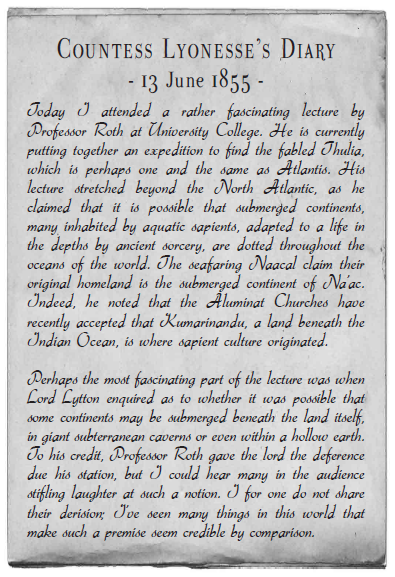
The State of Buenos Aires: Made from Argentinean land, it's engaged in economic warfare with Argentina while attempting to become as modern and tech-savvy as Brazil. They're not doing so hot but the Cyclops of Patagonia are helping.
Thoughts: Oh god why was I so damn thorough summarizing most of this, this was a huge mistake.
Did your eyes glaze over reading that because mine sure did. It's all pretty historically accurate up until we get to the Americas and consider the existence of magic but christ that is some dull shit. It's painfully dull and unimaginative and just so uninspired. Just, ugh. There was nothing that grabbed me in the slightest and through most of Europe all I could do was think "wow so it really is just our history but with Elves". It's not even suffering from the problem Unhallowed Metropolis had where I wanted to go somewhere else or what you're all mentioning in the thread where a better game would take place elsewhere in the shadow of the British Empire. There is barely anywhere interesting in the world to actually set a game, it's all just business as usual and the grinding march of history will just bring more war and atrocities and the modern day but with Elves.
I need to get some Tylenol. See you next time.
NEXT TIME: Book Two, character creation. Remember Rocket Age's character creation? Imagine that but not good or interesting.
BOOK TWO: Part One
Original SA post
BOOK TWO: Part One
Or
The Character Creation of Benjamin Button
So Victoriana does a Very Weird Thing and official character creation has you imagine your character’s current situation…and then work backwards. To wit:
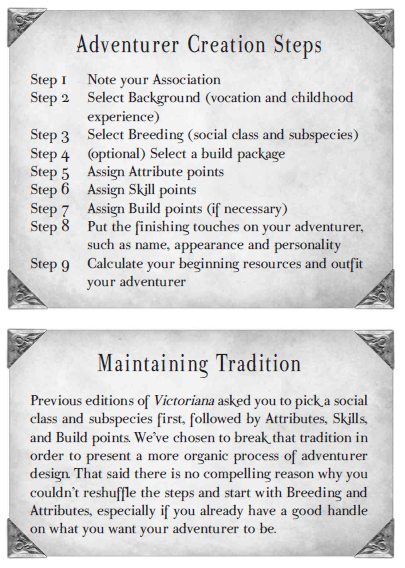
Because your Background options are dependent on your social classes, this is…very awkward in execution. It’s not really organic at all. Your average character creation system (that has limitations such as things relying on species and such) is like a tree. You grow from a seed you plant, be it a character concept or starting with a racial choice, then follow up the grown trunk and up the branches to pluck the fruit you want (the fruit in this metaphor being your finished character, the final result). The character creation this game proposes is backwards; it amounts to grabbing a branch, following it backwards then digging up the whole tree to carry it around and hit people with it. It just doesn’t flow or follow or make a cohesive sort of character.
Oh, as a side note: I won’t be including the nitty-gritty and cruft like what skills you get. I’m not going to go in much depth as I could.
ASSOCIATION
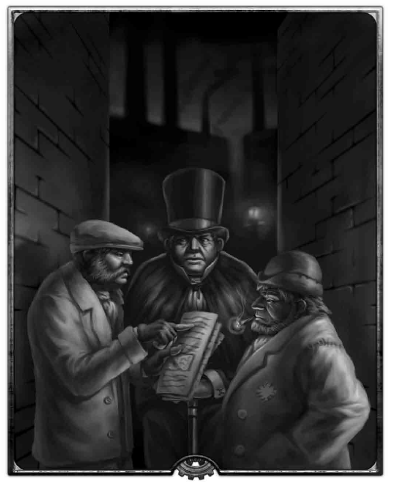
Associations are basically what your character does and what they focus on in this day and age. They can be changed to fit other interests and they’re actually not picked by the players. Associations are “not so much chosen as bequeathed” depending on what campaign they want to run based on player input. This is a good idea… in theory. In execution they just define minimum skills you get to have, offer you some things they recommend you take and kind of cut off the branches of doing anything else. It just reads as the first step of railroading.
The Cobblestone Club: A group of revolutionaries (socialists, communists, anarchists, other) who want to change the government to be more egalitarian, reform the law, etc. Because the government dislikes the scattered members of the Club and their mission, the Club has started to take more aggressive, violent measures.
The Havering Household: The HH is basically just a house of adventurers who are drawn to nonspecific adventures with the house as their clubhouse. Adventure just tends to find them.
Metropolitan Police, Aetheric Branch: MAGIC COPS. Enforce Magic Law and deal with Magic Threats.
Royal Geographic Society: Expeditions, archaeology and cartography up in this mother.
Royal Steam Lancers: Steampunk Mecha Adventures fighting all over the world, jackbooted thuggery with the help of a big metal shoe.
The Selenium: Ever want to be a Great White Hunter? Now you can! This includes monsters and supernatural beings that have a gigantic fear of the Selenium who tend to shoot first, mount trophies second and ask questions never.
The Society for Spiritual Repose: Talk to ghosts and put them to rest.
The Star Chamber: Espionage for Queen and Empire.
Willowpin and Associates: Detective shenanigans.
BACKGROUNDS
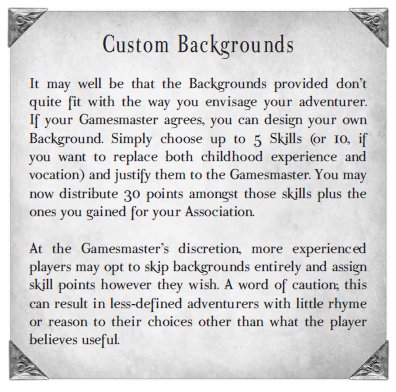
Your background determines what skills you have in addition to your important skills determined by your Association. You are advised to not game the system by picking the backgrounds but to try and get flavor skills. Also you should take vocations and childhood experiences that match the same social class unless you get special GM permission otherwise because that will affect your choice of subspecies/social class.
Vocations
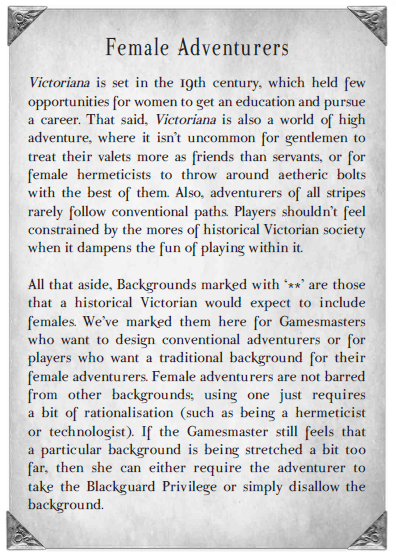
- Adventuress** (upper): LADY ADVENTURES
- Alienist** (upper/middle)
- Army Officer (any)
- Artist/Artisan** (middle/lower)
- Beggar** (lower)
- Bodyguard (lower)
- Bounty Hunter (middle/lower)
- Businessman (middle)
- Cabby/Coachman (lower)
- Clergyman (middle)
- Clerk** (middle)
- Costermonger** (lower)
- Cunning Man/Woman** (lower):
You’re an unlicensed street magician.
- Army Officer (any)
- Cutpurse** (lower)
- Demolitionist (lower)
- Detective (middle)
- Dockhand (lower)
- Engineer** (any)
- Explorer** (upper/middle)
- Factory Worker** (lower)
- Fireman (lower)
- Footpad (lower)
- Gambler (middle/lower)
- Governor/Governess** (middle/lower)
- Guild Associate** (upper/middle):
You went to university and managed to get a doctorate in Thaumaturgy along with a membership in the Guild. However you actually have to buy the ability to do magic and have a degree.
- Demolitionist (lower)
- Highwayman (lower)
- Journalist (middle)
- Itinerant Entertainer** (lower)
- Itinerant Peddler** (lower)
- Lawyer (upper/middle)
- Navvy (lower):
You do labor and demolitions for the railroads.
- Journalist (middle)
- Orderly (lower)
- Ornithopter Pilot (upper/middle)
- Physician (middle)
- Poacher (lower)
- Policeman (lower)
- Prize-fighter (lower)
- Prosthetics Surgeon (upper/middle)
- Prostitute** (lower)
- Railroad Conductor (middle/lower)
- Revolutionary** (middle/lower)
- River Pirate (lower)
- Scrapman (lower)
- Seaman (lower)
- Servant** (lower)
- Shopkeeper** (middle/lower)
- Smuggler** (lower)
- Socialite** (upper)
- Soldier (lower)
- Spiritualist** (middle)
- Spy** (any)
- Steam Driver (lower)
- Student (upper/middle)
- Thief** (upper/middle)
- Tosher (lower):
A tosher goes ratting in the sewers with the help of a knife and a small but vicious dog.
- Ornithopter Pilot (upper/middle)
-
Woodsman (lower)
- Wyvern Rider (upper)
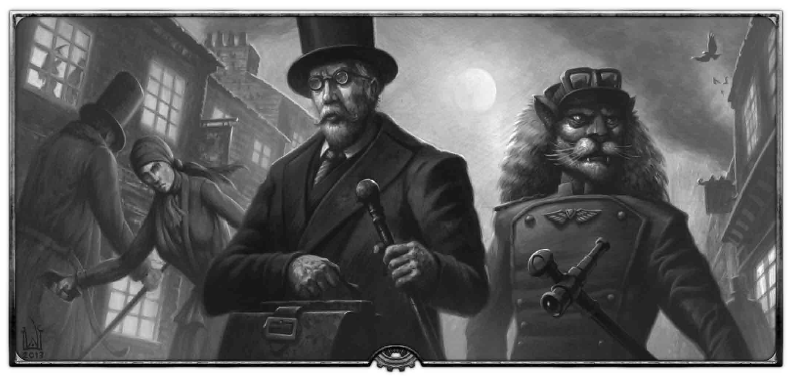
That’s 57 possible backgrounds for your character. Of those, 18 can be used by multiple social groups, 14 are for upper class people, 25 are for middle class, 39 are for lower class and if you’re playing a female character there’s 24 options. That’s a shitload of backgrounds! Then you get to pick what your childhood was like! Hooray?
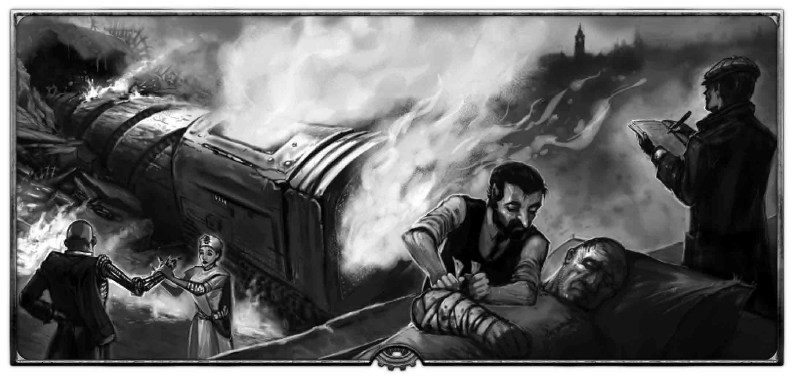
Childhood
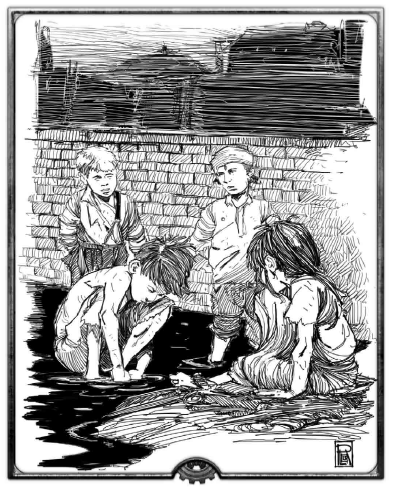
Fun fact: apparently childhood lasted until 21 in the Victorian era even though the age of sexual consent/marriage was…waaaay lower. Moving right the fuck along.
- Apprentice: Arts** (middle/lower)
- Apprentice: Industrial (middle)
- Apprentice: Textiles** (lower)
- Barrow Boy/Girl** (lower)
- Boarding School (middle)
- Cabin Boy (lower)
- Chimney Sweep** (lower)
- Church School** (middle)
- Drummer Boy (lower)
- Farm Hand** (lower)
- Mudlark (lower)
- Pick Pocket** (lower)
- Personal Tutor** (upper)
- Public School (upper)
- Rail Rat** (lower)
- Stage Hand** (lower)
- Steam Girl** (upper/middle):
You got an unofficial education in engineering and mechanics from your relatives and they also kept you around as an assistant.
- Urchin** (lower)
- Workhouse Poor** (lower)
- Apprentice: Industrial (middle)
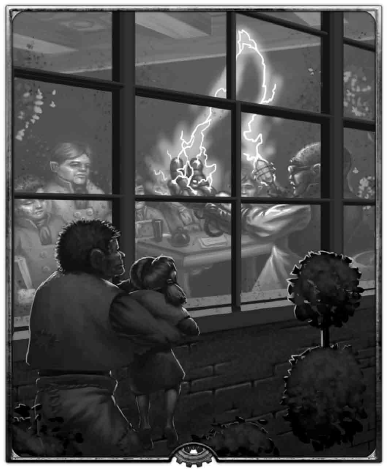
19 total possible upbringings. That’s 3 possible childhoods for upper class kids, 5 for middle class kids, 13 for lower class and 13 total choices for girls.
SOCIAL CLASSES
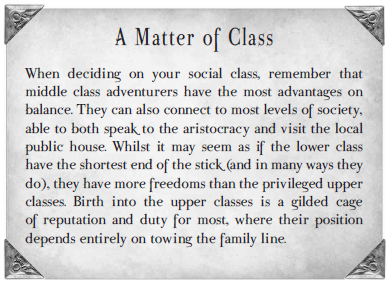
Yep, social classes get mechanical benefits. Also unless you buy a certain positive advantage (this game calls them Privileges) or beg the GM for leniency, you’re limited to certain choices for subspecies depending on the social class you get assigned. So ultimately it’s possible to have an Upper Class Ogre or Beastfolk…but the game does sort of carry that air of “you may technically belong, but you don’t belong” attached to the situation.
At this stage, you can also pick build packages to round your character out around a certain idea.
Upper Class: Upper class affords the character a comfortable house and the bare minimum amount of servants to staff it. You can take Assets to enhance your station and your pay. Upper class characters get -1 Fortitude, 20xWits cash in pounds and start every adventure with 6 shillings in their pocket in addition to Asset income. The default subspecies for upper class characters are Eldren and Humans.
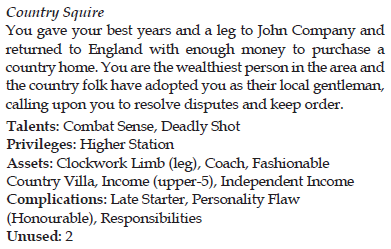

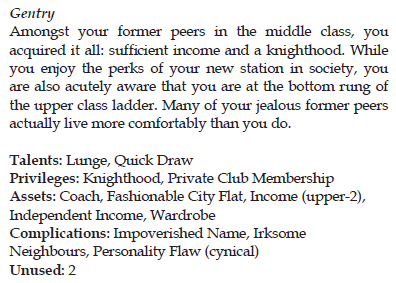
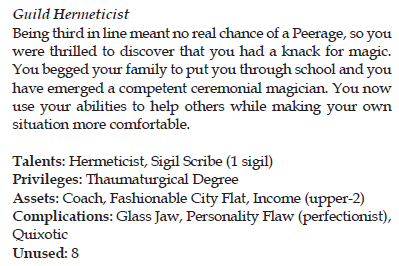
Middle Class: Middle class characters live in a rented flat in a boarding house unless they own any Assets. They have comfortable, worn clothes and a job. Middle class characters have no attribute adjustments, 10xWits starting cash and get 1 shilling at the start of each adventure before Asset income. Default subspecies for middle class characters are Dwarves, Eldren, Gnomes and Humans.
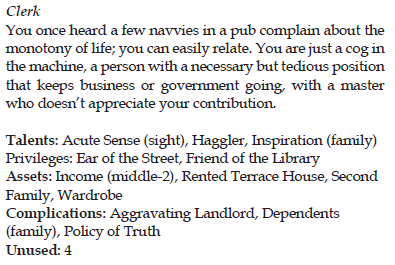

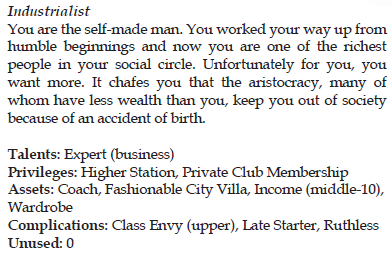
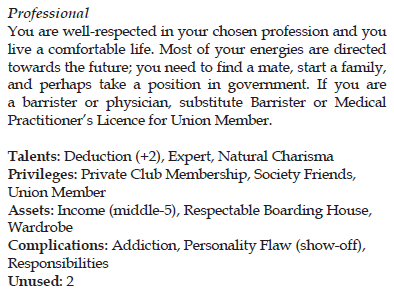
Lower Class: Without an Asset, you sleep on the streets or in a hostel or a hammock in a church. You probably get by on begging and you're likely fond of gin. You get +1 Fortitude, 2xWits starting pounds and the only cash they get is from Assets. Default subspecies for lower class characters are Beastfolk, Dwarves, Huldufolk, Humans, Ogres and Orcs.
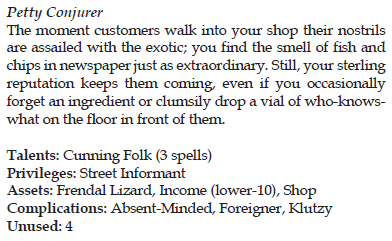
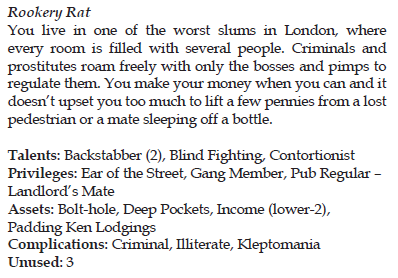
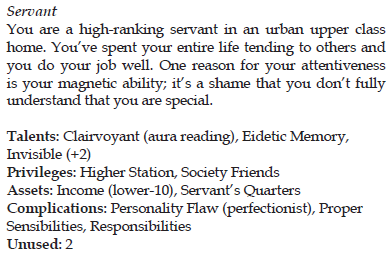
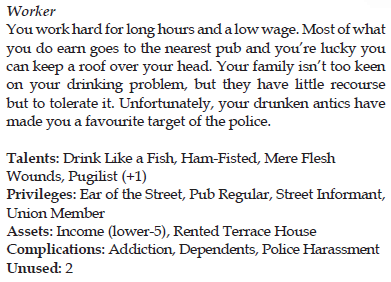
Thoughts: We're only three and a half steps into character creation and I have to stop here so we can look at the subspecies in depth. So far...ugh. There's just so much here and it's overwhelming and so goddamn counterintuitive.
NEXT TIME: All about Beastfolk in every form
BOOK TWO: Part Two
Original SA post
BOOK TWO: Part Two
Or
It's A Beast Update (But Not That Kind of Beast, Sorry Kurieg)
SUBSPECIES
Victoriana takes the Shadowrun route of having "humanity" be a big umbrella for sapient races that can interbreed with each other. Because the study of genetics has not really happened yet (Mendel begins his experiments this year in 1856 and won't print his findings for 9 more years), nobody really knows how subspecies works. Essentially, your subspecies is just another genetic trait passed down by your parents like your hair color or eye color. Here, have some things the writers have to say.
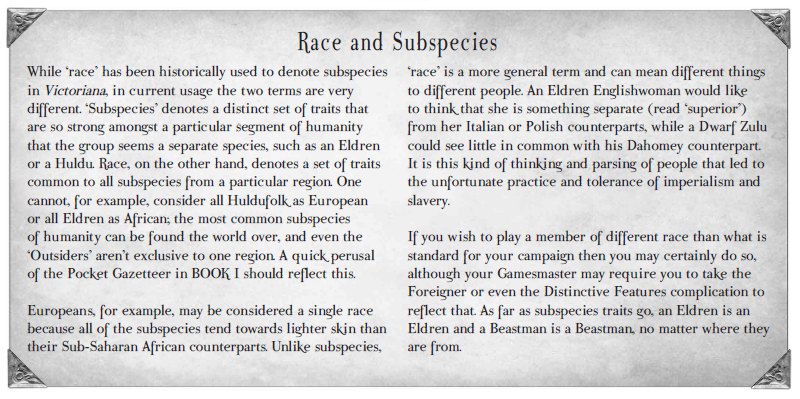
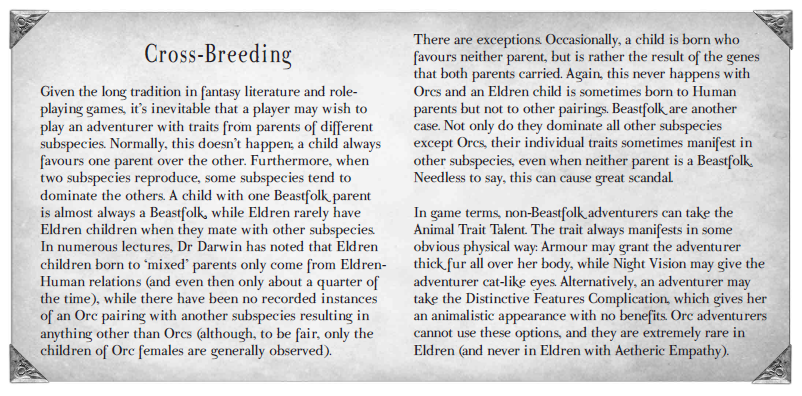
This doesn't make a fucking lick of sense because let's meet Beastfolk and how...stupidly complicated they are.
BEASTFOLK
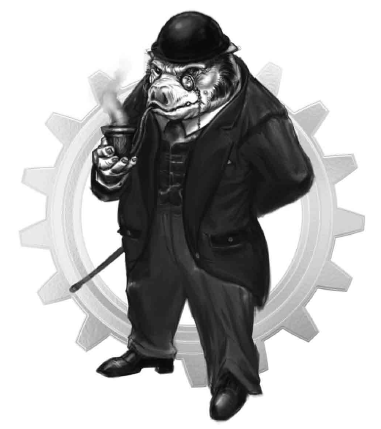
Beastfolk are humanoids with animal heads. Everything else is humanoid. They have hands, they have feet, they have thumbs and they might have fur or they might not, it depends on what species of animal they resemble. Beastfolk have been around for as long as everyone else but they did better before the Heavenly Host was like "hey Beastfolk suck and are perversions against the natural order" back when Christianity But was being formed. So since then, they haven't been doing so well socially but there are exceptions like the King of Prussia and Shaka Zulu. Beastfolk are also irrationally shunned for their species appearance, where Ratfolk are considered shifty and untrustworthy, Dogfolk are run-of-the-mill accepted and Lionfolk are beloved. Basically how you look matters.
On the name "Beastfolk": there are issues coming up with an acceptable name. Academically they're called Therianthropes and Zoanthropes. Socially, the name "Proteon" was acceptable for a while until racists turned "prot" and "prat" into a slur. People generally just call them Beastmen or Beastfolk.
Compounding on the fact being a Beastfolk is hereditary, there are some further issues. First, Beastfolk don't breed true. Two Deer Beastfolk will not necessarily have a deer child and children don't favor parents of mixed Beastfolk species couplings, it's all completely random. Second, Beastfolk have an uneven ratio of gender. Beastfolk have four boys to every one girl, which often forces male Beastfolk to marry outside of their subspecies. Most Beastfolk marry Humans or very rarely they marry Eldren. There's nothing wrong with this in lower or middle society but it's considered abhorrent in high society (despite all of the Beastfolk brothels that secretly cater to upper class people). Third, I'm very glad this book doesn't answer the question of "are their genitals human or animal" because that's not an answer I need to know.
The Core Book Beastman
A Beastfolk character get one Animal Trait depending on the animal they resemble: Aquatic Aptitude (hold your breath twice as long), Arboreal (climb/leap better), Armor, Claws (retractable natural weapons), Enhanced Sense, Horns, Night Vision or Weather Sense (you just have...general, not totally accurate premonitions about the weather).
You also get Attribute Adjustments depending on the three bodytypes you can select based around species. Common Beastfolk are like dogs and horses, getting +1 Strength and -1 Presence. Large Beastfolk are like bears and lions, getting +1 Strength and Fortitude and -1 Presence and Wits. Agile Beastfolk are like cats and rats, getting +1 Dexterity and -1 Presence. Presence, by the way, is the attribute that reflects how well you impress and influence people with charisma and personality. So no matter which one you pick, you're less persuasive and such, which is "great".
But we're not done yet! It's about to get way more broken!
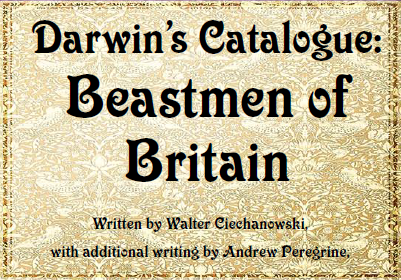
Darwin's Catalogue: Beastmen of Britain is only 16 pages long but it does provide more detailed options for 28 different types of Beastfolk that are common to England and Western Europe. Some of these are not worth taking due to an incredibly silly rule we get at the end of the book. When picking one of these specific designs, you get the choice between the bodytype attribute spread or the species attribute spread. You also can choose one of the Animal Traits available to that species and you can also choose to take a negative Animal Trait for a second, free trait. You can also, presumably, just pick one of the Animal Traits from this book or the other book as long as it makes sense instead of the offered relevant Trait.
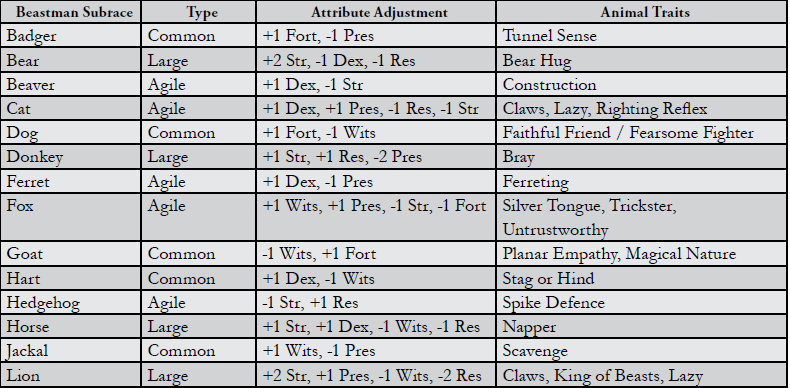
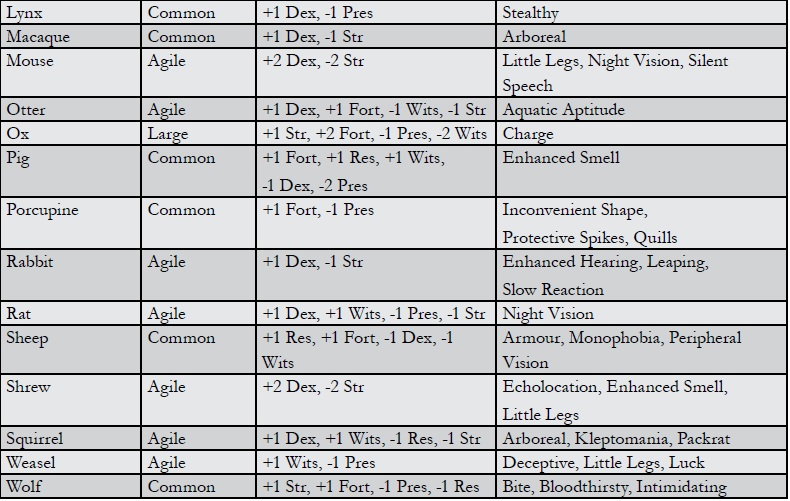
Note: Res stands for Resolve.
Badger: There's problems with people luring Badgerfolk into isolated areas where they're hunted for sport. Tunnel Sense lets you navigate underground with ease, know where north is and do better on Streetwise checks.
Bear: Pandas count as Bearfolk. Bearfolk are also heavily involved in Communism and here's where things get really weird and specific regarding it being an alternate universe. First, there's the Bearman Ferdinand Eisen who's described as the "co-author of The Communist Manifesto" but that's Friedrich Engels. Second, Maxim Bolshev is a Bearman who escaped from Russia and is the namesake/leader of the Bolsheviks who I guess is supposed to be Lenin except that doesn't make a lick of sense. The Bolshevik movement didn't really exist until the early 20th century and Lenin himself wasn't born until 1870. They're trying to move what's happening in Communism but they're doing it badly and including it in a really bad place. Anyway Bearfolk get +2 dice to crushing actions when grappling and 2 dice to Might rolls.
Beaver: Beavers work well with Dwarves, do a lot of renovations and are Experts in the skill Engineering (Civil).
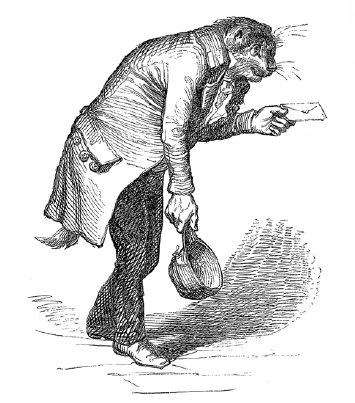
Cats: Catfolk are seen as lazy except for early in the morning and during the evening when they're unnaturally frisky. Catfolk are also seen as sensuous lovers and they can be found in brothels because catgirls. They can pick the Lazy negative trait but why would you: your skill checks are one difficulty higher for every four hours you've been awake except for combat. This is an awful trait to take. The other trait, Righting Reflex, changes fall damage so you only take damage for every two yards you fall and it can still be negated with an Athletics roll. You also get claws if you want them.
Dog: This counts for all "breeds" of dogs because dog breeds are an artificial construct of the Victorian Age using inbreeding to artificially isolate certain traits. So a Pomeranian or Corgi Dogfolk has the same stats and options as a mutt. Dogfolk make great soldiers and military officers and can be found in any station of society. Their sole trait, Faithful Friend/Fearsome Fighter, means they can remove up to 3 negative dice from social rolls involving loyalty or honesty.
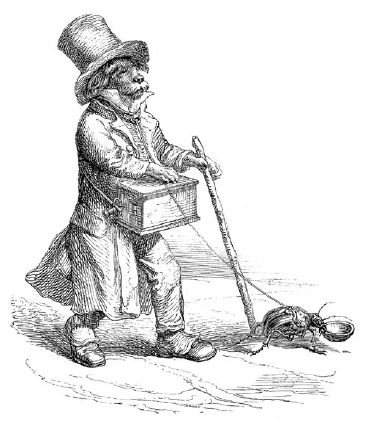
Donkey: Donkeyfolk are blunt and tend to be noisy. A lot of them band together to put their loud voices towards Communism and anarchy or general revolution. Bray means it's harder for people to make you do something you don't want to do at the cost of your own voice having issues persuading people outside of intimidation.
Ferret: Ferretfolk make great hunters. In the country, they're indispensible members of a lord's game wardens. In the city, they're great bounty hunters or cops. Unfortunately other Beastfolk tend to view them as narcs or snitches, even if that's not the case. Their Ferreting trait adds +2 dice to Perception when noticing details or Tracking involving manhunting.
Fox: People distrust Foxfolk because of their ability to lie and con but they're excellent friends if you earn their trust. They also make great sorcerers and countries like China and Japan have a storied history of Foxfolk sorcerers (less so in England which views Foxfolk sorcerers even more untrustworthy). Silver Tongue removes up to three negative dice when lying to someone or convincing them to do something they don't want to do. Trickster gives them two extra dice when using Conceal, Hide and Sneak and Sleight of Hand. Untrustworthy inflicts three negative dice on any attempts to convince someone to do something for their own good or tell the truth. So basically...you should just make like Brother Fox and Briar Patch constantly because you have a bonus for lying.
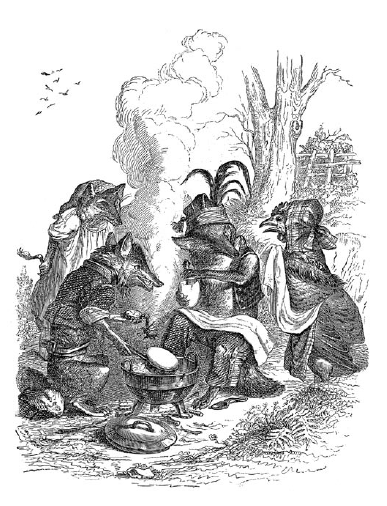
Goat: Goatfolk have a natural affinity towards magic that unfortunately tends to make them be targeted by the Aluminat church as agents of dark forces. Planar Empathy gives the PC one free Channeling or Sensate Medium ability but you still have to buy the ability to be a Medium. You can also get the Petty Magician ability cheaper. Or you can forsake your magical ability to count it as a complication and get bonus points for it. Your optional Magical Nature trait means people want to harvest your organs for their magical properties to sell on the black market.
Yep! Totally a great choice! Sleep with the door locked!
Hart: Hartfolk tend to have gender-segregated social groups of other Hartfolk they meet with nightly before going home to their spouses. Nobody's really sure why they do it and people outside of Hartfolk think their marriages must suffer for it, but they don't. They're described as having strong marriages. Male Hartfolk get Stag which means they have antlers that add 3 damage dice when charging or they can cut their antlers to get the female trait of Hind which is +1 Fisticuffs die to kicking. White Hart is like Magical Nature for Goatfolk but with an actual benefit: once per session you can make/let someone reroll a single roll and pick which result they keep, PC or NPC. You can't use this on yourself because you bring luck to others, not yourself.
Hedgehog: Hedgehogfolk are brash but all bark, no bite. They simply talk a big game and prefer not to actually fight. Spike Defense means they can ball up and automatically deal 1d6 damage to unarmed enemies trying to hit them, even if they miss.
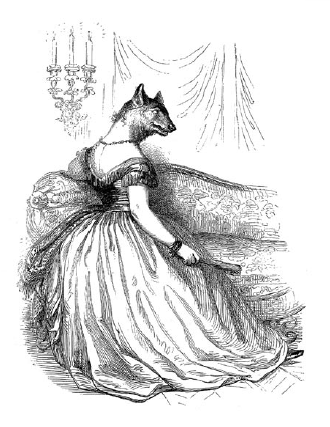
Horse: Horsefolk make good laborers and they kind of hate how much people rely on them. Some of them are itching for social change. I haven't actually watched Bojack Horseman so don't expect a joke here. The Napper trait means they function perfectly fine on four hours of sleep as long as they can sneak in two hours of naps or unbroken sleep later.
Jackal: Jackalfolk hail from North Africa, South Asia and the Ottoman Empire, making them relative newcomers to London. Jackalfolk are natural survivors and will do whatever it takes to survive. Scavenge adds 2 dice to Streetwise and Survival checks.
Lion: Lionfolk have been popular amongst the upper class ever since Richard III got his nickname for rallying Lionfolk to fight with him as his personal knights because of course he did. This doesn't mean they're just naturally born/accepted into the upper class; if they're not born upper to begin with, they're "not raised with the discipline necessary to keep middle class status". So you're a pretty creature, yes you are, but please don't live next to me. Lions get access to Claws and Lazy. They also get access to King of the Beasts which makes it easier to use Presence skills against other Beastfolk.
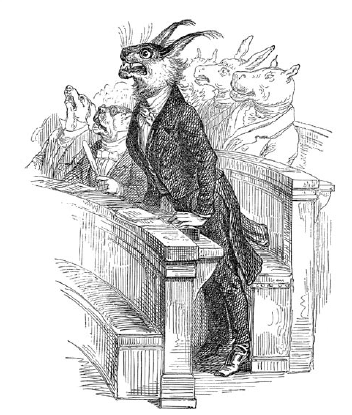
Lynx: Lynxfolk are immigrants from Europe and Asia. They're known for being ferocious and stealthy, making them fearsome soldiers, bounty hunters or criminals and for living a solitary life. Stealthy adds two dice to Hide and Sneak checks.
Macaque: Macaquefolk can pass for a Human, Orc or Eldren from a distance and came from North Africa by way of Gibraltar. Some believe them to be the missing link between Beastfolk and Human. They're well known for being servants or having jobs that capitalize on their acrobatic abilities. The Arboreal trait is the same as the core book's.
Mouse: Mousefolk are the most common species of Beastfolk found in rural habitats and are the size of Huldu (Hobbits But). Mousefolk breed quickly and tend to live in isolated familial communities, even in London, to avoid being bullied or pushed around. They're surprisingly dangerous soldiers and thieves due to their Silent Speech trait; it lets them speak on an ultrasonic frequency with other Mousefolk, sounding like squeaks to regular people but like normal voices to other Mousefolk. They can also see fine in the dark and have short legs that inhibit movement.
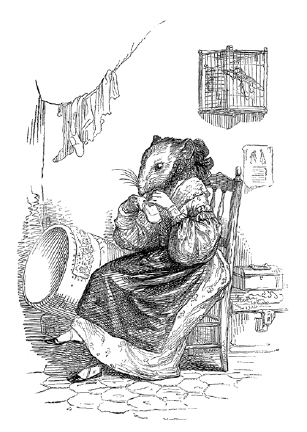
Otter: Otterfolk are another immigrant species that tend to keep to the water and other Otterfolk of their past nationalities. They make great fishermen, sailors, naval soldiers and smugglers. Aquatic Aptitude is the same as the core book. Also, swimming in the waters of London is an awful idea.
Ox: Oxenfolk/Cattlefolk are part of the labor backbone alongside Horsefolk but Oxenfolk are also found as bodyguards or in positions where you need big bodies to look intimidating. They're pretty comfortable with their job opportunities, but now London is starting to import cheaper immigrant labor of Tigerfolk and Elephantfolk and they're getting worried about losing their employment. The Charge Trait means they only take -2 to charging but get +4 damage dice.
Pig: Pigfolk are often considered to be the ugliest of the Beastfolk and a curse for not being devout enough for a Pigfolk born to Yehudite or Ismal parents. A lot of them take jobs lower on the rungs of society but they make friends for life. They also help make up the Communist/anarchist/revolutionary groups of London, turning their loyalty towards their membership. They get +2 to using the sense of smell for Perception.
Porcupine: Immigrated from the Mediterranean, a lot of Porcupinefolk get jobs for being able to cook the dishes of the area and of North Africa. They have to pay double for clothing and stick out in a crowd due to their spines, but their spines have advantages. They can pluck a spine to use it as a melee weapon and deal 1d6 damage to unarmed opponents attacking you (+4 if the attack is from behind).
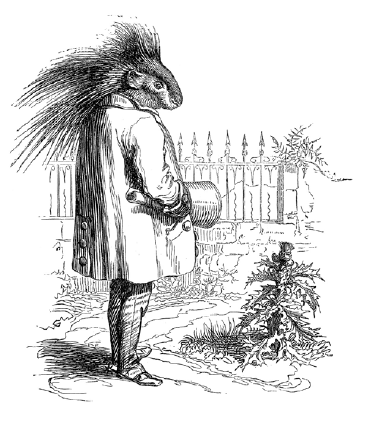
Rabbit/Hare: Rabbitfolk are found all over the world (except Australia) and are known for their big ears, odd gait and slow reaction times. A lot of Rabbitfolk who want to blend in with society tend to learn to correct their walking. They get +2 to Perception rolls based on hearing and better jumping Traits while their negative Trait makes them lose a dice for determining initiative for the first round of combat.
Rat: Ratfolk have genes that are more potent than Mousefolk and regular Beastfolk. Children with one Ratfolk parent have a 75% chance of being Ratfolk and the gender birth rate means more than half of their babies are female as opposed to the regular fourth. Because they have more potent genes, Ratfolk families tend to form insular clans and stick within themselves when it comes to marriage and love. Some Ratfolk have trouble fitting in with society and become anarchists or revolutionaries. They get night vision due to being mostly nocturnal.
Sheep: Sheepfolk are somewhat easy to intimidate but as long as they can work with other people they'll do any job. Sheepfolk often work alongside Oxenfolk and Horsefolk in the same fields or are found doing manual/assembly line labor. They get Armor from their wool and are harder to surprise/ambush due to eye placement but have a fear of being alone.
Shrew: Shrewfolk have crazy high metabolisms that require five meals a day and they also have poor vision. However, they get Echolocation and +2 to using their sense of smell to identify/track people. For a negative trait, they have shorter legs that affect their movement speed.
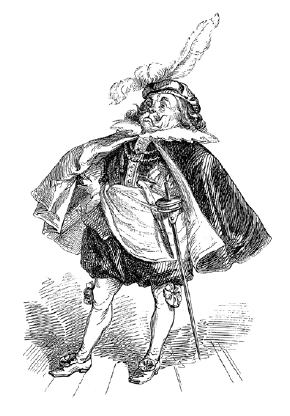
Squirrel: Squirrelfolk are viewed with suspicion as chronic thieves with a pathological need to hoard things. A lot of businesses (and the army) don't actually suffer from higher theft with Squirrelfolk around and will often employ them as guards and stock-takers because the Squirrelfolk will get protective of the thing they're told to watch and do an excellent job. They get the Arboreal and Kleptomania traits along with Packrat which gives you two empty slots in places you frequent to hide things you might need later.
Weasel: Weaselfolk are hot-tempered but shrewd, often taking jobs that let them use their nimble bodies or criminal jobs. Deceptive lowers the difficulty of Bull rolls, they move slower from small legs and Luck will let you add two successes to a single skill roll per game.
Wolf: Unlike Dogfolk, Wolffolk don't take orders well unless amongst their own kind when they can form a pack with a hierarchy. They like to take military or violent jobs, or more polite jobs like rat-catcher, guard or pigeon-shooter. Other Beastfolk tend to fear Wolffolk due to a fear of being attacked and *sighs* some Wolffolk become serial killers why not. They get a Bite attack and +1 to Intimidate/Interrogate but as a negative Trait they can get the Rage trait for free.
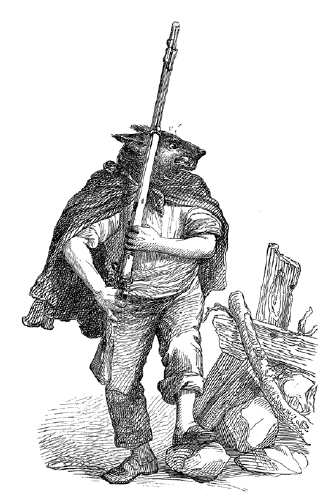
Other Traits (some previously mentioned Traits are on this list but I won't be repeating them)
- Animal Feet: they count as a Distinctive Feature negative trait but also make it easier to track you by footprint.
- Human Visage: It's easier to use the Disguise skill to appear human or another race relevant to your size.
- Long Legs: move faster.
- Missing Hand: one of your hands is a paw/foot and can't be used like a regular hand.
- Mute: can't speak regularly, can only make animal noises. You understand languages, you just have to speak with gestures, writing or sign language.
- Paws: it's harder to use manual dexterity skills that require regular hands. You don't want this negative trait ever.
Alright, now let's get to the broken bullshit part.
BEASTMAN HYBRIDS
Many non-Beastfolk will have sex without protection with them because they think they can't get pregnant/impregnate them because they're lower life forms. They're incorrect; a male Ogre can get a Beastwoman pregnant just as much as a Beastman can get a female Eldren pregnant. The problem is genetic expression. It might be harder for other subspecies to have kids with Beastfolk but the fact of the matter is that happens. Children born to Beastwomen tend to be Beastfolk and children by Beastmen to women of other subspecies tend to be born matching the mother's subspecies. Which...doesn't make a lot of sense to me, honestly, because of the whole gender birth imbalance thing. It really feels like Beastfolk should've gone extinct a while ago due to fucked up fertility rates and the fact that its expression as a genetic trait varies wildly.
However, let's muddy the waters even further. Sometimes children of non-Beastfolk mothers by Beastmen are born hybrids. What this means is there's some expression of dad's heritage, either physical or mental. Some children are born with funny little ears or fingers that look like claws or cat eyes, some are born with the urge to not be alone, the urge to hoard or the habit of sniffing the air. This doesn't really matter among lower class citizens because most people marry Beastfolk and children are children. In upper society, having a Hybrid child is scandalous or something you can hide depending on how strong the heritage is. A weird little snub nose from having a Dogman father? Eh, there's worse facial features you can have. Cat eyes or a quirk to the physiology that makes them move different? Hide the feature unless your family fall into shame and dishonor. Middle class families are up in the air.
So how exactly does one make a Beastman Hybrid character? What does this entail?
First you need GM permission. Second, you simply pick the species of Beastfolk your mom got down and dirty with. You get every single other bonus your Subspecies of choice gets, so if your idea is an Eldren Beastman Hybrid, then you get all of the other Eldren bonuses and attribute adjustments and everything. In addition to all of the basic stuff your Subspecies gets, you also get the "downside" one Animal Trait of choice from your parent along with an appropriate identifying animalistic feature and maybe, maybe the downside of RP-only relevant social stigma. Maybe.
This is ridiculously broken and also kind of stupid. For starters, there are no limitations about which subspecies can have the hybrid feature attached to. Second, you give up absolutely nothing from your chosen subspecies in exchange for the feature. Eldren have the option to choose between an aptitude for Clairvoyance or Spirituality and get a flat leg up on being a Spiritualist by having goat horns or a little goat tail. Beaver/Dwarves can just Engineer Better flat. Or, because this is the kind of system where picking a Human gives you no inherit attribute adjustments and points to allocate them wherever you want and an extra point to allocate for four total points and a higher fate point pool dealie, there is literally no reason to just have a Beastman dad and a fluffy tail you can tuck into your pants.
Want a character who's a monster at social stuff? Fox dad for a fluffy tail, less penalties for stupid bald-faced lies and no downsides to telling the truth. Alternately, tell the truth forever and become a social monster at that by having a Dog dad. Never be unarmed with claws from a Cat dad. Have a Ferret dad to just Perception better forever. Hell just pick any Beastman dad with night vision and get night vision! In fact, some of these Beastfolk breed choices just aren't good for the options they carry and the cost of getting your attributes adjusted. Most of the time, a Beastman Hybrid with a human mother is flat-out better at doing more things than a purebreed Beastfolk, period. The other thing is that playing a Beastfolk Hybrid completely disregards what the book says about picking an Animal Trait Talent at the cost of picking a Distinctive Features Complication because this book flat-out states that the physical trait the Hybrid shows is not reflective of what Talent they have. There is no correlation to physical appearance. This book even uses the example of cat eyes not giving you night vision; you can have claw-like fingers but have night vision, you can have cat eyes but have retractable claws. Plus, it's free to become a Beastman Hybrid instead of having to pay build points for that Animal Talent.
A reasonable GM would not let players take Beastman Hybrid ever because of the sheer munchkin potential and the barely existent downsides. How many players do you know who would pick this and then say "the first thing my character does is go to a doctor for a tail-ectomy". Like I'm not even mentioning all of the people who would pick a Beastman Hybrid for the furry-lite factor. I will in fact credit them for doing it just to play a furry character and not for intentionally breaking the mechanics and player balance.
Anyway, I don't have much more to say about Beastfolk. The idea isn't awful and it's nice to see a non-Warham take where they're not all rapists in thrall to dark forces (they all count as creatures of Entropy, sure, but shut up). It's the execution with genetics and all that becoming painfully confusing and the fact that hybrids get the best of both worlds that gives me a headache and confuses me immensely. Also this review covered all sixteen pages of the Beastfolk sourcebook.
NEXT TIME we're going to do all of the other subspecies of the core book. They really don't get nearly as much to talk about as Beastfolk do.
BOOK TWO: Part Three
Original SA post
BOOK TWO: Part Three
Or
THE THREE ORCMIGOS
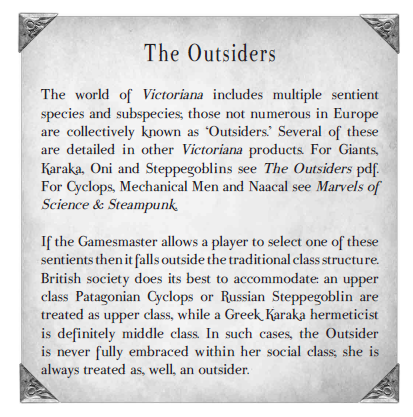
DWARVES
The Dwarves of Britain are primarily of Scottish/Welsh/Nordic heritage because fuck you. Not to say that all Dwarves are beer-swilling, grudge-holding, rock-fucking, iron-forging lawful stupid sapients. In fact, an important thing to remember about all of the upcoming subspecies is that it doesn't really matter where they're from. An Egyptian Dwarf, a Maori Dwarf, a Japanese Dwarf and a Canadian Dwarf all have the same mindsets, traits, ways of thinking, etc.
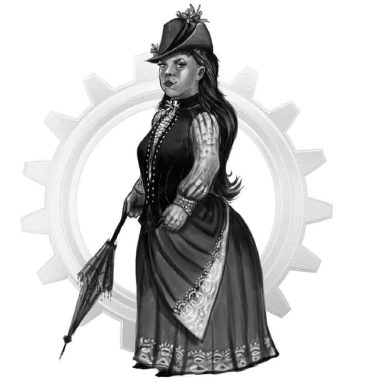
Dwarves are industrious and hard-working, most of them becoming noveau riche thanks to their work ethic and cunning. They keep grudges a long time and they dislike Eldren for being unwilling to get their hands dirty and for claiming that they're the oldest of all subspecies. They're stocky, their hair grows naturally lush (women do not grow beards) and they have brilliant eyes.
For Traits, they get "Stubborn As A..." which means it's harder to use social skills to change their minds or use magic to change their minds. They also get "Little Legs" which cuts their movement speed in half and rounds up because they're short.
I mean. They're Dwarves. There's nothing new here, no matter how I try to spice things up.
ELDREN
Eldren are the aristocracy and royalty distilled into one subspecies in Europe, even if that's not the case for the majority of the world (this is part of why there's such a lurid fascination with the Blood Elves of the Comancheria). Eldren have been a part of high society and the aristocracy since the beginning of time, marrying into human royalty some time after their supposed antediluvian society sank into the ocean. They're closely connected to the aether and have a natural predilection towards magic and creativity. They fit the epitome of Victorian beauty with their delicate features, pale skin, slender bodies and eyes like cats.
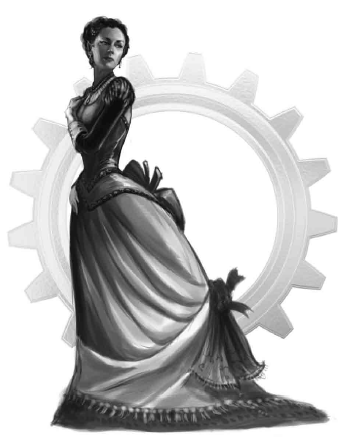
Also all Eldren are mentally ill and will succumb to madness as they get older due to their connection to the aether. Eldren characters get "Artistic Eccentricity" which is a polite way of saying insanity. They have to start play with a choice of Mental Complication that doesn't count towards their total limit and doesn't confer any points. They also get "Planar Empathy" which gives them one Clairvoyant or Spiritualist ability for free. You still have to sink points into the ability's skill and if you want to use any other part of the talent's abilities you have to buy them. Alternately, you can choose to forsake Planar Empathy, be part of the unpowered Eldren minority and count it as a complication and will grant you five points. Your Entropy will also drop to Entropy 1.
As much as I like that idea (hell it fits thematically if you want to play a Byronic, long-living, beautiful person who will descend into madness), it doesn't really work that well when you think about it. "I'm gonna pick a subspecies with attribute adjustment and no bonuses besides a point refund! Hooray!" Actually when you think about it...shouldn't you also lose Artistic Eccentricity if you forsake Planar Empathy if your madness is tied to your magic? Also an upper class Eldren starts play with -2 to Fortitude, your health stat. If you give up your magic and play an upper class Eldren, you're just...not as good as a baseline human at anything except you've got extra points to spend and you're better at being charming.
Victoriana!
GNOMES
Gnomes are frail, tiny, nocturnal and are posited to have been mighty sorcerers before the Great Flood did something to take away their ability to use magic. Does this mean you can't play a Gnome spellcaster? It doesn't! Anyway due to their size and intelligence and nocturnal habits, they generally work as clerks, bureaucrats, accountants, anything that lets them use their brains.
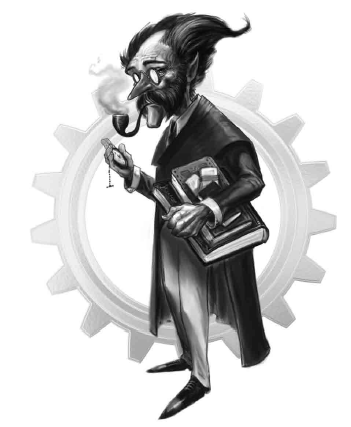
Gnomes get "Night Creature". You add a two black dice penalty to any mental or academic tasks in the morning. However, after midnight you get +1 dice to anything mental or academic, plus you have night vision and reduced difficulty to do things in the dark. They also get "Little Legs" (same as for Dwarves) and "Fragile Physique" which means that you have a hard cap of a +3 to your Strength attribute, period, due to your physiology.
I don't really like Gnomes? They're good for being smart and casting magic. That's it. They wouldn't be so limited to me if it wasn't for the fact that they operate on a completely different sleep schedule than the rest of the PCs.
HULDUFOLK
They're Hobbits. You know exactly what they are, they're just tied up in Norse mythology. They've always existed on the fringe of society but it was Erik the Red who found the biggest colony of them and invited them into society. They're three feet tall and go barefoot when they can because of their thick soles. Having weight on your slight frame is a sign of good fortune to them. They enjoy warm fires, tall drinks and food.
They're Hobbits.
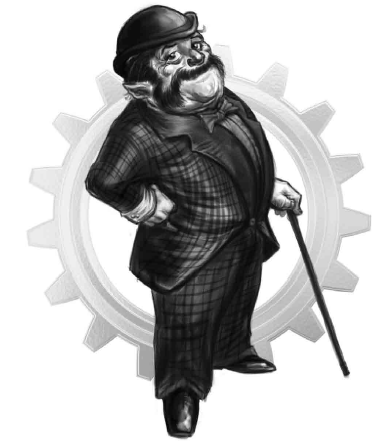
Also they reach sexual maturity at 12 and live to 50 and they're crazy fertile welp.
Huldufolk get "Fascination". Every Huldu gets a deep fascination with a reasonably broad that drives them to engage in it, get their hands dirty. So a Huldu with a love of clockwork is going to be wrist-deep in a grandfather clock, not reading a book. They also don't really care so much about social rules when they could do what they like, which is why they're Lower Class. This gives them an advantage to perception rolls about what fascinates them, but also means they have to get two successes on a Wits roll to disengage with their fascination unless someone drags them away. They also get "Sensitive Nose", which gives them acute senses of smell and taste. On the other hand, they get "Little Legs" and "Fragile Physique".
Huldufolk would be better if they were the Gnome class, honestly. I mean, they're better than Gnomes and have the same restrictions as them (not counting the diurnal habits), but Fascination isn't good. Fascination would be better if it just helped them with skill rolls relevant to what they love instead of "you're really good at noticing details in Professional Wrestling". Seriously, mash the Gnomes and Huldufolk together, throw away Night Creature and Sensitive Nose, retool Fascination, alter the attribute adjustment and you actually have a useful subspecies that's worth taking.
So much wasted potential.
HUMANS
Humans get no attribute adjustments. They get "Adaptability", which gives them 4 points to assign to attributes instead of 3. They also get "Destiny" which means they start play and each session with 7 fate points, enough to Do A Thing with them. By contrast, all other races start with 4 and cannot Do A Thing.
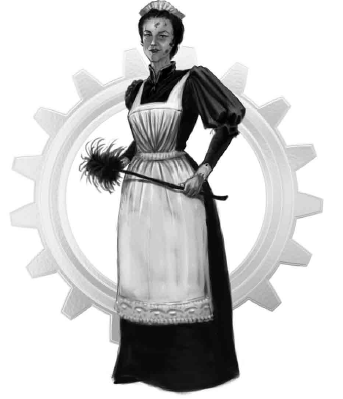
I don't have much more to say. They're D&D/Shadowrun Humans. Just remember to take Beastman Hybrid and pick up some other handy ability for literally no downsides.
OGRES
Ogres are "what if we did Trolls from Shadowrun but badly?". They're eight feet tall and built like a truck. They're also incredibly gullible, no matter how smart they are. So they're more intelligent 40k Ogryn armed with a steampunk gun.
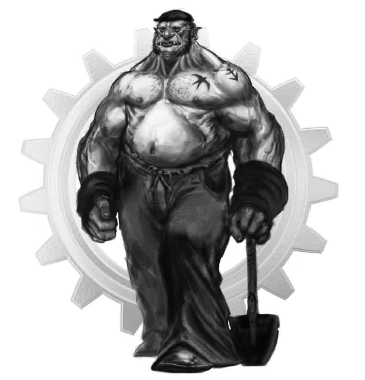
Ogres get "Blunt Wits". What this means is that it's easier for someone to lie to an Ogre using Bull, Charm or a similar skill. Conversely, the Ogre gets a penalty of three black die to attempts to resist the lie (black die remove successes if they get successes). Two people can't manipulate an Ogre at the same time; they have to win an argument/shouting match for the Ogre to listen to them. Ogres also get "Iron Constitution" which means their health is calculated by doubling their fortitude and adding two dice. Instead of "Little Legs" they get "Long Legs", meaning your movement speed is x1.5 the normal calculated rate.
The penalty to disbelieving lies is pretty rough; the way their attribute adjustment works is that they're full-throttle fight machines who can be swayed to turn on the party unless someone out-yells the enemy. That is way too much of a liability. I much prefer the Troll approach of Shadowrun.
ORCS
The majority of Orcs in Britain are immigrants. Even the ones born in the United Kingdom are not born in England proper but in Scotland on the Isle of Orkney ( FUCK ) and the Hebrides. There's no effort made to integrate Orcs into society and the government just lets them live on the outskirts or in rookeries. Part of this is bald-faced racism (down to them being considered demons) but the other source of the fear is how good Orcs are with machinery and technology. With the age of magic fading and the age of machinery rising to prominence, anthropologists believe that Orcs represent an evolutionary endpoint that will survive and thrive in an age without magic. This is of course speculation; Orcs are capable of magic ability (indicated by silver hair) and they're generally devoutly religious...to the Old Gods who came before the Heavenly Host. The really interesting feature of Orcs is that they have eyes just like Eldren and that fact terrifies the Eldren.

Orcs get "Night Vision" and "Greasy Thumbs" which means they get a bonus die to Ad-Hoc Repair or Engineer/Craft of a certain type of mechanics. They also get the "Foreigner" Complication and it doesn't add to their total complications, they're just generally treated as outsiders to be feared.
Orcs are...actually kind of interesting and complex.
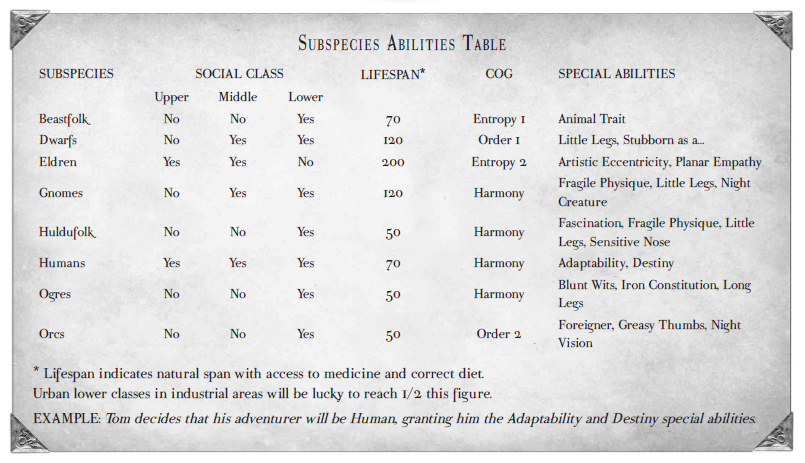
ATTRIBUTES
So let's talk Attributes really quick: Strength, Dexterity, Fortitude, Presence, Wits and Resolve. You might know them better as Lift, Combat God, Health, Charisma/Casting Stat, Skill God and Will/Casting Stat/Magic Fuel. If you think I’m joking, you are sorely mistaken.
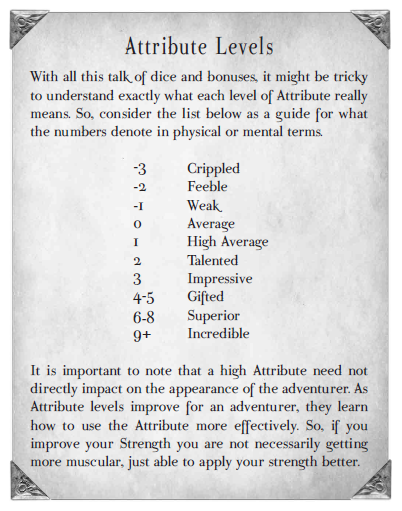
Strength adds to melee damage, general athletic stuff and intimidation. Except it’s not really used for Athletic skill rolls; it’s tied to Dexterity.
Dexterity is good for agility and coordination. Dexterity is also the attribute used with every single combat skill to hit and Athletics. And a shitload of other skills.
Fortitude is health. Yep.
Presence is charisma and how pretty/magnetic you are. If you’re a Spiritualist, you cast off of this. This stat is also good for Clairvoyance and Goeticism.
Wits adds a bonus to most of the other skills that Dexterity doesn’t cover. They do avoid a common pitfall in tabletop: having high Wits does not give you more skill points to throw around at character creation. Your Wits generally act as a flat dice bonus to an assload of skills.
Resolve controls force of will, resistance and you also cast off it for Necromancy, Thaumaturgy and Conjuring.
There are also Derived Attributes. Initiative is Dexterity+Wits+Perception skill, Health is just Fortitude+2, Quintessence is just your Resolve and Movement is this:
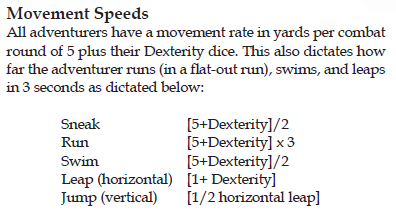
And player Attributes start at 1 and are then adjusted with subspecies templates and the 3 or 4 points you have to assign them. Attributes can only be raised a certain amount at chargen to prevent stacking, +2 points from the adjusted level.
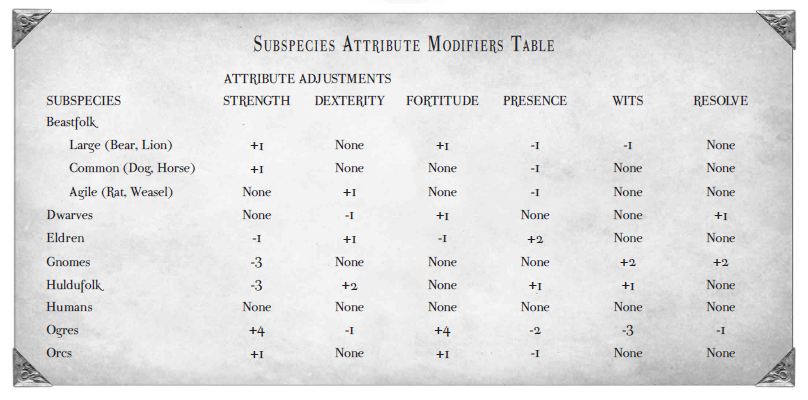
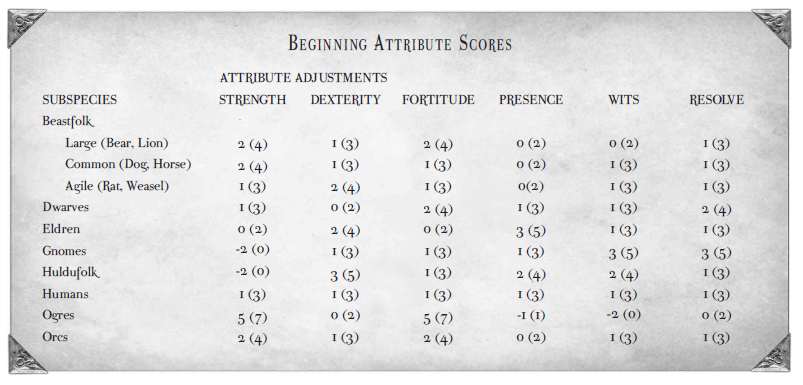
Why am I mentioning the Attributes? Well, two reasons. First, so you can understand what exactly the Attribute adjustments mean. Turns out that Huldu and Gnomes don’t really suffer too much from having shitty Strength! In fact, if you’re going for a combat-oriented character, a Huldu is an excellent idea and you should give them an interest in killing people and a gun because all combat abilities are Dexterity-focused. Actually mathematically they’re not at too much of a disadvantage with their little legs. The one who is really at a disadvantage in combat is a Dwarf because of their Dexterity loss.
The other reason I’m bringing this up is because I think the system is actually interesting. You can’t lower one stat to raise another and if you’re a Human you can start with max in two Attributes but it also basically shows a dump stat for every single type of character: Strength. I don’t think I’ve ever seen a game where every single type of race has the exact same dump stat. You don’t need to put points in Strength ever because 1 means you’re just kinda just better than a normal person and it’s all you’re going to need. I mean the game does a pretty good job of giving you a clear level route to take for improving your character and that’s handy. It’s not great, but it’s not handy.
So those are the core subspecies. I would not recommend some of them, depending on what you want to play. And some would say it’s kind of a lot of subspecies. I mean, before I went into the sub-subspecies of the Beastfolk, there’s still 8 D&D/LOTR races to choose from.
Why not throw even more imbalanced/useless subspecies into the mix and fuck this all up?
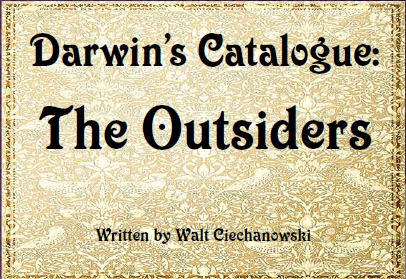
The Outsiders is a 14 page PDF that offers five new races and also Orcs again. Why? Because they’re immigrants I guess. But, uh. Yeah. Orcs again. Rest assured, there is literally nothing new to the Orcs but everything else is new. This book also has rules for a different type of magic, but we’ll cross that bridge later in the core book. This is all about new subspecies.
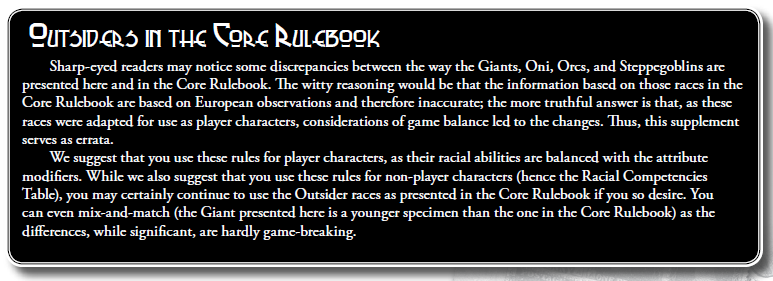
This book might also be 2e but the core is just like “oh yeah no it’s backwards compatible, just…whatever, make it fit” in regards to 2e products.
GIANTS
First of all, Giants are 20 feet tall. They are also clumsy and kind of stupid and believe heavily in the mission of the Aluminat. Giants originally lived in the mountains and foothills after a bunch of Bronze Age wars chased them out of the flatlands. Then businesses and armies needed shitkickers/stuff-pushers to work for them and now Giants live in society again.
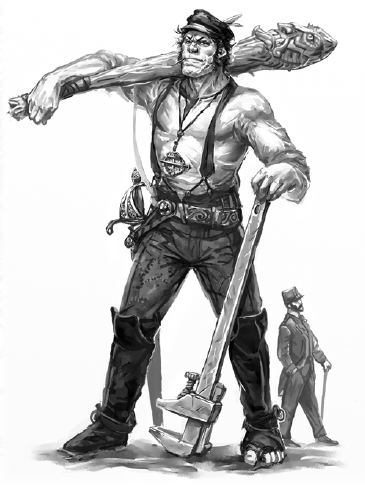
Giants get “Huge”, which gives them +9 dice in melee damage and +6 health dice at the cost of a -3 to Hide & Sneak and +3 for people to hit you. They also get “Iron Will” which is +2 to resisting magic. Their main downside is “Clumsy” which means some people won’t let you go in certain places and you have higher difficulty thresholds to Dexterity skill checks.
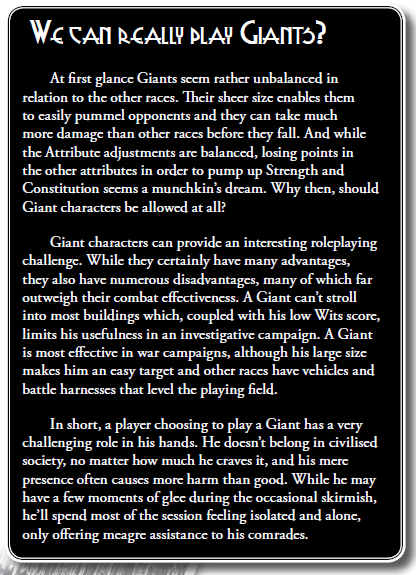
So Giants are 20 feet tall and useless in this age of guns. They’re considered mentally crippled when it comes to their Wits and Presence. Yeah they’re big and strong and yeah they hit hard but remember: Dexterity rules the combat skills. They have a penalty to combat skills and a penalty to Dexterity. In fact, they start with -1 Dexterity without points put into it which means they have to roll a black dice for every combat skill and if that black dice is a success, it eats a success on a regular dice. They’re just so bad at fighting! They just have nothing going for them.
KARAKON
The Karaka are from Central Asia/Eurasia. They're roughly the size of Gnomes but with large ears, oddly long limbs and skin that is both hairless and lightly leathery. The Karaka used to be a more prominent subspecies in ancient times, providing a strong backbone of magical talent. Unfortunately they were slaughtered by the Roman Empire and driven from their homelands in the Eastern Mediterranean to the East. They kind of embody the Inscrutable Oriental stereotype in that they're only loyal to their family, they're traders and they have a highly developed set of social rituals to convey info without speaking. England itself doesn't really like them due to the fact that they're more shrewd merchants than they'd like and Karaka may have been responsible for a King's seizure of the crown, who then banished them out of fear of them. The banishment took place in the 12th century and wasn't lifted until the 17th. They're in no hurry to return to England.
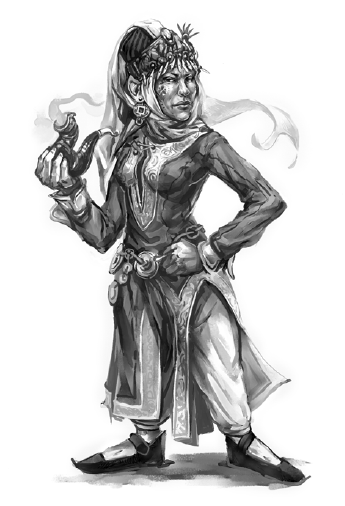
For downsides, a Karakon character gets "Little Legs" and "Fragile Physique". For upsides they get "Night Vision" and "Mana in the Veins" which I literally cannot find in the core book for 3 and a cursory Google search indicates that it reduces the final cost of casting a spell. I have no idea if this is just a 2e thing but I seriously can't find it in any of the books.
So that last little curveball aside, this is actually a somewhat enjoyable take on the small magician character. They start off with decent stats for spell-slinging and have a good talent for doing that. They're a pretty good choice for magic users. My main regret is I have no idea how the plurality of their name works.
ONI
What's interesting about Oni is that they're not native to Japan. It turns out Oni have also been found on the Pacific Coast of America by Lewis and Clark which gave rise to the whole Siberian land bridge theory. Or maybe they just had their own sort of Atlantis connecting Japan/The Pacific Rim with the west coast. Who knows? The other topic of debate is how closely related are they to Ogres. They're basically smarter Ogres but slightly less durable, skilled melee warriors with none of the mental drawbacks. If Oni were more widespread than Ogres, things might be quite different.
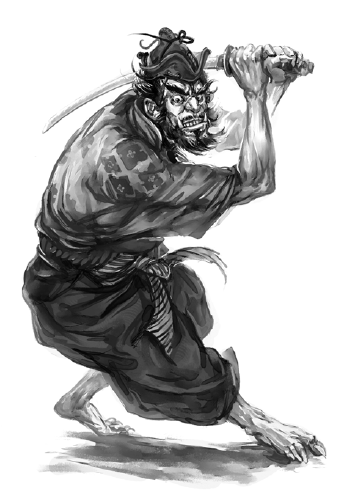
Oni don't get any negative traits. In exchange they have rougher Attribute adjustment. Oni get "Long Legs" and they also get "Stout Constitution" which is (1.5xFortitude)+2 as opposed to the Ogre's 2xFort+2.
I mean, really, they're just smarter Ogres with none of the social downsides save for the ding to Presence. They would be a good alternative to the Ogre if they both weren't pretty hard to recommend due to Dexterity Supremacy.
ORCS
Still Orcs. All the stuff is seriously reprinted verbatim.
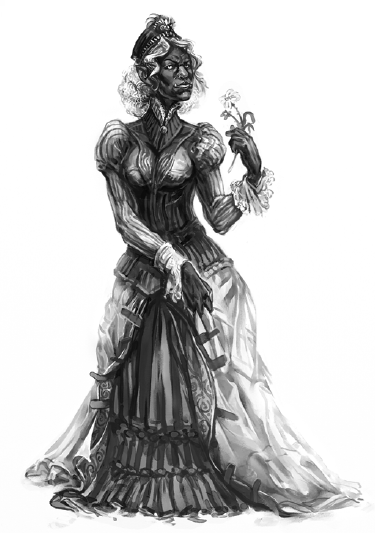
STEPPEGOBLINS
The genetic heritage of the Steppegoblin and the Eldren is a point of interest among natural philosophers. Steppegoblins are Central Asian/Eurasian that make up 20% of the aristocratic classes of Russia. They're known for their natural magic prowess and the only physical differences between a Steppegoblin and an Eldren is that Steppegoblins are shorter than them and tend to have silver hair, but the height aspect isn't enough that you could really tell them apart. This actually comes in handy when it comes to matters of espionage and treachery. The real difference between them is their magical ability and their minds.
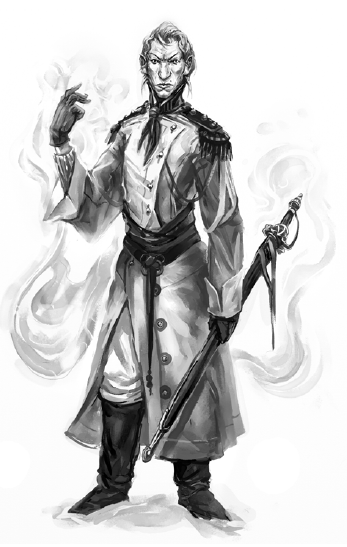
Steppegoblins also get "Planar Empathy" but it only applies to Mediumship and it only applies to Corporeal Mediumship (translation: Shadowrun Physical Adepts). They get one Corporeal skill for free or can forsake this for refund points. Their big mental drawback isn't insanity but temper, giving them the Rage complication automatically for no points.
Y'know I won't lie, I like the Steppegoblins and not just because Steppegoblin is a pretty cool name. They don't get Strength bonuses, which is fine, but they get baseline Dexterity and a little more Fortitude. They also get to do some pretty fun combat stuff with Corporeal Mediumship so it's pretty good to get free access to that, especially if you go the gun route, because some of those skills affect your Dexterity pool. In the distance past of 1856, one of the most dangerous forces to be reckoned with is a pissed-off Russian elf with a gun.
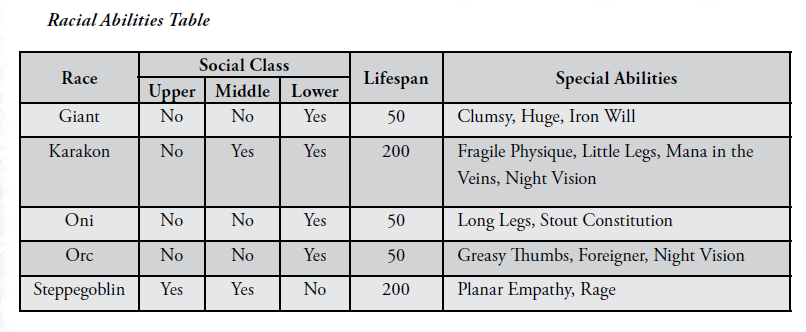
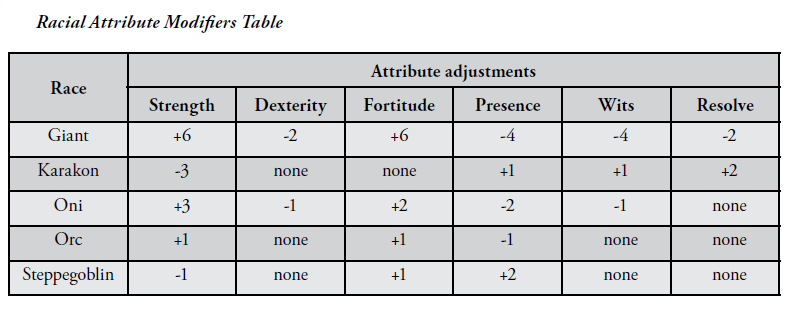
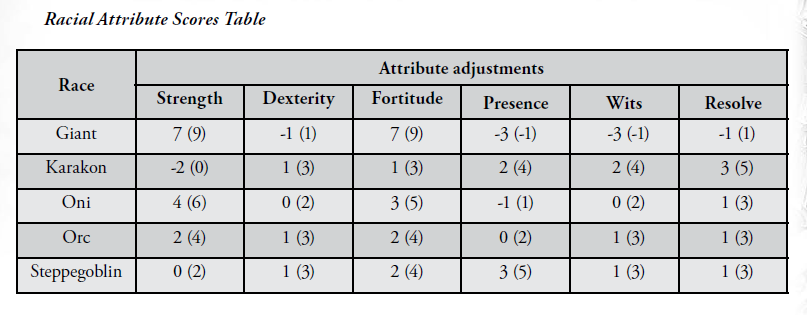
Also technically everyone I mentioned above is never truly accepted by society. But we're not done yet! HOW ABOUT ROBOTS?
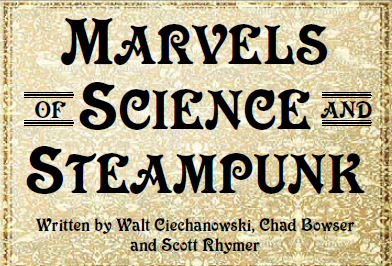
Marvels of Science and Steampunk is a longer sourcebook for Victoriana that tackles more steam inventions and cutting edge science. It also includes rules for new races, and this book has Orcs as well. Yes really.
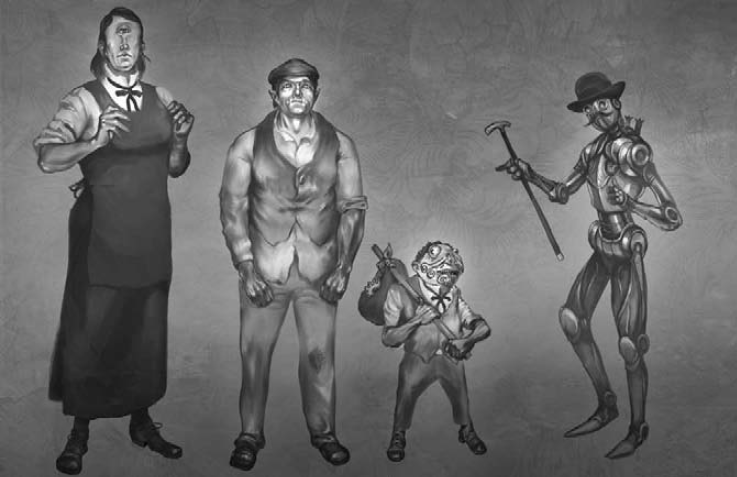
CYCLOPS
Cyclopses(si?) were discovered in South America in the nation of Patagonia. They were known to exist but the few tribes of the Mediterranean had died out thanks to the Romans by the time the Spanish found South America. Magellan was the one to make first contact and learned the story of their lost island nation of Patag and how they fled to build a technologically advanced civilization on the coast. Magellan did listen to their wish to be left alone to a pastoral existence and he left, but the encroachment of other European powers interrupted their isolation. Naturally brilliant, some of the Cyclopses left their homeland to see the technology of the world and bring it back to reverse-engineer it. They're a largely neutral country and have bought their neutrality by sharing their inventions with the world. Cyclopses are not a violent subspecies, most of them content to read and tinker and talk. The outside world enjoys their company.
For downsides, they get "Distinctive Feature" for their single eye and "Poor Depth Perception" which counts as the Missing Eye Complication. On the other hand, they get "Inventor" which is +2 skill points to a technical skill of choice and "Long Legs". Their Attribute adjustment is also pretty gentle.
They make a good inventor character choice and that's really all there is to say about them. They're not really the focus of this whole section. That would be...
MECHANICAL MEN
Sentient machines are a rarity because they require care and planning to build. They're also not truly sentient. The mind behind a Mechanical Man is a bound spirit, elemental or demon in a metal shell. A lot of them destroyed themselves to escape but the longer one remains in a metal body the more they forget their old lives. People are generally afraid of them because they can't tell them apart from regular non-sapient automatons and there's a general atmosphere of fear among common folk and the Guild. They're all custom made and they're all either powered by clockwork and a little magic or steam.
All Mechanical Men get the following Traits before you pick a chassis. They're "Loud" which gives a penalty to stealth, "Mechanical" which means they can only be healed from repair but have immunity to diseases and such along with "Engine" which means it takes 5 mana out of their pool daily to operate their head and limbs in addition to having a wind-up key or coal boiler. They also get "Clockwork Augmentations" which means they can wear clockwork augmentations, "Custom Design" which means they can swap around body parts with luck on certain rolls and "Mere Flesh Wounds" which reduces damage taken and can be purchased multiple times. Then you pick a chassis.
Burrowers are the size of Dwarves and Gnomes and were built to tunnel. They get "Little Legs" but they also get "Burrowing" which adds +2 dice to Athletics rolls in small spaces.
Entertainers are the size of humans and were built to entertain. They get "Fragile Physique" but they also get "Enthrall" which lets them use their Dexterity in lieu of their bad Presence for Charming people. They also get the Talent "Work of Art" which is a non-existent Talent and was supposed to cover up their prosthetics but became Enthrall and wasn't errata'd out.
Laborers are the size of Ogres and were built to haul shit. They get "Long Legs" and they also get "Ham-Fisted" which adds +2 damage dice to melee at the cost of making you naturally destructive around small or fragile things.
Servants were designed to keep house. They get the "Eidetic Memory" Talent which means you can make an easy Wits roll to remember things specifically along with "Silver Tongue" which adds +2 dice to anything involving Speech. You also get the "Proper Sensibilities" complication which makes you anal about society. Basically you're Threepio.
HOOOOBOY. Entertainers are awesomely broken. Yeah they get Strength as a bad stat but they get Dexterity as a good stat and they also get the ability to use Dexterity to be smooth and social. That is hilariously broken. I can't say much about Burrowers, Servants or Laborers; they're just not as good as the Entertainer's ability to cheese things and they really don't bring anything fun to the table that takes advantage of them being machines. Just give the singing robot a gun and make sure he's your friend.
NAACAL
The Naacal are from the Pacific and are an amphibious race that can be found around the Pacific Rim, Polynesia, Indonesia and Madagascar. They salvage everything they come across, making their seafaring homes out of garbage and other repurposed trash. They don't have to live on the ocean, but they're comfortable by the sea or on the coast. They also have a reputation for being kleptomaniacs due to their habits of taking things they think people have thrown away or won't need.
Naacal get "Little Legs" and "Fragile Physique" as downsides. For upsides they get "Aquatic Aptitude", "Peripheral Vision" (just like sheep they have weird eyes) and "Swim Like A Fish" which modifies their swim speed. There's no actual bonus to using their Wits outside of attribute adjustment.
They're...okay? They're basically Better Gnomes but with more of a seafaring bent. They're really not much to write home about.
ORCS
Still still Orcs.
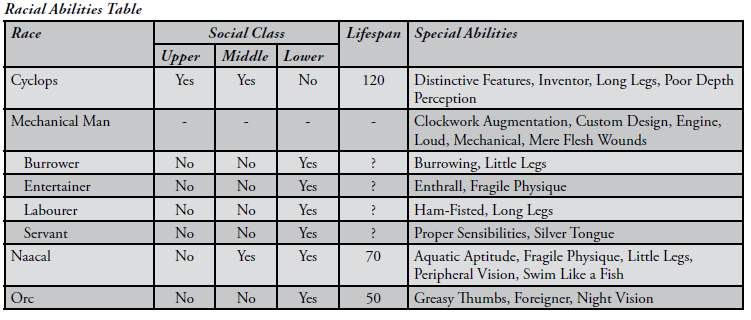
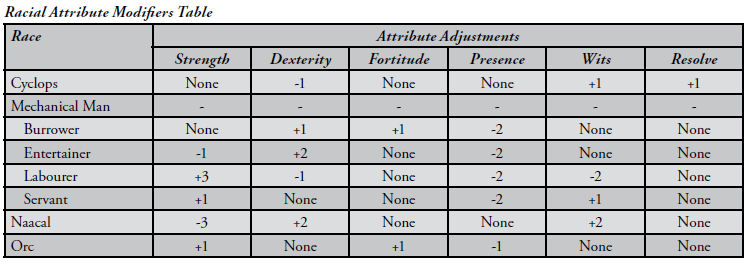
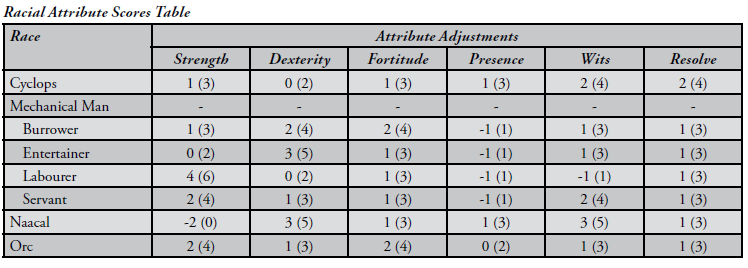
Thoughts: I think the best team across all three of these books would be an adventure crew consisting of a Human sharpshooter, a PhysAd Steppegoblin armed with inaccurate spray-and-pray weapons, a dashing Mechanical Man Entertainer with matching revolvers and a Karakon mage doing what needs to be done when it comes to magic. And that's mostly because I'm thinking of things by Shadowrun metrics because this game keeps trying to sell itself as Victorian Shadowrun but noooo it's not. It still isn't.
NEXT TIME: good golly Miss Molly I hope you like a shitload of skills and things to buy in character creation. At least we're done dipping into other books in the line.
BOOK TWO: Part Four
Original SA post
BOOK TWO: Part Four
Or
I Got 81 Skills But "Give A Shit" Ain't One
SKILLS
Alright I may be a masochist but I'm not stupid so I'm going to do this fast and dirty. For your viewing pleasure, here is every single skill in the game.
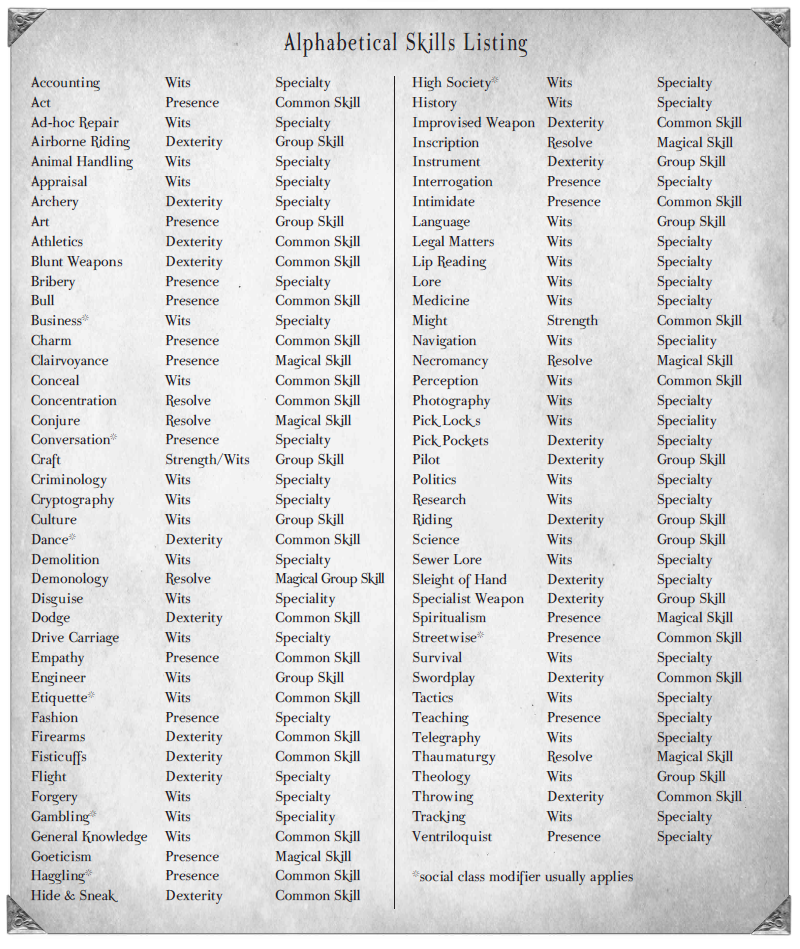
You don't pick Skills. You get your initial skill choices from your Association, Vocation and Childhood and you get 30 points to spread around and can only have up to 4 points in a skill at chargen. So let's take the hypothetical character of Miss Beatrice Francine, Lady Adventurer At Large.
Association: The Selenium gives her Firearms, Improvised Weapons, Lore, Swordplay and Tracking. Adventuress gives her Act, Appraisal, Bribery, Bull, Charm, Conceal, Conversation, Empathy, Etiquette, Fashion, Firearms (again), General Knowledge, Hide & Sneak, High Society, Language (Any), Politics and Riding (Horse). Personal Tutor gives her Art (art history, classical lit), Concentration, Dance, Etiquette (again), General Knowledge (again), High Society (again), History and Science (any). She has all of these skills she has 30 points she can sink into. That's 26 skills she has available at this stage in creation. More than half of those are useless in actual execution.
How Skills Work
Skill checks are made by taking the rank in the relevant Attribute and skill and adding them and rolling that many dice. Common Skills are things everyone knows. You can make Common rolls untrained with 1 or 2 dice substituted in for a 0 in that skill but with 1 black die also rolled. Specialty Skills can't be rolled without training. Magical Skills are used to cast magic and also give you knowledge in that field. Group Skills are general skills that cover multiple smaller fields (like the different kinds of creatures/items you can ride) and any points in one Group Skill can be substituted in for another field under that skill but with a black dice penalty ("I can ride a horse, so I can clearly ride a rabid bear!"). You can also substitute one Attribute for another with a skill roll if you ask for it or if the GM makes you. Oh also if there's a class difference, Etiquette rolls are harder for both parties depending on the size of the gap. You're encouraged for these penalties to slowly erode as your adventurer becomes more worldly and gains more
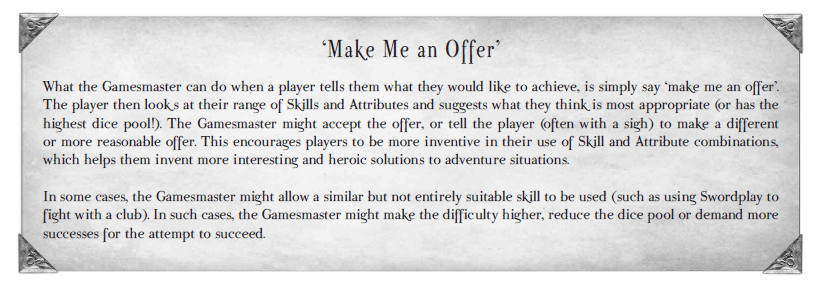
I could go into more detail, but really the only interesting thing is this note on forbidden sorts of magic:
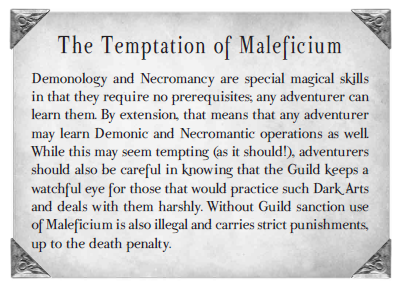
BUILD POINTS
And now we enter the endless dimension of Advantage/Disadvantage Hell. You start with 20 build points you can spend on the following:
- More skills. Still can't start with higher than a 4 in any skill, but you can now pick any skill off the list if you're into shit like Sewer Lore. Probably the only reason you would ever do this is to make sure you have at least one fighting skill because it is crazy easy to make a character who has no formal fight training due to their upbringing, job and more. And oh boy do I want to play a middle-class shopkeeper who has never thrown a punch in their life.
- Talents are basically flat Advantages, like looking pretty or being able to cast more respectable kinds of magic. And yes, you have to have the Talent for some kinds of magic in order to cast off the skill (or in the case of some of them, the Talent doesn't mean shit without the skill). You can't start play with more than four Talents, some can be taken more than once and most cost 3 BP.
- You can buy Spells if you have the parent Talent that lets you cast that magic.
- Privileges are perks that are related to your social standing and social class and can let you get away with certain stuff, like legally casting dark magic because the Hermeticists employ a certain amount of demonologists/necromancers and you're one of them.
- Assets are tangible things that you own/give you money.
- Contacts are contacts and you can get favors cheaper from them. You get Presence+1 contacts for free and can buy more.
- You can completely crib Shadowrun's "Karma4Nuyen" program circa 4e and then botch it completely because you're trading 1 BP for 1 1856 pound.
TALENTS
Man, there's no good way to compile these all in one place. I won't be going into any sort of depth out of a sense of self preservation. An asterisk denotes you can take it more than once and if I feel like there's something worth saying, I'll share it.
- Acute Senses*
- Adept Artificer
- Aetheric Manipulator
- Agility
- Ambidexterity
- Angel-Face
- Animal Empathy
- Animal Trait* (again, don't bother)
- Assassin's Lore*
- Backstabber*
- Beautiful/Handsome*
- Blind Fighting
- Cavalry Combat
- Clairvoyant*
- Combat Senses*
- Contortionist*
- Conjurer
- Deadly Shot*
- Deduction*
- Direction Sense
- Double Tap
- Drink Like A Fish*
- Eidetic Memory
- Eureka!
- Expert: start play with a cap of 8 for a skill from chargen. Shouldn't be used for combat skills. Shame.
- Extended Lifespan
- Fast Reload*
- Feign Death
- Gambler*
- Glib*
- Goeticist: faith-based pray-magic.
- Greasy Thumbs*
- Haggler
- Ham-Fisted
- Hawk-Eyed Aim*
- Inspiration*: something in your life gives you a dice bonus when you call on it. Don't abuse it.
- Invisible*
- Iron Grip*
- Iron Will*
- Juggernaut
- Local Expert*
- Lunge
- Marksman
- Mathematical Mind*
- Mere Flesh Wounds*
- Natural Charisma*
- Night Vision
- Perfect Pitch* (?!?)
- Point Shooter
- Polyglot*
- Powerful Charge
- Pugilist*
- Quick Draw*
- Rapid Healer
- Sigil Scribe
- Speed Reader (?!?)
- Spiritualist*
- Steam-Bather
- Swift Casting*
- Technologist
- Thaumaturgist
- They Thought You Were Mad!
- Time Sense
- Weapon Master*
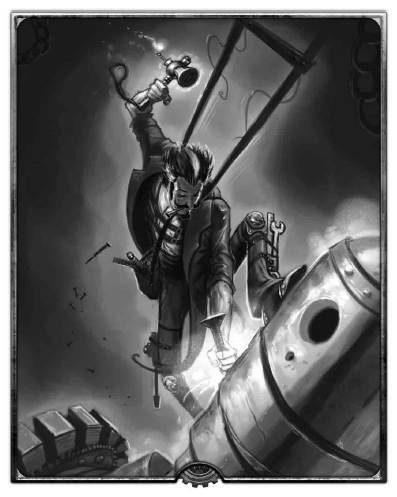
PRIVILEGES
These are only limited by social class and have a varying cost. I'll just be saying which classes they're open to and divulging any relevant info.
- Artificer's License (upper/middle)
- Barrister (upper/middle)
- Blackguard (any; you appall society by not playing by the rules and have a reputation with undesirables but people love to hear about your exploits even if they don't like you)
- Ear of the Street (any, cheaper at lower, costlier at higher)
- Engineering License (upper/middle)
- Friend of the Library (upper/middle)
- Gang Member (lower)
- Hero (any)
- Higher Station (any; you rose above your normal standing to the extent that you can almost pass for the next class up or royalty in the case of upper. Basically you start with more money)
- Knighthood (upper/middle)
- Livery Company Member (any)
- Local Hero (any)
- Maleficium License (any, worth getting if you ever start raising the dead or intentionally subjecting yourself to the energies of the Pale)
- Medical Practitioners License (middle)
- Military Commission (any)
- Museum Trustee (upper)
- Noble Tinkerer (upper)
- Notary Public (upper)
- Peer (upper, start play as a Baron)
- Police Officer (middle/lower)
- Political Legacy (upper/middle)
- Private Club Membership (upper/middle)
- Private Club Membership: Elite (upper)
- Pub Regular (lower)
- Pub Regular: Landlord's Mate (lower)
- Public Carriage License (middle/lower)
- Scrapyard Source (any)
- Second Family (any)
- Social Anomaly (any, your subspecies is in an uncommon social class)
- Society Friends (any, more expensive the lower class you are)
- Street Informant (lower)
- Street Informant: Peeler's Pet (lower)
- Thaumaturgical Degree (upper/middle)
- Theater Box (upper/middle)
- Theatrical Patron (upper/middle)
- Warrant Card (middle/lower)
ASSETS
The big upside of buying Assets is that you can get cash, items and access to places with them. They're also limited by social class.
- Ancestral Estate (upper)
- Ancestral Sword (upper/middle)
- Artisan's Touch (upper/middle, makes a clockwork limb look beautiful to negate the social penalties to having an artificial limb)
- Barge (any)
- Bolt-Hole (any)
- Clockwork Limb (upper/middle, middle-class characters have to take a complication relevant to the limb)
- Coach (any)
- Contact (any)
- Deep Pockets (any, pull something relevant and small out of your pockets)
- Fashionable City Flat (upper/middle)
- Fashionable City/Country Villa (upper/middle)
- Foreign Redoubt (upper, a small manor home and plot of land in another country)
- Frendal Lizard (any, an Indian lizard-dragon the size of a small dog with the intelligence of a monkey that can be trained to do tricks and be your little partner in crime. I actually like this)
- Hansom Cab (any)
- Horse (any)
- Hunting Dog (any)
- Income: Lower Class (1 penny extra at the start of each adventure, +1d6 pennies, 10 pennies)
- Income: Middle Class (1 shilling, 1d6 shillings, 8 shillings)
- Income: Upper Class (1 pound, 1d6 pounds, 8 pounds)
- Independent Income (upper)
- Laboratory (upper/middle)
- Library (upper/middle)
- Loyal Servant (upper/middle)
- Marvelous Gift (any)
- Padding Ken Landlord (lower, you're a slumlord)
- Padding Len Lodgings (lower, you live in a slum)
- Rented Court Lodgings (lower, at least it's not a slum)
- Rented Terrence House (middle/lower)
- Respectable Boarding House (upper/middle)
- Scrapyard (middle/lower)
- Servant's Quarters (middle/lower, you can live there)
- Service Contract (upper/middle, get your broken clockwork limbs repaired for free)
- Shop (middle/lower)
- Stalwart Friends (any)
- Trained Pet (any)
- Trusty Rifle (upper/middle)
- Wardrobe (upper/middle)
- Wyvern (upper, hilariously tricky to take care of regularly)

COMPLICATIONS
Complications are, mechanically, handled better than I would expect for this game. You can only start play with 3, only one can be a mental complication (unless you're an Eldren, then you can technically have two with Artistic Eccentricity) and there's a set price of returned build points in the form of diminishing returns: 5 for the first complication, 3 for the second, 2 for the third. Anything marked with an asterisk is a mental complication and can be taken by an Eldren character.
- Absent-Minded*
- Aggravating Landlord
- Airsickness/Seasickness (two different things but each can be taken)
- Aloof*
- Amnesia*
- Annoying Housemate
- Bad Humours* (do not take this, it forces a Fortitude roll to not puke any time you're stressed and yes combat counts. So does a loud argument)
- Bad Reputation
- Blackmailed
- Black Sheep
- Bon Vivant* (PARTY PARTY PARTY)
- Class Envy*
- Code of Honor*
- Criminal
- Cursed
- Dependents
- Disinherited
- Distinctive Features
- Enemy
- The Evil Eye (not a good idea, you're blamed for when things go wrong and this can get violent)
- Evil Twin
- Exalted Twin (people tend to ask you for a lot of charity/loans due to your twin)
- Expensive Tastes*
- Family Feud
- Foreign Spy
- Foreigner
- Glass Jaw (do not take this, +6 black dice to resist passing out from a blow)
- Hard of Hearing
- Haunted (something haunts your house. If this is your first complication, it wants to harm you or anyone else. If it's not, then the ghost is just kind of embarrassing.)
- Hoarder*
- I'm An Inventor!* (constantly unkempt and dirty, social penalties to talking to non-inventors)
- Illiterate
- Imaginary Friends* (there's a specific ghost that talks to you a lot)
- Impoverished Name
- Insufficient Income (lose 20% of any cash obtained to pay off bills and such)
- Irksome Neighbors
- Jealousy*
- Kleptomania*
- Klutzy
- Late Starter
- Lawyers (lose 40% of your petty cash in legal fees due to something you're a part of)
- Lecherous*
- Malodorous
- Missing Eye
- Missing Limb
- Misunderstood Finances (the banks have a bad habit of getting the wrong amount of cash to you when you want it)
- Mongrel* (you believe your mixed heritage makes you inferior to your peers)
- Mute
- Narcissist*
- Odious Personal Habits
- Personality Flaw* (one thing you do you do to stupid, annoying excess, like being paranoid or jaded)
- Phobia*
- Police Harassment
- Policy of Truth*
- Premature Aging (Huldu, Ogres and Orcs can't take this)
- Proper Sensibilities*
- Public Figure
- Quixotic* (you basically turn your nose up at anything more recent than 1801 and you're annoyingly opinionated about it)
- Rage*
- Rebel (so much so that there are consequences to you being in the area where a crime has taken place and there's a chance you might be involved so the police have an excuse to come after you)
- Responsibilities
- Ruthless*
- The Sins of the Father (you've inherited the shame of something a direct ancestor did)
- Shy*
- Stubborn*
- Theological Debate (you're legitimately wanted by agents and troops of the Aluminat church for heresy and rebellion for something you did/said/believed in back home)
- Vengeful Dead (an undead, spectral enemy stalks you and will simply go dormant for a bit if defeated. You can't get rid of it. Not worth taking)
- Vow
- Watched
- Zealot
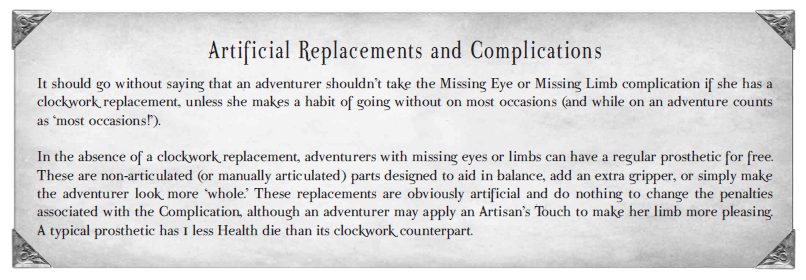
"Aggravating Landlord", "Annoying Housemate" and "Irksome Neighbors" are three great complications to take if the first thing you plan on doing in the game is burning down your flat or moving out.
I really don't have anything to say because I don't feel like I discussed things so much as I yelled them out loud. Also I managed to write this up last night and I basically just had to include this part but I really did not want to. I have been drained.
NEXT TIME: finishing character creation, maybe a sample character? Hell if I know. I might make a "kill everything" Dex God character.
BOOK TWO: Part Five
Original SA post
BOOK TWO: Part Five
Or
I took a long break just to come back to equipment/merchant tables.
Where I left off, I had just finished Advantage/Disadvantage Hell. There’s not a lot left to this chapter and then there’s Mechanics Hell in the next chapter. So I’m in kind of a weird place to be returning to this game but whatever.
Fate Pool and Scripting Dice
The Fate Pool contains Fate Points which are spent to gain automatic successes on a one-to-one basis and you can only blow 3 at once and they get cancelled out by black die. If you have six Fate Points, you can cash those in for a Scripting Dice. The Scripting Dice is a no-bullshit fate-intervention thing. Because humans start with 7 Fate Points, they start play with a Scripting Dice. Everyone else has to work for that shit.
The Celestial Engine
You kids like alignments, don’t you? Now, some of you may remember that the different subspecies have a Cog they start at; Harmony, Entropy 1 or Order 1. These actually reflect your alignment and the mechanical benefits that have not yet been explained but will be later. Your initial placement depends on your subspecies and any type of magic you know. Then, despite that, you can still choose to move your character one step closer to Entropy or Order. To give a light explanation, leaning towards Order gives benefits to things that would help society and Order-friendly magic, leaning towards Entropy gives benefits to things that help the individual and creativity and Entropy-friendly magic and both take penalties to certain things. Harmony means that there are no benefits but there are also no penalties. It is a metaphorical expression, you see.
Finishing Touches
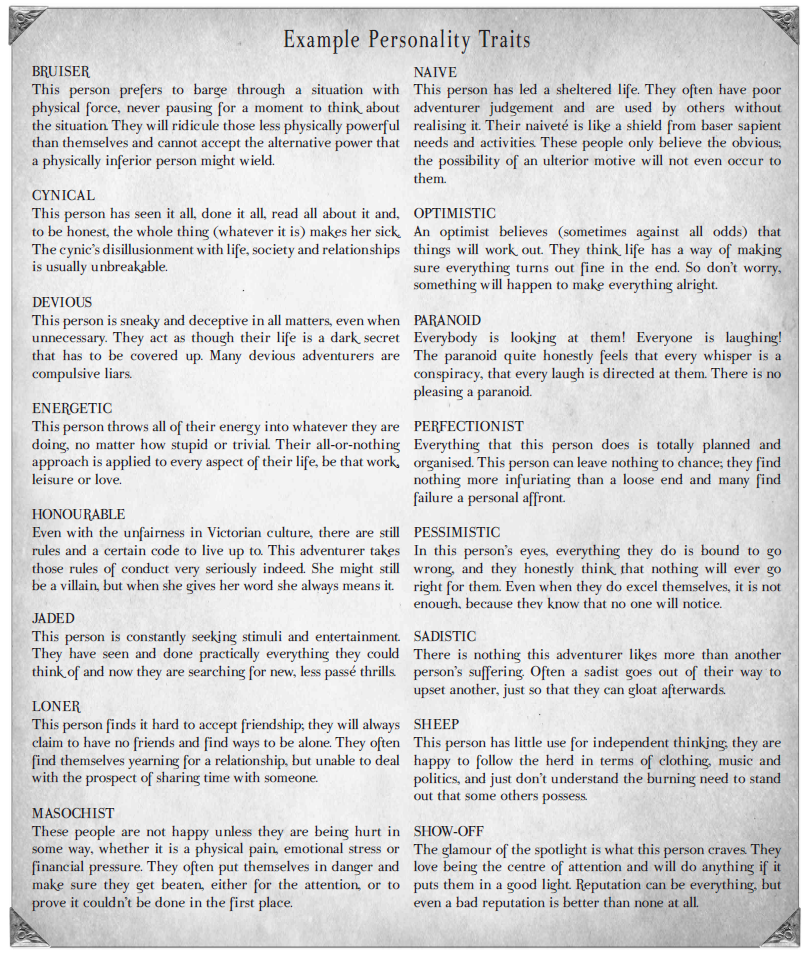
Some of these things are not good character traits/some of these things just do not belong
Name, appearance, birthplace, age, personality, social ethics and contacts are what you need. Contacts are the only one that require any real explanation, vis-à-vis how to get them. You start with Contacts equal to 1+Presence (if it’s negative, you get no contacts). Your contacts are locked by your social class; 1 contact costs 1 point, anyone outside of your social class costs double points to establish. They’re basically a two-way street where you can ask for things but have to return the deed later. Alternately, you can establish a contact as owing you a Favor. Favors are half-price compared to a proper Contact but they’re one use only. Also they don’t have to be established in chargen, you can wait to declare them.
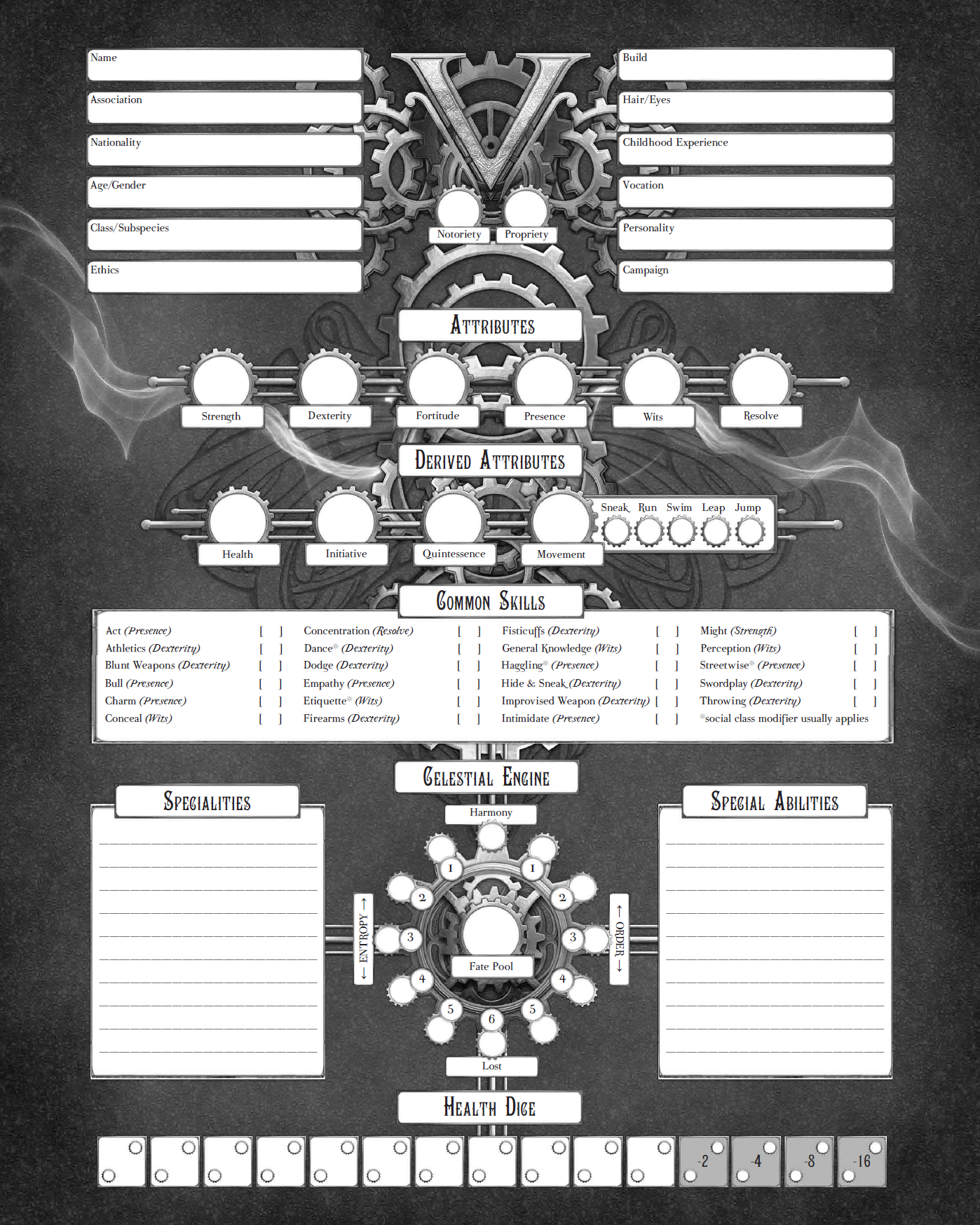
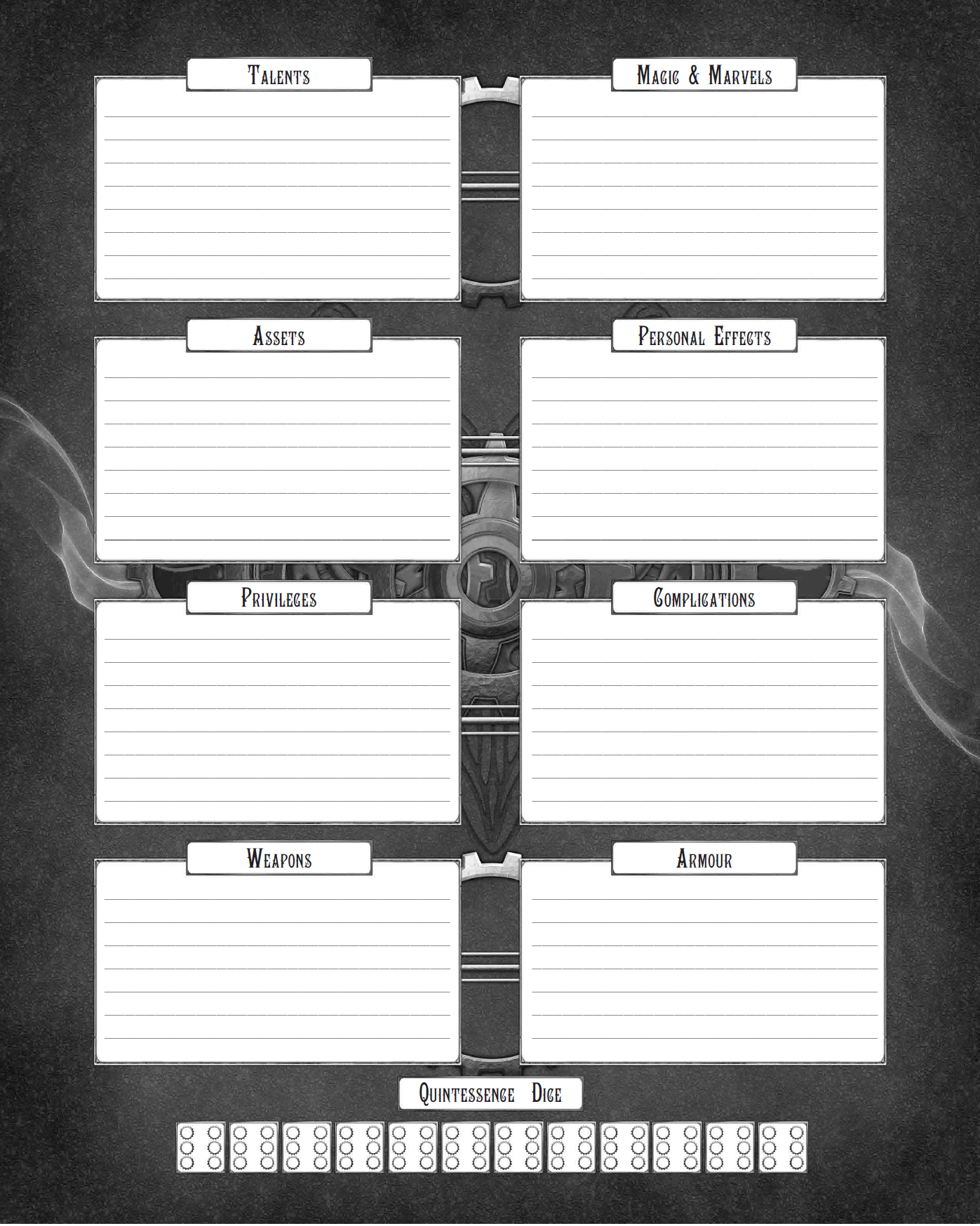
EQUIPMENT AND SHIT
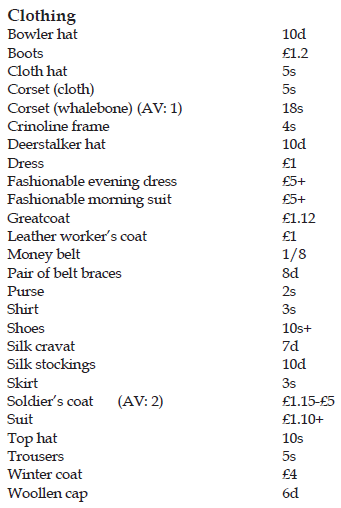
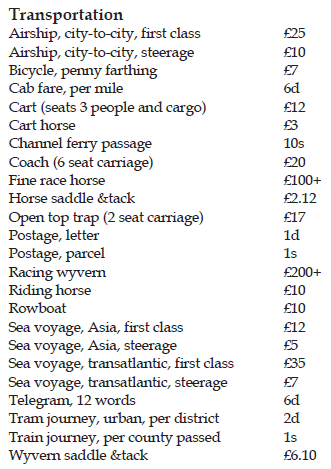
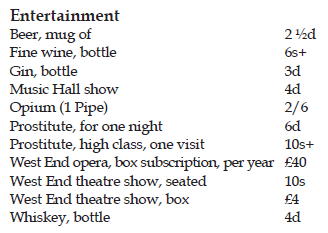
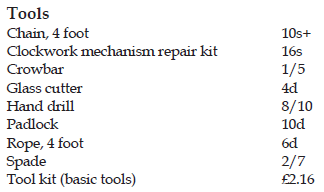
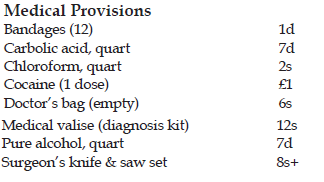
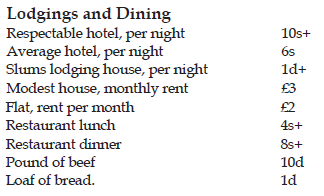
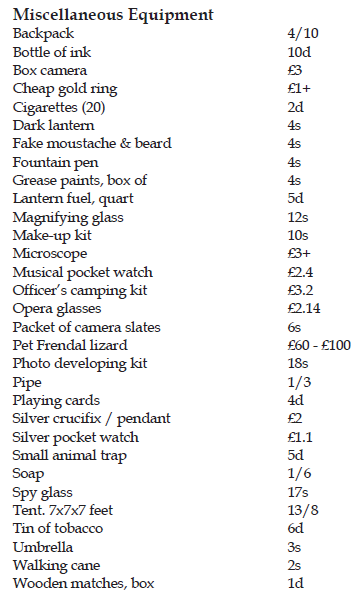
I’m only going to be sharing the stuff that’s really interesting or not readily explained by the name.
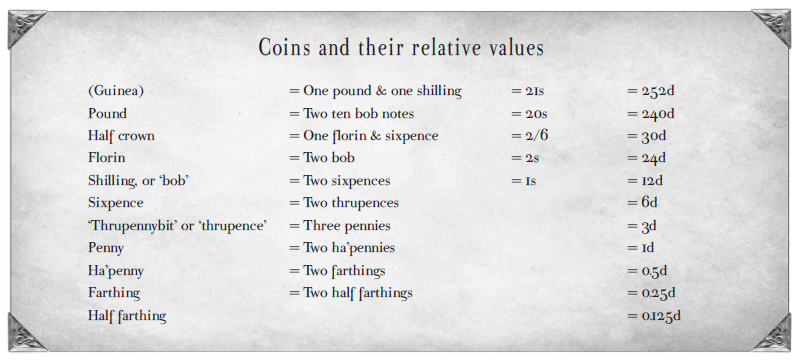
Realtalk: I do not "get" old-style British currency and hewing to that model in a realistic manner is just one more annoyance for me. Don't fucking @ me.
MELEE WEAPONS
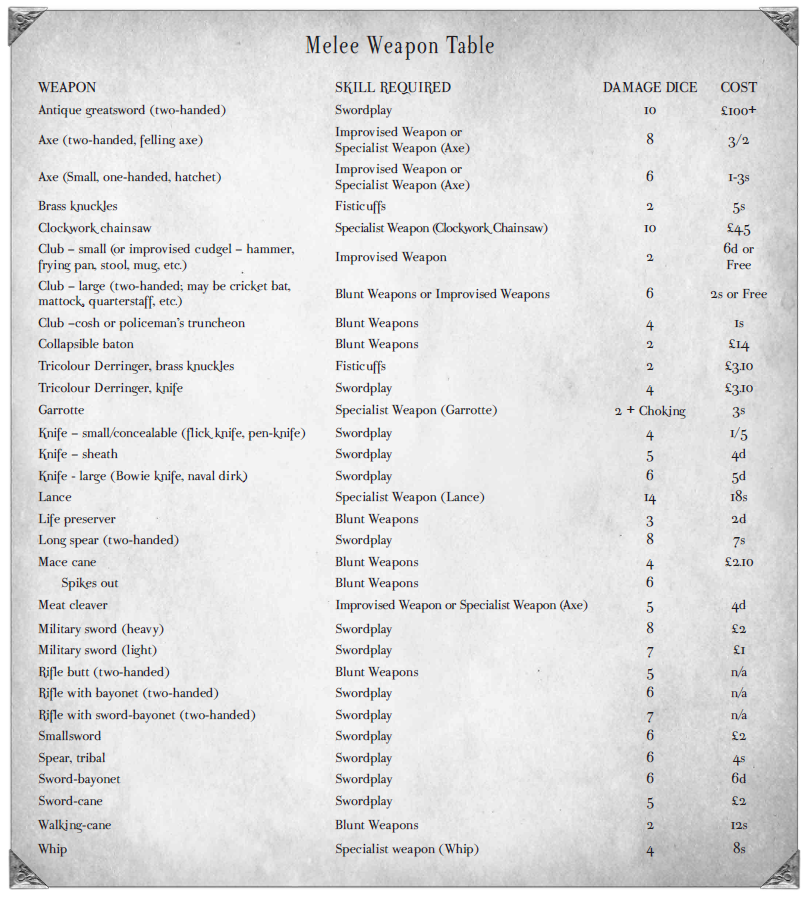
Clockwork Chainsaw: It’s a chainsaw! It’s clockwork! Actually it’s powered by having quintessence pumped into the mechanism and was originally invented by Bernd Hess (not a real person) as a surgical tool. There’s also a steam-powered chainsaw but they’re less common and cost more. Either way, a chainsaw either needs to be mounted on a harness or a vehicle (?!). Because when I think Victorian Steampunk, I think two chainsaws mounted on the sides of a penny farthing. Wait that actually sounds good.
Life Preserver: Apparently this is slang for a sap due to the description that it’s 18 inches long, leather and full of sand or gravel. This took me an inordinate amount of time to understand that this was not in fact a badly designed floatation safety device because the book does not fucking spell out that it’s a slang name. This weapon made me feel stupid and I hate it.
RANGED WEAPONS
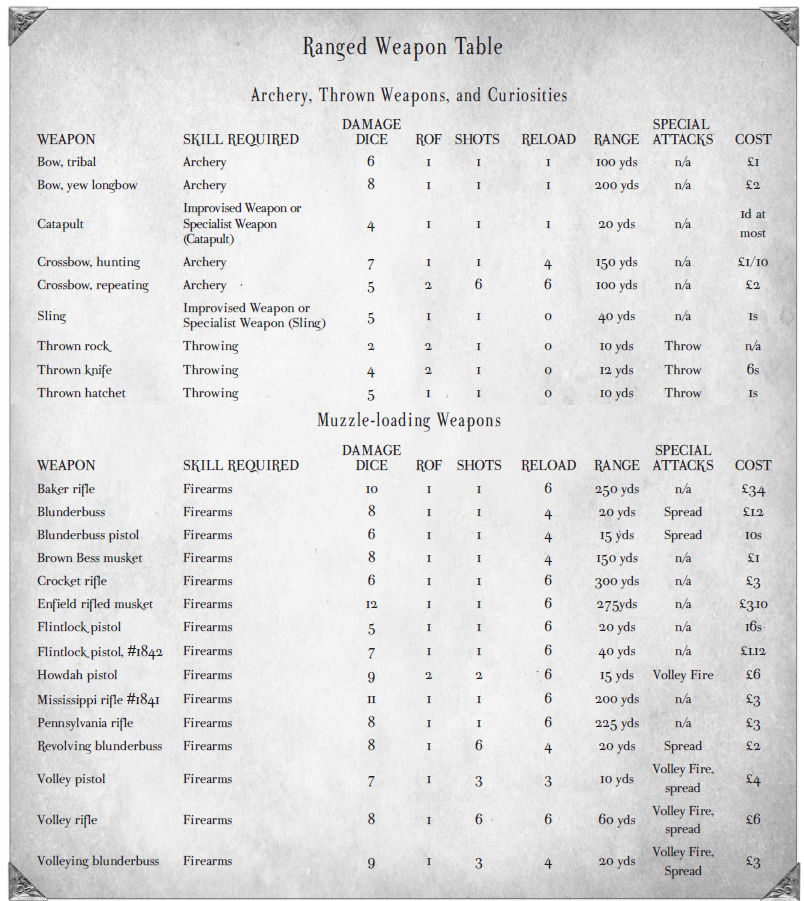
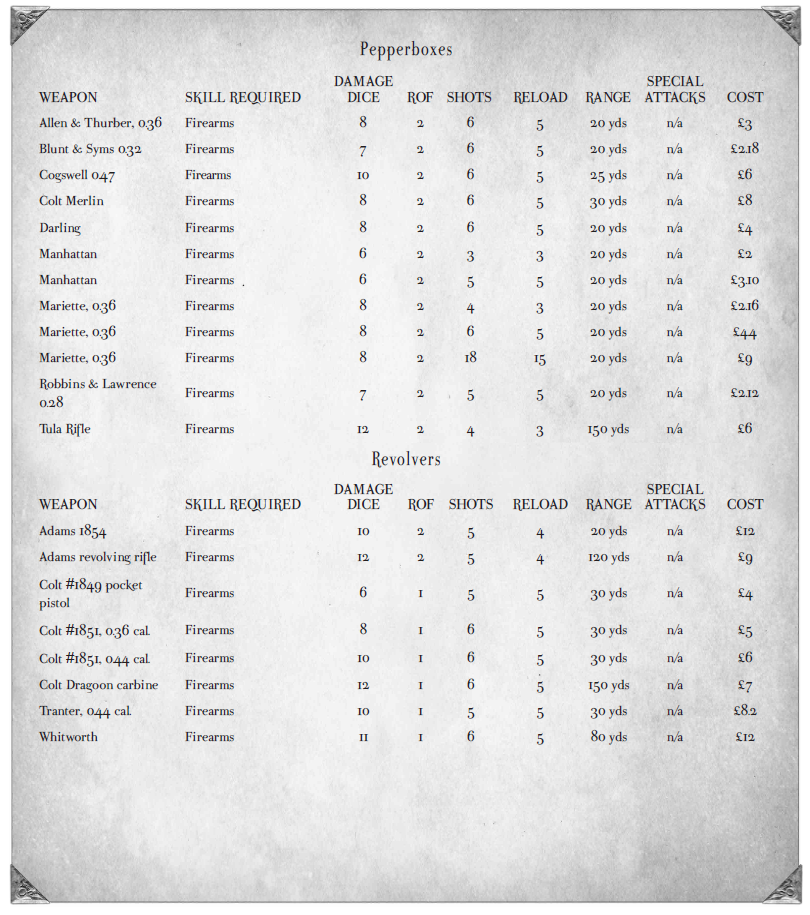
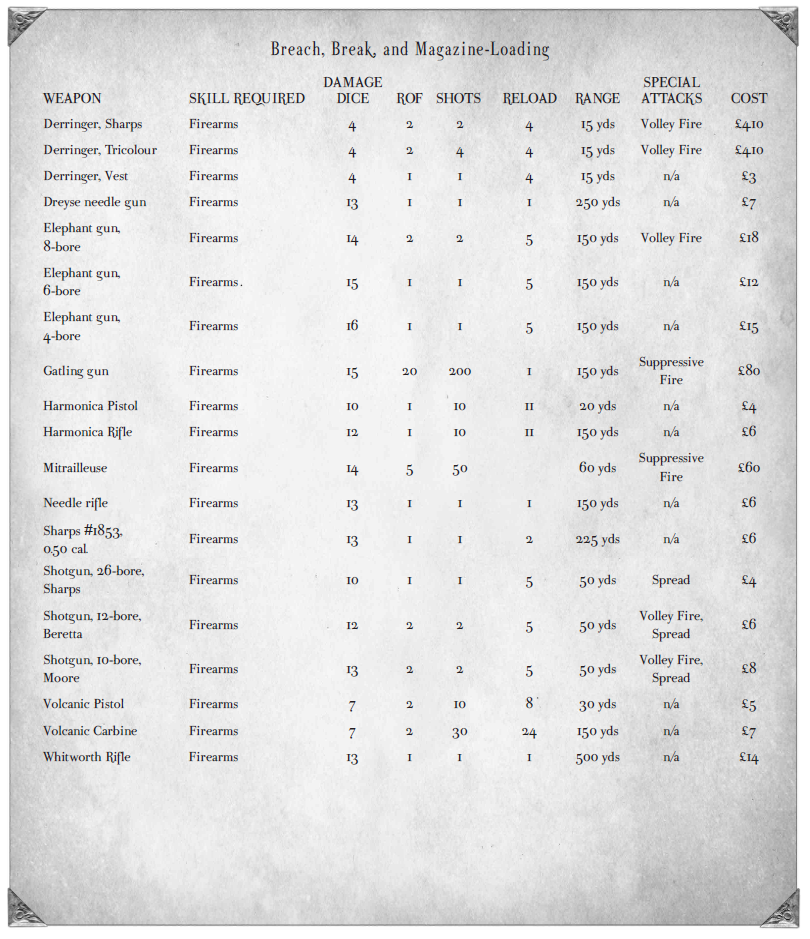
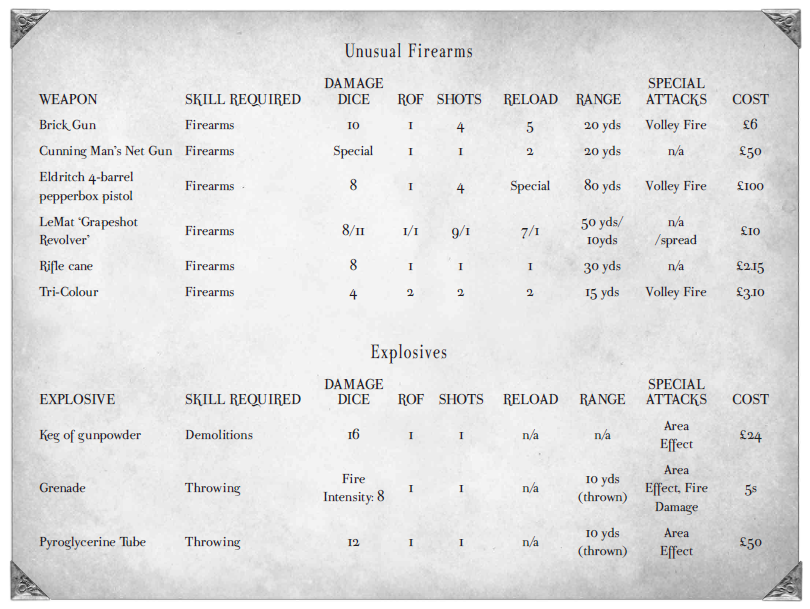
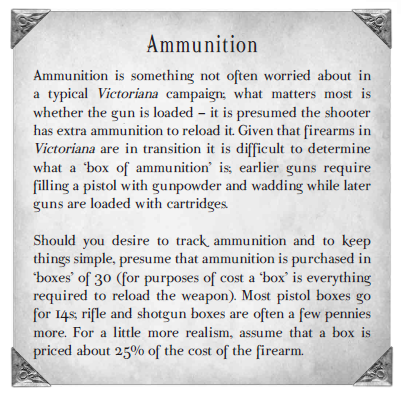
Due to, and I shit you not, the off-handed mention that the Crimean War has actually run longer than it did in our world (citation fucking needed for the rest of the book), firearms tech has stalled a little bit. Revolvers, pepperboxes, harmonica guns, “Volcanic guns”, shotguns, rifles and muskets are the most popular and common types of firearms. Aside from getting +1 to hit with rifles and muskets, here’s the most notable thing about the guns: the Gatling gun, this universe, was invented by Gatling to help the Allies turn the tide and win the Crimean War because he has many friends in Britain and France. Which is absolutely not where the Gatling gun comes from and is just an absolutely fucking galling notion.
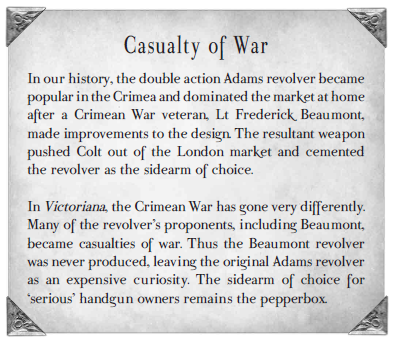
Cunning Man's Net Gun: This gun was never used by a Cunning Person; it was just inspired by their ability to capture enemies without killing them. It's a pistol loaded with an enchanted net that is an absolute pain to try to escape from.
Eldritch Pepperbox Pistol: In the hands of a normal person, this is just a pepperbox. In the hands of someone capable of using magic, they can load quintessence into the barrels at a rate of 2 quint per round and then shoot magic at people. It's also capable of firing all of the barrels at once when sufficiently loaded, plus the magic user can pre-load the barrels and hand it off to someone else to shoot. The average pistol has 4-6 barrels and each barrel fired at the same time adds 1 black dice as a penalty. If you really fuck up firing the gun, the barrels can explode and hurt you.
Harmonica Gun: The Harmonica Gun is a gun with a horizontal slide that holds all of the bullets. They're cap guns that require a free hand to move the slide to the next bullet. Because of the weird stability from the slide being crammed through the gun, it inflicts a 2 black dice penalty to use. Upside: more bullets per slide.
Brick Gun: The Brick Gun is a modified harmonic pistol to have two barrels stacked on top of each other and two slides of bullets. It can be used for volley fire or single fire by only loading one slide at a time. It is also hilariously hard to use; 2 black dice because the slide is unwieldy, 3 black dice because volley fire is finicky and there's an additional 3 black dice penalty for every point of Strength below 3 due to how heavy and clunky the gun is.
Howdah Pistol: A large caliber pistol that straddles the line between sawn-off shotgun and big fucking handgun. Ever play Uncharted? It's the Pistole. Originally invented in India for protection from animals, they're favored by Brits who feel the need to blow a hole in anything they aim at.
Tricolour Derringer: A modified derringer colored to look like the French flag and favored by revolutionaries. Has three barrels but you can only shoot two at once and comes with an attached set of brass knuckles and a knife for emergencies.
Volcanic Gun: Unfortunately, this is not a flamethrower or a lava-shooting gun. The Volcanic Gun (pistol or rifle) is made by the American Volcanic Repeating Arms Company. They're notable for being two things: the first gun in Victoriana to shoot with metal-jacketed bullets (which they call "rocketball bullets") and for being lever-action guns fed from a tube magazine. Also due to "limitations of the rocketball the damage of a Volcanic gun is less than comparable pistols and rifles". God only knows how true that is to real life, but look at what our weapons are loaded with these days.
Whitworth Firearms: Whitworth guns use "a better engineered barrel" and "hexagonal bullets" to shoot further at the cost of being more expensive. I don't really care to know how accurate or true that is, so I'm not going to say much more than it sounds like bullshit like hexagonal water.
ARMOR
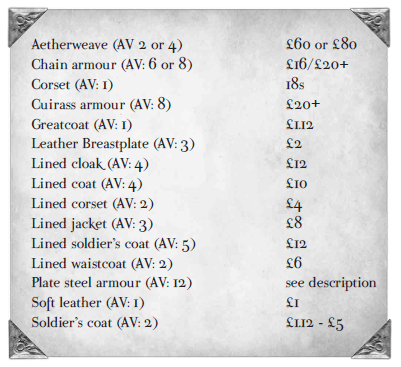
Armor really has only one thing worth explaining and one rule worth mentioning: fine quality armor gives +1 to AV, poor quality halves the AV. Also people don't really walk around wearing armor in proper society but fuck proper society says I.
Aetherweave: Aetherweave is enchanted thread that can be woven through regular clothing to add +2 AV...if you burn Quintessence to activate it, 1 Quint for Resolve rounds. Upside: stacks with other armor you're wearing, there exists a version that gives +4 AV for 2 Quint. Downside: requires Quintessence period to power.
NEXT TIME: Book III, the book about mechanics. It's going to take a very careful hand to balance between depth of material and making it interesting and all I have is a clenched fist.
BOOK THREE: Part One
Original SA post
BOOK THREE: Part One
Or
Bad Dice Systems
Or
It's amazing what you can do when you start minmaxing and then decide to just go off the fucking rails
Welcome to Mechanics Hell! This is going to be a short installment and look into Mechanics Hell because these made me so angry that it lead to me engaging in bullshit to fuck with the system. Let's get down to brass tacks, shall we?
Victoriana 3e uses what is called the Heresy System. This is the streamlined version. There are still 40 some-odd pages here. In a nutshell, here are the rules of rolling:
- Dice pool are assembled and rolled from Skill+Attribute. Pretty standard for d6 systems.
- A 1 or a 6 on a dice is a success. Kind of an odd way of doing it but sure, this is also pretty standard.
- Any 6 can be rerolled for a shot at another success. Whoa there, down this way lies madness and shenanigans.
- You need, on average, 2 successes to do a thing successfully. The GM is allowed to count 1 success as a partial success.
Hi and welcome to Black Dice, population of Fuck You.
- Black Dice are rolled after the whole pool has been rolled and added depending on difficulty or modifiers. The player's pool is never shrunk, the Black Dice are just pooled together and rolled.
- A 1 or a 6 on a Black Dice removes a previously generated success.
- Unlike normal dice, a 6 on a Black Dice does not explode.
- Difficulties tend to come in installments of 3.
- There's a 1-in-3 shot at getting a success on a regular dice. For every three dice, you get on average one success.
- There is a 1-in-6 chance of an explosion (16% chance) and a further 1-in-6 chance of another 6 (for a total 2% chance of a second success).
- Conversely, there is a 1-in-3 shot of getting a success snatched from your hands.
- Due to the fact that Black Dice come in threes, you will on average lose 1 success per level of difficulty.
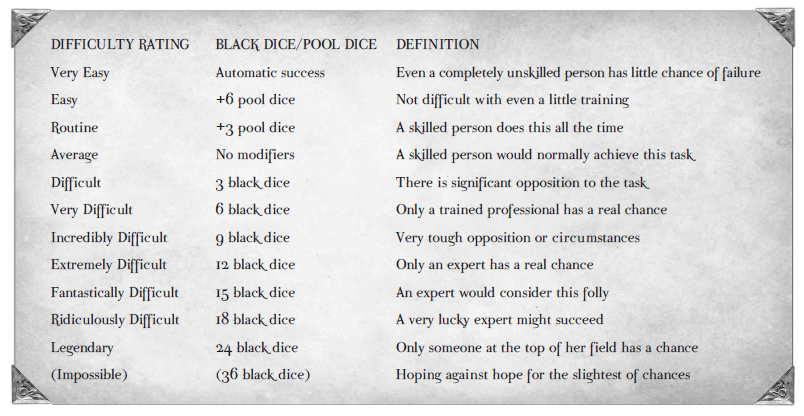
Hmm. Well I can't say I'm really much of a fan of this structuring, plus these seem rather arbitrary. Oh wait hold on a second, there are further rules.
- "Most Difficulties fall between Average and Incredibly Difficult. Higher difficulties should be reserved for seasoned players as beginners would not be expected to make them." Alright so on average you're losing up to 3 successes per roll, which is...problematic for victory.
- "Regardless of difficulty, some Adventurers are so skilled in certain areas that an Average or even Difficult tasks are very easy for them. When performing a task, an Adventurer always has the option of trading 3 dice in their pool away for a single success. She can do this as many times as she has multiple of 3 dice. Thus, an Adventurer with a dice pool of 6 can automatically succeed Average tasks." Alright it's nice that there's the ability to take-ten for certain things, this sounds pretty reli-
- "While automatic successes don't negate black dice, they can negate them, although this often requires very large dice pools" oh
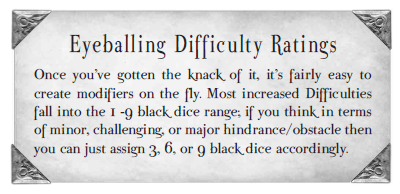

Let's skip the rules for extra degrees of success and the rules for opposed rolls (both sides roll their own dice pools plus they each have the same Black Dice pools of penalties, winner is the one with highest total successes) and the rules for group rolls (helpers roll just the Skill and add their successes to the leader). We have a problem here. No matter what you do, the Black Dice are beholden to random probability. It's nice that you can just guarantee the minimum successes, but what is an average dice pool?
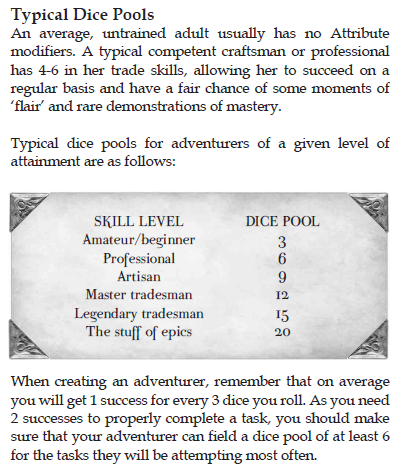
oh
FURTHER RULES
- You can add a second skill to a roll if it's complimentary. Wits+Medicine+Science (Biology) is the example the book uses.
- If you have more Black Dice successes than regular successes, that's a foul failure.
- Retrying a check adds +1 Black Dice per success due to frustration.
Don't believe me? Let's take a look at the premade character that was made in the chargen chapter.
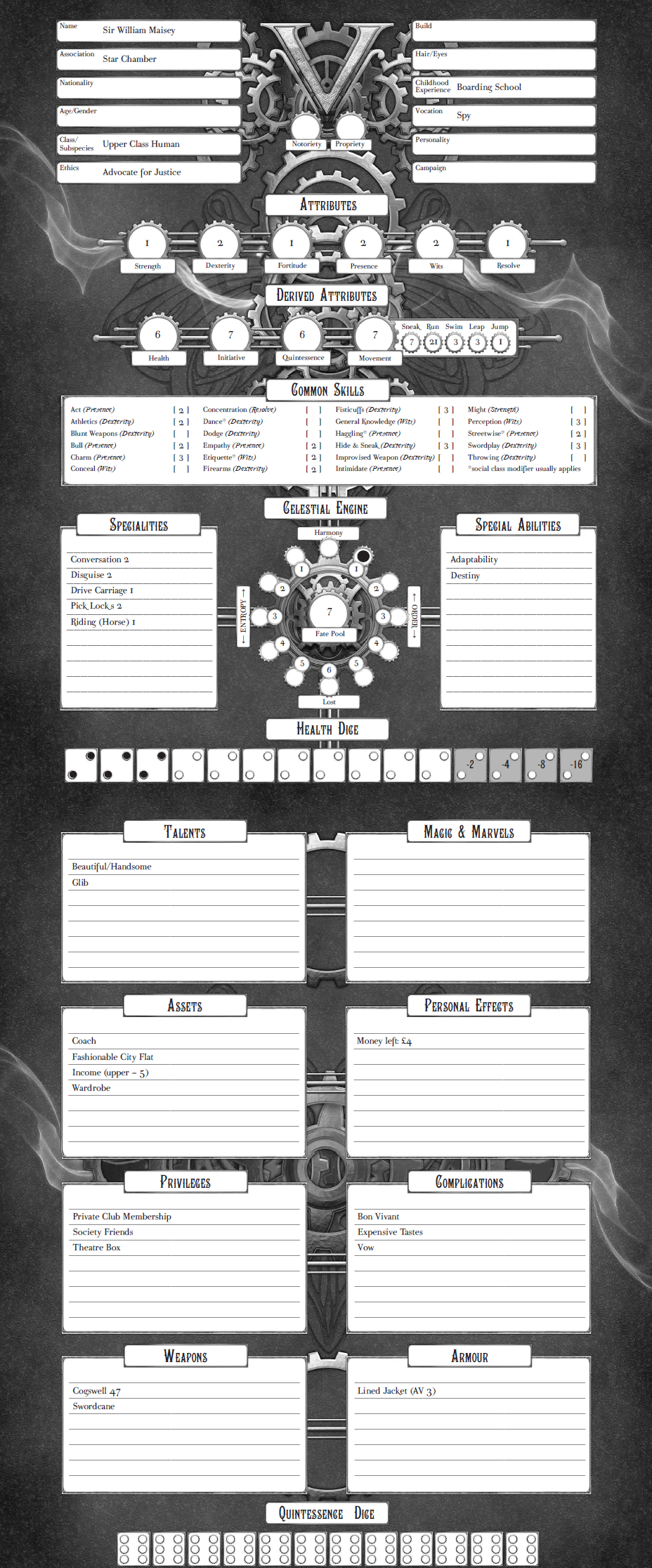
Meet Sir William! He's a Spy! Isn't that exciting? He has Glib which means he gets +1 to social rolls to lie. Beautiful/Handsome means he gets +1 dice to social situations where his beauty is appreciated. Also he has a whole bunch of Specializations which is a fancy way of saying "skills that cannot be used untrained, they are not bonuses to certain skills". What does that mean in motion?
- William has a 5 dice pool to use that sword and 4 dice pool to using that gun.
- His Charm pool is 6, but his Act and Perception is 5 and Empathy, Etiquette, Conversation, Disguise, Streetwise and Pick Locks pools are all 4.
- William is an awful Spy. He is really only guaranteed to Charm on average. Everything else means that he on average will squeak by with a partial success.
- A Difficult Challenge is too spicy for 75% of what William can do and he is at a pool size and probability disadvantage to try to attempt them if he can't mash them together with the Complimentary Skills rule.
So what happens if we do game the system?
Well it started with wanting to make an idiotic inbred useless aristocrat but, uh, it took a magical turn when I kind of ran out of things to buy to do that. One would argue that I completely and utterly failed to do that to begin with and instead went off in a much better direction.
Let's say hello to Fopsworth Chindribble.
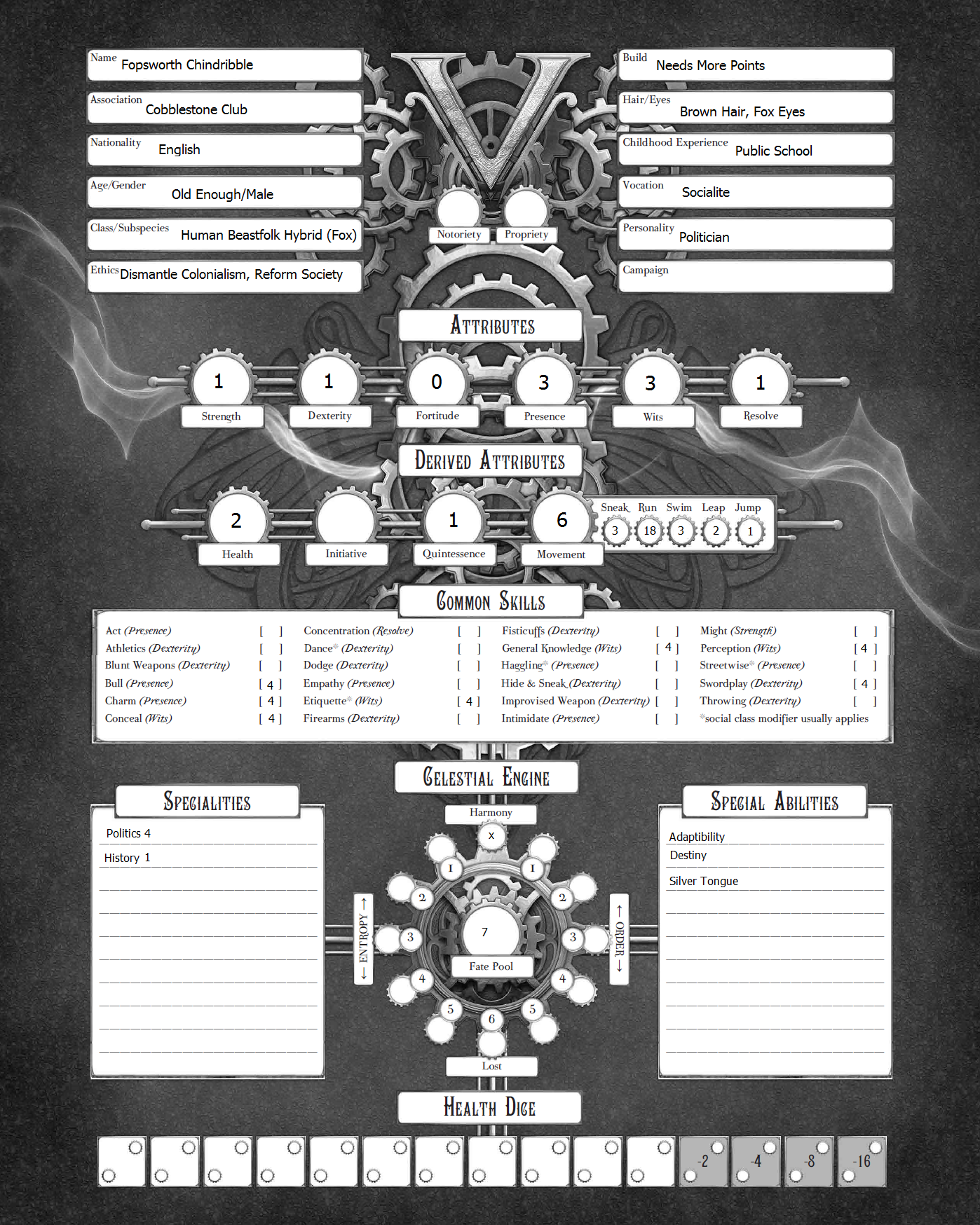
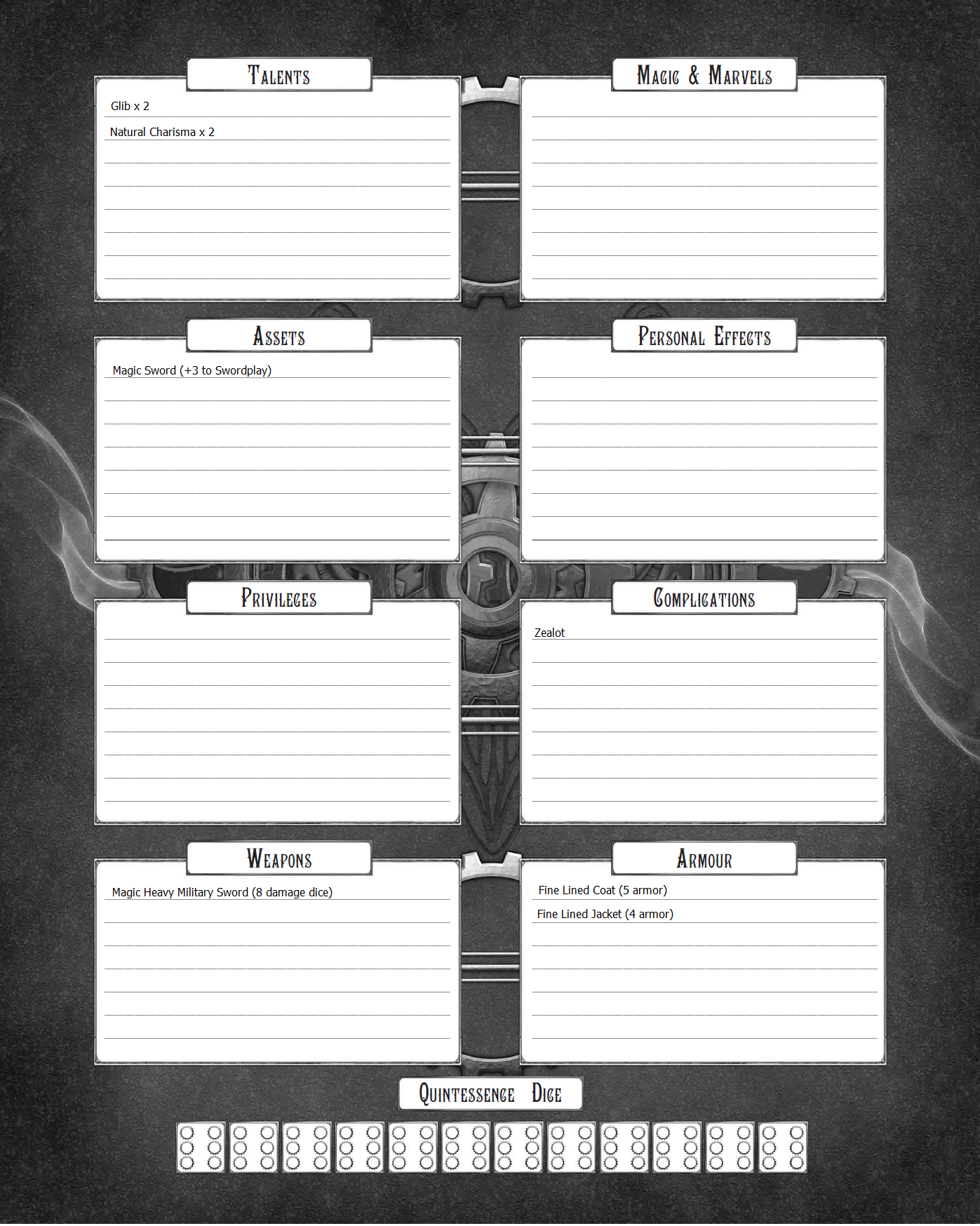
For starters, Fopsworth is a Beastman Hybrid and has the eyes of a fox. In turn, he gains the Silver Tongue ability which means that Fopsworth has a reduction of up to 3 Black Dice per every social attempt to lie to someone or make them do something they don't want to do. That's all that happens from Beastman Hybrid. Fopsworth is an Upper Class Human which means he went to a good school and he learned about politics and in fact did quite well with them. As a Human, he gets 1 extra point to assign to Attributes and he also starts with 7 in his Fate Pool. These are immediately used to bump Presence and Wits up to the maximum human value of 3 for starting characters.
Hey kids, let's take a brief detour to a magical land where I'm not minmaxing. Say we're making a regular character. Here are two important things to know:
- 1: the best an Attribute generally is for a subspecies is +3 or +4 if they're really good at it. Some of them are +5. The ones that are +5 generally have major drawbacks like Ogres.
- 2: the cap of a starting skill for a character is 4.
- On average, someone willing to specialize in a few skills will start play with 7 or 8 dice in the pool for that skill. Someone who wants to do a bit of everything is at 5 or 6. The people in the latter are in a place of disadvantage because specialization is what pays the bills and gets the kills.
Fopsworth can now regularly lie at a Very Difficult level with absolutely no penalty. He can now take good punches at Incredibly Difficult lies. In fact because I wanted to get him some more points, I gave him Zealot which gives 3 Black Dice in a situation where people don't believe in equality and a government that helps the people. Nothing in this book says that Natural Charisma doesn't apply here, nor that lying through your teeth to people you disagree with doesn't either. I got free points, sunk some in skills, and then I got bored.
So I gave him combat proficiency to boot, a magical ancestral sword and because Fopsworth has the money to get good armor, he does. Yes he's a layabout socialite. He also has a magical sword that gives him +3 to Swordplay rolls and he has +4 to Swordplay. His Swordplay pool is 8, meaning that if someone tries to kill him for his beliefs, he has a good chance of fighting back in a civilized form of self defense.
Oh did I mention that I gave him +4 to Politics? Because I did. And I would argue that good politics is knowing how to get people to act against their own self interests. I would also argue that Politics and Charm are a great way of getting people to vote Labour (or we can be cynical and say Politics and Bull) and that they are complimentary.
William's Charm Pool is 6. He can easily succeed at Average social things.
Fopsworth's Politics+Charm pool is 13; 3 for his Presence, 4 for Politics, 4 for Charm, 2 for Glib. He has -3 to all Black Dice penalty for lying/convincing people to do things they don't want to, and Fopsworth also treats penalties as one step less. Very Difficult political arguments are no problem for him. He wins very handily. In fact, Fopsworth has a pretty good chance of taking a punch at Extremely Difficult political argument rolls (6 Black Dice are a threat he can deal with). Hell by all metrics, he should be a complete black sheep and people should be like "dear god, an upper class Beastman?!". He can very easily smooth over any racism or social faux-pas by A: lying and saying "I'm not a fox man" or B: flying into political oration.
For the record, I didn't even finish his character sheet. I just got the point where I realized my attempt to make a Furry Bruce Wayne instead resulted in Socialist Sword-fighting Foxman and decided to just call this character done and perfect.
Thoughts: There are substantial issues with the dice mechanics. It is incredibly satisfying and fun to break the problems over your knee and then accidentally find the gooey caramel center in the process.
NEXT TIME: we return to Mechanics Hell proper.
BOOK THREE: Part Two
Original SA post
BOOK THREE: Part Two
Or
Uggggggh, the Combat Mechanics Chapter
Alright, so. Combat and mechanics. Have you ever played a RPG before? Have you ever played D&D or Shadowrun before? Yes to both? Alright well then that's it, see you NEXT TIME with other systems that aren't combat.
Okay perhaps I'm selling Victoriana a bit short but let me be blunt: there is nothing new here for me to share, really. Oh sure, there are some weird quirks and odd choices. You're getting those. I'm not explaining how initiative works (exactly how you think it does) or how All Out Dodge works or how cover inflicts a penalty to hit. There is nothing new under the sun that never sets over the British Empire. Instead you're just going to get the things I think are notable. As a refresher, you amass a pool of dice, you roll them, success is on 1 or 6, 6s explode, then you roll however many black dice are inflicted as a penalty, 1 or 6 removes a success, their 6s do not explode, you never want to really make any rolls where your pools are not guaranteed to at least come up with 1 or 2 victories. Got it? Excellent.
Initiative: if you attack someone lower than you in the order, you get +2 to hit them.
Combat: rounds are 3 seconds long. You can take 1 action per round. Anything that could be done in 3 seconds is an action. There are free actions. Sometimes free actions require you to make rolls depending on what you want to do. You can make one action per round per point of Dexterity but all of your dice pools for those actions are reduced by dividing each individual pool per action by how many actions you're taking. This means you should never ever take more than one extra action and only if you have a fuckoff huge dice pool.
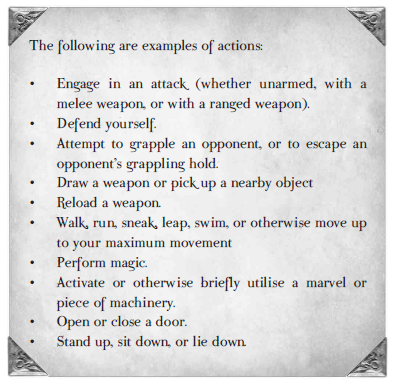
Drawing a weapon counts as an action unless you do it while moving into position in which case it's just counted as something you do for free.
Melee attacks can either be countered or evaded. Evading requires a dodge+combat skill roll where more successes than the attacker means you avoid it. Countering means you make an attack roll against your attacker and the one with the most successes lands a blow and deals damage. From a mechanical standpoint, one can surmise it's completely pointless to invest points into Dodge when it's more efficient to just sink more points into your weapon of choice, out-stab your opponent and steal a free attack on them in your turn. There is no limit to how many defensive moves can be made in melee. It is completely feasible to have hurt the opponent far more than they hurt you before it's even your turn.
Ranged attacks work the exact same way except instead of countering it's called dueling. Again, you just want to pump points into guns, never put points into Dodge for combat purposes. Dodging is even harder in a ranged situation because depending on distance you can either add Half or None of your points in Dodge to your dice pool.
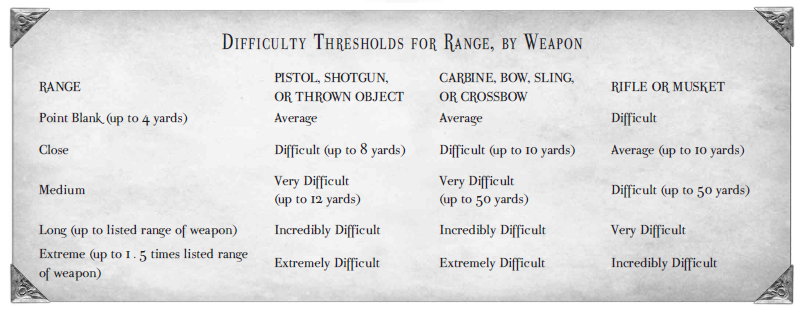
Damage: Damage is dealt on a success when you hit. In melee, add dice equal to your Strength after any relevant penalties. In both melee and ranged, all successes over the opponent's attempt to defend are automatic damage inflicted. You roll the damage dice of a weapon. Damage is always Base 1 damage+Successes Over Defense+Successes Rolled. Punches and kicks without brass knuckles just roll 1 damage dice or 2, respectively. Therefore it stands to reason that the best weapons in the game are the ones with the highest damage dice pool. The accumulated successes deal health pips of damage which we'll get to later.
Fighting from a mount gives you +2 damage dice at the cost of a 6 black dice penalty if you're not trained.
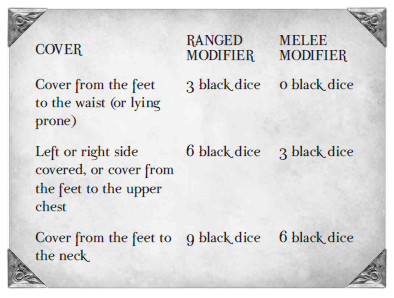
Fighting with your off hand is harder than your dominant, go figure.
Fighting unarmed against armed is inadvisable. You have 3 black dice as a penalty to avoid getting hit or 3 more if it's a longer weapon like a sword. You can negate 3 black dice by taking 1 damage. A boxer fighting a swordsman can counter by automatically taking 2 damage.
Armor exists. It has flat damage reduction (reduce X points) and has two optional rules. 1: armor might not cover everything. 2: for every five combats your armor gets hit, reduce 1 AV until repaired.
Called shots add black penalty dice to rolls.
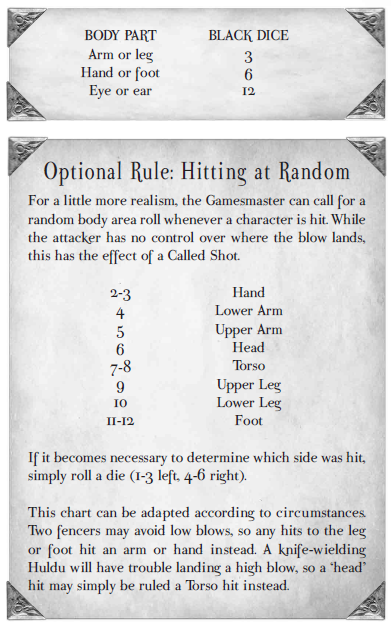
You are probably never going to successfully shoot someone in the eye unless specced to do it.
Grappling is Dex+Fisticuffs. A successful attack traps the opponent and they can do nothing but try to wiggle free. You can automatically deal 1+Strength dice to someone who is grappled. Escaping a grapple is, of course, contested and on 5+ success you reverse the grapple. And you can choke people or partially grapple by holding them in place.
You can smack away an opponent's weapon if you're using a two-handed weapon and clashing against their weapon to inflict a penalty for their next attack.
Charging inflicts a to-hit penalty of 6 black dice but add +3 damage dice, in what is quite honestly one of the most radical charge departures I've ever seen in a heartbreaker like this.
There are rules for missing with thrown weapons and they basically amount to "it scatters. Roll 1d6. It will either go to the left, to the right, undershot, overshot or a mix of a direction and undershot/overshot".
You can only disarm a weapon if the weapon in question is held with one hand.
Just gonna share this next one verbatim: "Slapping a Cad in the Face".
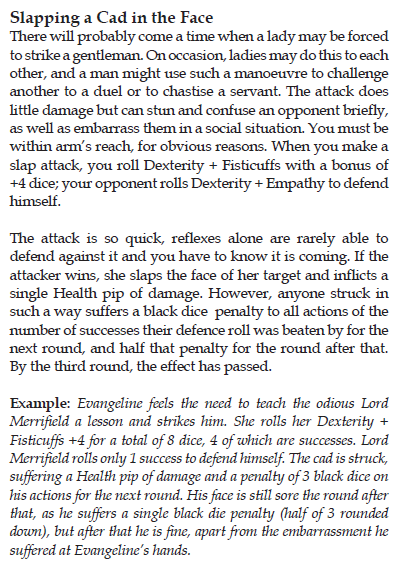
Stunning someone has a 6 black dice to-hit penalty but forces a Resolve+Stamina roll on a successful hit vs. immediately pass out.
Shooting into melee might count as surprise against the enemy if they don't see the bullet coming but it inflicts a 3 black dice penalty.
You can aim for as many rounds as you have points in a skill and gain +1 to hit for each successive round.
Rate of fire limits how many attacks you can make with a ranged weapon.
You're allowed to load a gun that can either use shot or spread with as many alternating types of ammo at you want in a clip. So if you want to load shot shot spread shot spread spread you...can.
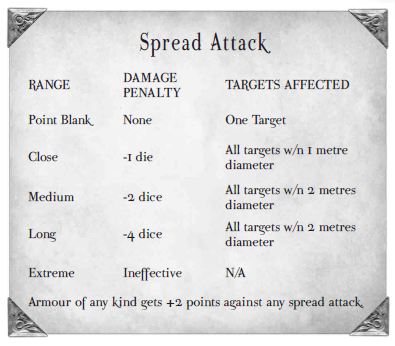
I kinda have to share the rules for suppressive fire too because basically how I read it is "if you shoot wildly, everyone has to dodge or you hit".
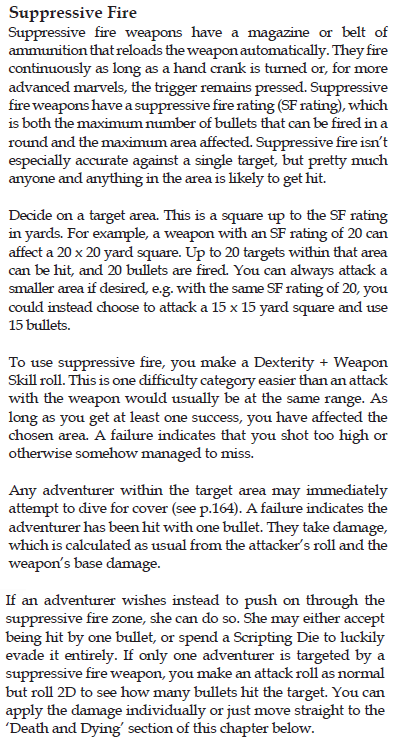
You can fire as many loaded barrels as a you want at a single target but have to make a Strength+Firearms check with 3 penalty dice per shot or else you'll fall on your ass.
DAMAGE
Health is probably the weirdest part of this whole game. You have 2 pips of health per dice you have. You have total health of 2+Fortitude. So Fopsworth Chindribble, sword-wielding political foxman, has 0 Fortitude so he has 4 pips of health total from the 2 inherent dice. However, in addition to the basic dice you have 4 more shaded dice of health pips that you can lose where every time you lose pips from those you have a black dice penalty to everything you do (-2, -4, -8, -16). Each round you're in the shaded health zone you have to make Resolve+Fortitude to stay awake.
There are two forms of damage: bruise and lethal. Bruise damage knocks you unconscious and heals easily. Lethal damage is harder to heal and runs the risk of permanently disfiguring the character.
Right, so here's the problem with that idea: it is criminally easy to permanently disfigure a starting character. Take Fopsworth, who has 0 Fortitude. Apparently any damage at all can result in at least a scar. The upside is that permanent damage can be a scar at minimum and will gain a Complication that can be leaned on to generate XP. The downside is you can lose limbs this way depending on how your GM is feeling and you might need to spend money on a prosthetic. Scripting dice can be spent to avoid permanent injury.
If you run out of shaded dice you're at risk of immediate death. You have Fortitude+Resolve rounds where medical attention can save your life. Scripting dice can be spent to keep you alive, otherwise you automatically die. Wits+Medicine can heal 1 pip of dice for every success as long as their shaded dice are still fully unreplenished. After a night's sleep, any shaded dice are regained and the victim regains 1 health pip and will then regain 1 pip for every 2 days of rest. So basically, if you almost die, you want someone to stabilize you, then you can sleep it off, then you want someone to magic the shit out of you until you're healthy again.
Repairing machines is a lot like healing except you have to keep making Ad Hoc Repair rolls until you can get to a workshop.
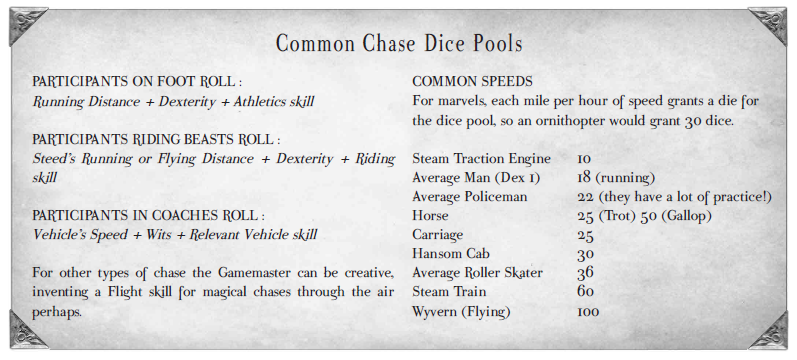
So, in short:
- Never take multiple actions even if you have a huge pool.
- If you're going to take multiple actions, make sure you attack someone further down the attack order than you.
- Only carry weapons that have the highest damage dice pool.
- Never invest in Dodge, only invest in one melee skill and one ranged skill so you can counter-attack someone during the own attack.
- It's a completely viable strategy for you to wear armor, only know Fisticuffs, ignore the black dice penalty and have the armor eat the damage you'd automatically take and either A: half-grapple someone when they attack you, have a gun held in one hand and shoot them in melee on your turn so they can't dodge or B: fully grapple someone as a response to their attack, hold them in place and let your friend shoot into melee so they'll have an easier time hitting them.
- Never make called shots to anything smaller than a limb.
- Always carry a two-handed weapon so you can never be disarmed. You can be tripped and lose your grip on your weapon, but you can't be disarmed.
- If you have 0 Fortitude (which is considered, like, average, it's having more than 0 that's considered exceptional) you're running a constant risk of accumulating scars at any given moment you go into a fight.
- If you don't care about aiming or ammo conservation, suppressive fire is a good way to shoot people.
- It's easier to slap someone in the face than punch them.
- A bush has as much basic health as someone with 0 Fortitude before accounting for shaded dice.
BOOK THREE: Part Three
Original SA post
BOOK THREE: Part Three
Or
If I Don't Call It Morality I Can't Get In Trouble For Bad Morality Mechanics
Dramatic Systems
Here are some charts. Read them if you care to in addition to the bullet points. In short, most of this chapter amounts to:
- Rounds last for three seconds or up to six.
- Don't get set on fire or electrocuted.
- Roll your Fortitude vs. the potency of drugs to see how they affect you. The effects of drug potency is cumulative; reduce the potency by the amount you're reducing the dose or increase by how many doses you're taking.
- Virility of a drug is just how many Fortitude/Resolve successes across many rolls it takes to suppress one of the effects of a drug for a single round (except taking damage).
- Infectiousness of an illness is how many Fort successes you need to avoid infection.
- Speed of a disease is how often one needs to make a Fort roll to resist Potency. Lifespan is how many times one will make rolls to resist, max, before you're fully cured.
- Disease damage is dealt either as a flat amount of Health Pips lost per failed roll until death or you lose X Pips where X=the amount of Potency not covered by success in a Fort roll.
- No disease ever says which kind of those damages it deals.
- Don't drown or fall from heights.
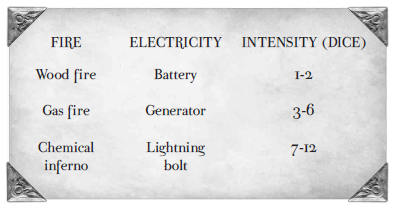
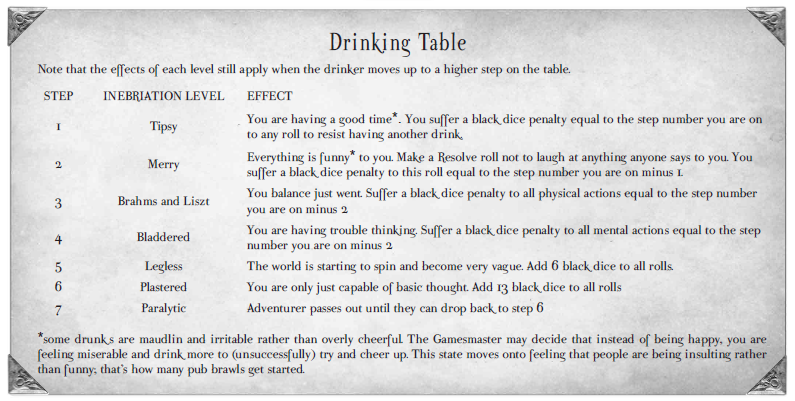
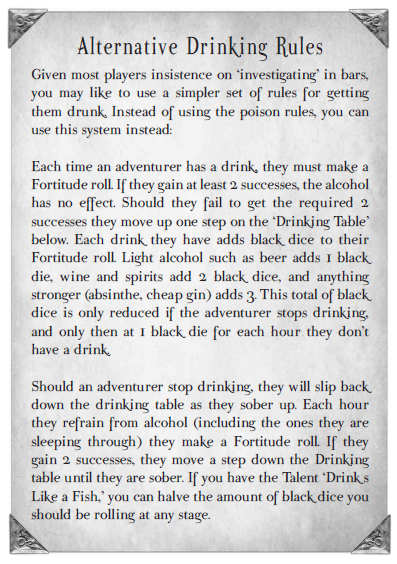
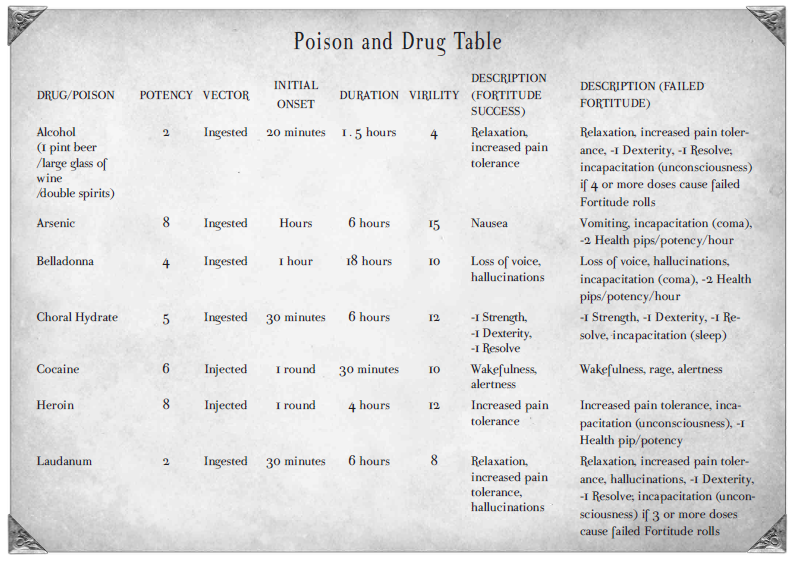

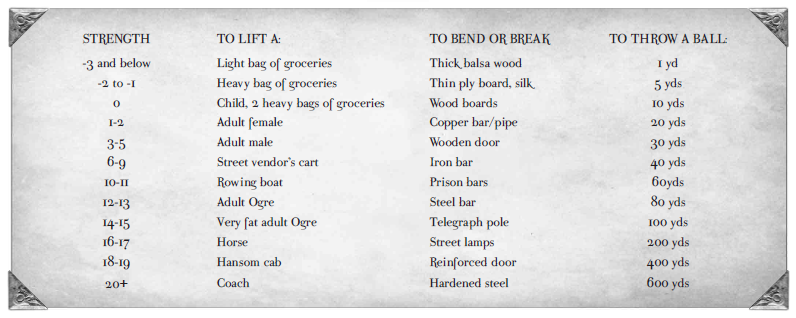
- Blunt damage is bruise damage and heals up to 2/3rds of all of your bruise damage at the rate of 1 Pip per half hour. The other 1/3rd is beholden to normal healing rules. Bruise damage that exceeds your health knocks you out.
- Anything worse requires long-term healing where you take it easy and heal 1 Pip per day. Or you can go to a hospital heal 3-6 Pips every 2 days...at the cost of having to roll increasingly harder Resolve rolls to basically not catch Victorian MRSA or any other diseases that might be in the ward.
- Poison and disease counts as bruise damage if you go to the doctor.
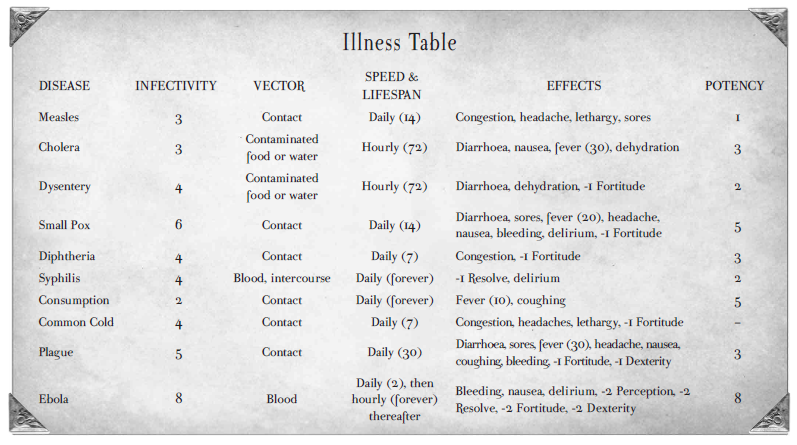
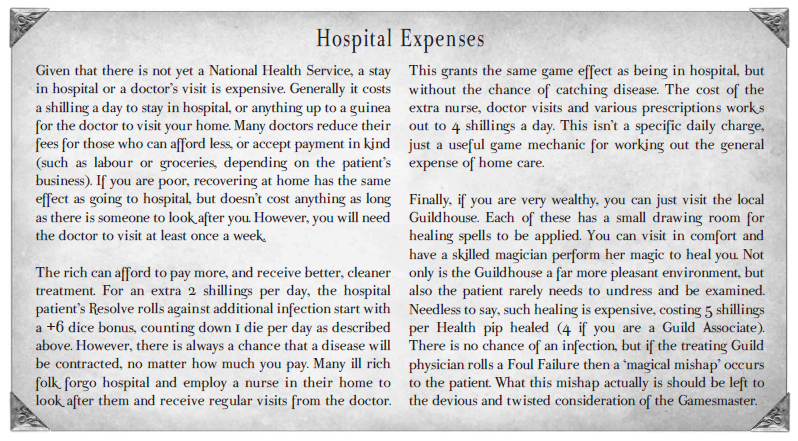
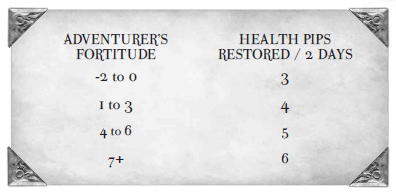
Fate Points
Ah yes, the luck mechanic. You have X amount of Fate Points depending on your species and depending on how well your Complications play to the story. You can only get 1 Fate Point per complication per session and free Complications can't be leaned on for points. They also automatically refresh per session and don't roll over between them. So what exactly do they do?
- Add an automatic success for a roll per point spent up to three points...and these successes can be eaten up by penalty dice from black dice.
- Reduce damage from an attack...to a minimum of 1 point, you're not allowed to fully negate an attack, it still hit you, shut up.
- Burn points to stay awake when you should be KO'd instead of making Resolve+Fort rolls.
- Act as extra rounds to stay alive by burning one point per round.
- Boost another player's rolls...by spending double the amount up to 6 points. Which doesn't exactly say if you're boosting them with +3 successes or +6, the phrasing is ambiguous.
But hey if you have 6 Fate Points, you can turn those into a single scripting die! Keep in mind only a human can start play with enough Fate Points to have a scripting die by having 7 FPs. So what do these beauties do?
- Reroll a single roll or effect! That's it!
- Avoid permanent injury!
- Cheat death! But you still took damage just barely shy of killing you!
- Grab the story's reins to twist it into narrative convenience for the players as long as A: the GM can veto it, B: if they can explain why they got a break and C: it can't change what already happened.
THE CELESTIAL ENGINE
Centrism is the answer. Goodnight everybody!
No really you gotta live in Harmony between Entropy and Order. Swinging too far in either direction either makes you a Liberator or a Templar, respectively. A world run by Entropy is a lawless hell dimension of permanent chaos under the guise of a utopia where there are no gods and no masters, only sapient individuals striving for self-determination. A world run by Order is a lifeless Necron tomb of perfect beauty and unchanging, inflexible rationality. The former collapses into aetheric ribbons while the latter kills all life as we know it to create perfection.

When I first read this section I was under the impression that Entropy was supposed to be unfettered liberalism to a hedonistic degree. Imagine my legitimate surprise when I realized that the goals of Entropy read like Randian Objectivist propaganda and slogans one can shout at a judge. The two forces at work fighting over control of reality are psychotic hedonistic Libertarian demons squabbling against techbro Cogservative angels who run the churches and wish to indoctrinate all life into perfect subservience for their own goals. And the game posits that Harmony is the answer, which is to walk between both paths. Balance magic and technology, libertarianism and conservatism, heaven and hell, that's the only way Earth can survive.
Which fits with the stodgy conservative social views of Victorian England sure. In execution, however, it makes me sympathize heavily with the oppressed Beastmen of the lower class who fight for a social revolution and quote Marx's (who, may I remind you, is explicitly said to be a Beastman) writings. And this heavily explains why Communism has taken root technically earlier than it did in our world but doesn't explain why it hasn't taken root centuries earlier if that's the true state of existence.
Anyway what does this mean for you mechanically. Well. The effects only work when you spend a Fate Point to do something that is explicitly furthering your ideology's agenda.
- Swinging close to Order means you get +1 success and one further success for each point under the Order cog you have to a max of +6 (1 free, 5 Order). Bonuses are generally given when one puts the system above the individual or you use tech. The downside of high Order affinity is that you have a black dice penalty equal to your affinity defending against magic or dealing with Demons.
- Swinging close to Entropy means you get +1 success and +3 dice to the pool per point under Entropy up to +15 extra dice. Bonuses are generally given when you put the individual above the system or use magic. The downside of high Entropy affinity is that you have a black dice penalty equal to your affinity when defending against technology (though explicitly not guns, they've been around long enough) or dealing with Archons.
- You can just negate the penalty of using tools of the other side as long as it's in service of your own ideology and you pay out a Fate Point. Your bonuses still apply for shelling out Fate Points. An Order-aligned priest can throw out a spell if they really need to, for example.
- The highest level of a Cog rating you can hit is 5 in either direction. Hit 6 and you become an angel or demon and poof out of existence into your proper realm and are taken out of the game.
- Raising or lowering a Cog rating just requires expenditure of 6 Scripting Dice which...wait hold on a second.
For real this is not me being wilfully obtuse. Gaining more Fate Points and Scripting Dice is awfully explained in this game and reeks of "we figured out how this works among ourselves and never wrote the rules down for outsiders". Like for real a permanent expenditure of six Get Out Of Death/FATE Core or Accelerated Narrative Control dice per level of Cog.
- All Dice spent to originally gain those ranks are lost. You have to move to the middle if you're going to go towards another end.
- People who adhere to Harmony get nothing, fuck you. No bonuses, no penalties. Milquetoast fence-sitters...who happen to be the majority of all sapient life.
- The game says an interesting narrative idea would be someone who is seasoned and becoming less extreme in their ideology should draw the attention of a superior who wants to beat their ass for defecting. Even though canonically the angels and demons don't give a fuck because they're immortal beings who expect mortals to change their minds and dabble.
- There are no immutable mechanical rules and despite what either side believes/desires reality does not in fact work the way they want it to and it doesn't always fit into neat little boxes. Translation: I dunno, change shit if you want to.
Side note: why aren't Orcs the one in charge if they believe in the forces of Order? Why are Eldren if they're naturally inclined to Entropy? Like I understand it's generally because most people think Elves are pretty and would put them on a pedestal and that's why they're aristocrats. It still doesn't make sense.
Reputation
They have put way more thought into these mechanics than any part of the Celestial Engine mechanics.
- Reputation is broken down into Propriety and Notoriety or as I'll call them Paragon and Renegade.
- You start in zero in either unless you took stuff at chargen to change that.
- You should be stingy with Paragon and give at most 1 per adventure as long as their deeds are public and newsworthy.
- Renegade should be awarded whenever PCs act like PCs or go Pink Mohawk. It's easier to get, go figure, but it also has to be public and newsworthy.
- In a social setting you roll your Paragon vs. your Renegade. High Paragon success gives bonus dice to roll in that social situation. High Renegade success enforces black dice at a rate of 3 Black Dice per success over Paragon.
- Inevitably your PCs will become horrendously socially awkward and shunned for being PCs because of acquisition mechanics.
- You can commit Puffery or Slander to boost Paragon or Renegade by rolling Presence+Bull (or some other relevant skill) and every success over 6 adds a point to either Paragon or Renegade depending on what you're trying to do. It only lasts for one scene and you can do this against other people or fellow PCs. Either way you raise Paragon or Renegade and can negate any social penalties or enhance them.
- Attempting either and failing means nothing happens or people just don't believe you.
- Having Puffery found out automatically gives +1 Renegade to the puffed.
- Having Slander found out inflicts black dice on the spreader of the slander.
- There are further rules but you get the fucking point.
- They were way too thorough figuring out how to accurately model these fucking rules.
- Smash the empire.
- I'm getting some minute details wrong but I don't care.
- World War I can't come soon enough I swear to Christ.
- You can also try to avoid your reputation but the only way to lose Paragon and Renegade for good is to spend XP.
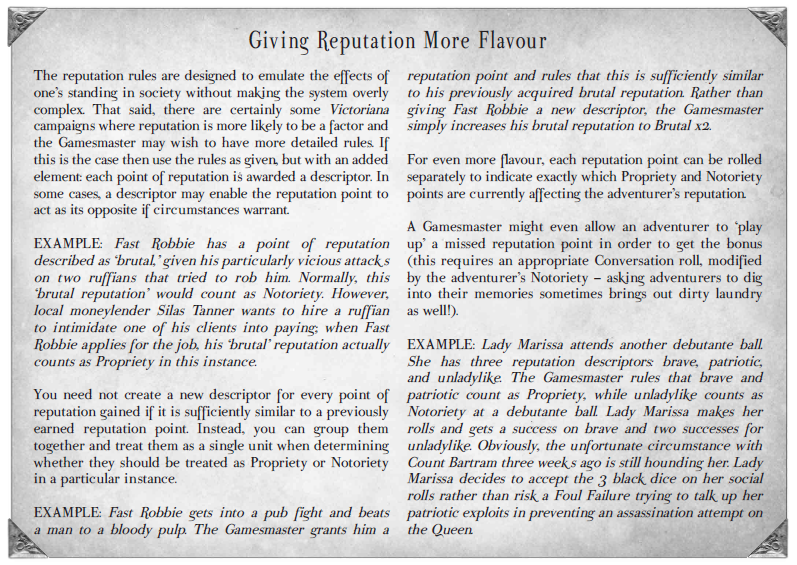
Speaking of!
Character Advancement
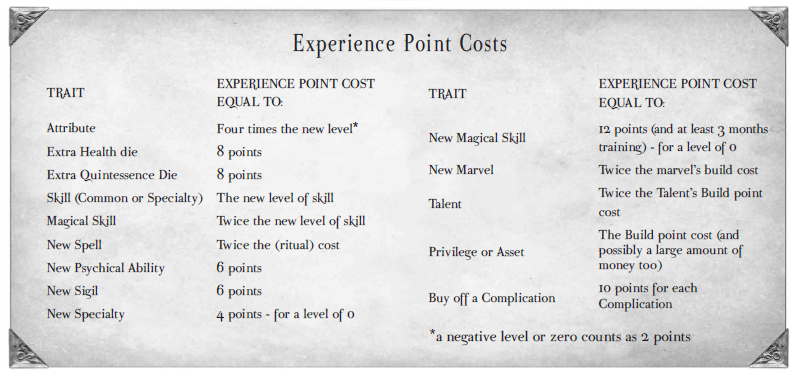
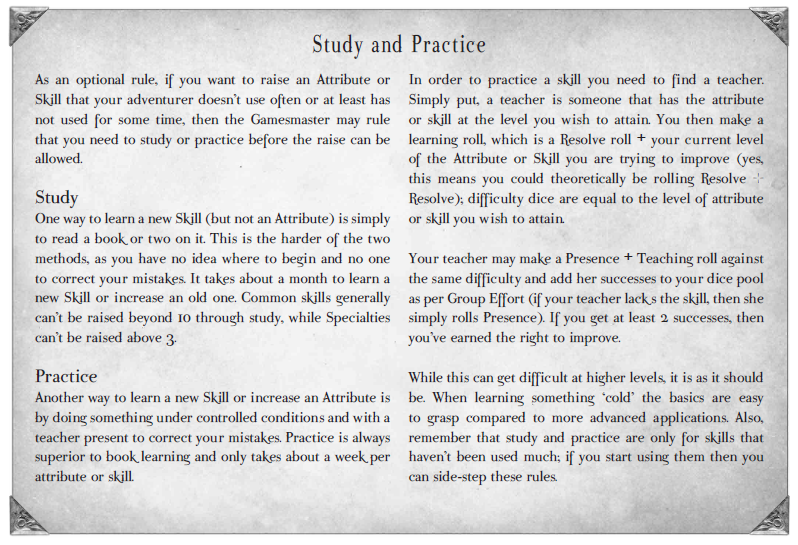
Important details:
- Can't raise Attributes above subspecies maximum.
- Justify why you're raising a skill and use is generally a good justification. Also "don't spend all your points raising the same skills, a well-balanced adventurer has a better chance of staying alive and being useful" yeah wow you guys have never played anything remotely resembling...anything involving building dice pools that wasn't this game. I typed this sentence and somewhere out there a bunch of Shadowrun and WoD fans had a good chuckle without knowing why.
- Health and Quintessence are still capped by their parent stat but it's easier to raise them independent of raising certain attributes.
- Privileges and Assets should be earned through cash expenditure and roleplay as well as XP.
- A good rule of thumb for buying off a Complication is that it has to have come into play as many times as its rating (5 times for a Rank 5 thing, for example).
- You can also invest XP in lowering black die for psychic abilities you already know to a max of -2 black die. Exciting.
- You can know as many sigils as you want but their rating can only match up to your Resolve. Raising the dice modifiers of existing sigils is 2XP for 1 level raise.
- You can learn spells at chargen with a BP cost equal to your Quint. After chargen, you must: 1: find a source of a new spell, 2: spend weeks learning the spell equal to the BP cost and 3: make a roll to see if it really takes with a dice penalty that's negated by either the book you're using or your teacher's help. If you fail, you remove one black die per each attempt failed until you get it. Hooray.
- Marvels/tech are bought at chargen for a cost of their BP. After that they have to be built and might require the help of someone who knows magic to complete the work.
- Creating new magic and marvels involves A: whipping out either the two source books dedicated to tech or magic for the advanced rules or B: comparing the desired effect to existing spells or phenomena and then copying the BP cost of that spell. Creating new marvels runs the risk of extra XP depending on what you want to make.
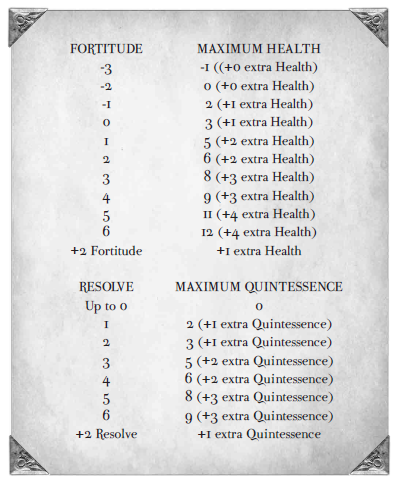
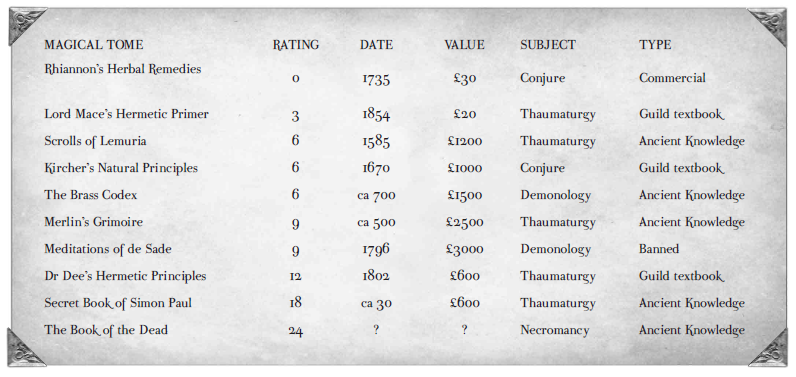

Okay I'm pretty sure I said everything I can say about these awful fucking mechanics. And let me just say: picking up this fucking game was a goddamn mistake. I swore to myself I would never try to eat a heartbreaker but joke's on me I guess.
Is it all worth it? Well. Let me tell you what we've finally gotten to: the magic chapter. Also technically the steampunk chapter but let's be real here the real fucking attraction is the magic. The magic chapter is ass. Magic is too complicated and fucking unwieldy. Magic is too specific and too broad. Like no for real magic is broken down into Hermetic High Magic, Conjuring, Magnetism, Goeticism, Runic Magic, Necromancy and Demonology. Technology is just a whole thing on its own but look at all of that. Technology isn't going to make you learn from a list of Enochian words in order to do a damn magic.
So yeah. Roll up your sleeves 'cuz NEXT TIME it's time for cram school in Book 4.
BOOK FOUR: Magnetism
Original SA post
BOOK FOUR: Magnetism
Or
Useless Elven Mind Bullshit
A Really Brief History of Magic
So there were many ~wonderful empires~ of magicians and demonologists and necromancers in Times Of Old back when magic flowed like lava out a volcano. Then the forces of Order started hooting and hollering about how magic is a tool of Entropy and invented organized religions and started clobbering people they disliked. Heresy, Emprah, etc. The sole exception is the use of hermetic magic because it involves grabbing the aether of the universe and twisting it…solely because Simon Paul, one of the Voices of the Archons of the Aluminat knew how to use it and renounced its use until a bunch of cardinals decided no it’s okay. So people who want to use hermetic magic are allowed to pay indulgences to use it and this creates the first Orders which oversees magic use and punishes bad mages.
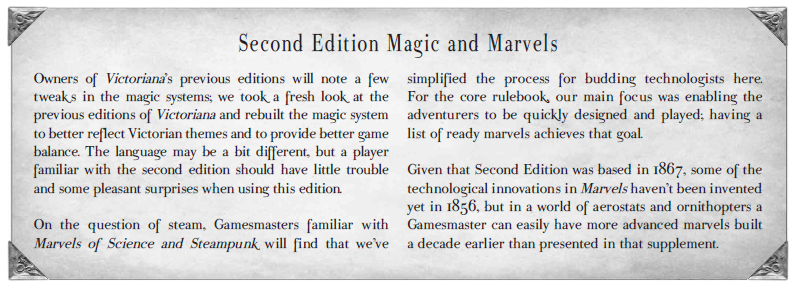
the first paragraph is full of liiiiiiiiiies
Then religious schisms in the Aluminat happen and then so does the Thirty Years War wherein the forces of Entropy work overtime to tempt people and spread magic harder than they did during the Black Plague. On top of that the church gets in trouble for Indulgences and ultimately the first Consortium of Hermetic Guilds is made from existing orders working together.
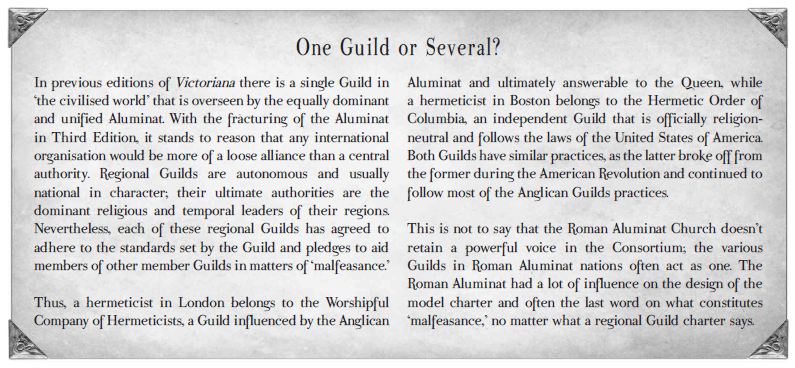
So yeah magic is still heavily oppressed and monitored, especially if you learn Forbidden Arts such as necromancy or demonology. However, despite the oppression of Not Fully Evil Magics, it’s still accepted. Magnetic abilities are a fact of life, conjurors can practice their craft if they’re licensed and so are runesmiths.
Once more, the main types of magic are:
- Empirical Thaumaturgy, or more commonly known as Hermeticism. Hermeticism is what the Guild loves and it’s grabbing and yanking aether from the universe and manipulating it.
- Petty conjuring is really more enchanting. You imbue something with aether and Quintessence and leave a trigger for future activation. Commonly used by Cunning Folk or inventors combining magic and tech.
- Sigils straddle the line between conjuring and hermeticism. Sigils are created when one carves a aetheric rune into an item and imbues it with your own Quintessence. Sigils can’t do much besides whatever the inscribed rune means but they will do that well until actively fucked with. Commonly used by inventors or runesmiths.
- Magnetism is raw psychic power that all Eldren naturally have a connection to. Magnetism breaks down further into Clairvoyance, Spiritualism and Goeticism. The latter is incredibly contentious under the auspices of the Church. They consider Goetic magic to be legit miracles and not just petty magic and they will not hear otherwise.
- Last there’s the Maleficium, the forbidden magics that are weapons of demons that seduce magicians into corruption by repeated use. This is done by answering cults and teaching them how or just leaving forbidden tomes everywhere. The two main magics of the Maleficium are demonology and necromancy.
Your Quintessence is 6 points per point of Resolve and that’s what you need to cast. You roll Relevant Attribute+Magic Skill and generally need two successes to cast a spell. On top of that each spell has a Difficulty rating where you must roll black dice equal to the Difficulty. Any black successes left after gobbling the roll successes deal 1 health pip of damage to the caster.
Reminder: three dice in a pool can automatically be turned into a single success. If you want to just fire off a spell with 0 Difficulty and no roll, you better have at least 6 dice in that pool. But don’t focus on building too big of a pool! You should be well-rounded instead of specialized!
The Quintessence cost depends on the magic. Everything that isn’t Conjuring or Magnetism just has a set cost. All Magnetic spells are 2 Quint a pop and Conjuration has two costs: the cost of the crafting ritual and the cost of the activation. If you run out of Quintessence, you can power your spells with lethal loss of health pips.
The amount of time it takes to cast a spell is rounds equal to Cost-1. You have to make Concentration rolls if you're interrupted while casting a spell, etc. etc. Standard D&Dish stuff. If you want to defend yourself you have to use half of your dice pool for the spell and halve the pool for your Concentration roll. And of course if you fail the roll, you lose the Quintessence or health sunk into casting the spell and nothing happens. Quintessence at least regenerates at a reasonable rate: sleep to get it all back, regain 1 pip for 2 hours of inactive rest or 4 hours of activity or you can force regeneration with a Resolve+Concentration roll that takes 1 hour and gives 1 Quint per success. Anyway that's enough brass tacks let's bring on the magic.
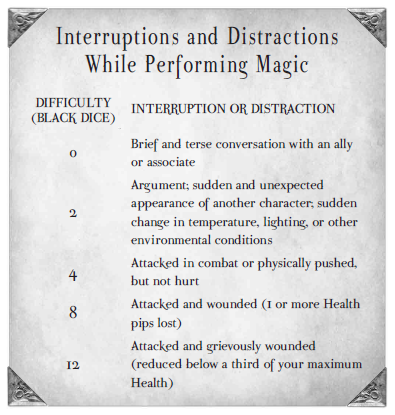
MAGNETISM
Magnetism is the most recently name for psychic powers, coined by Franz Mesmer who was in fact an Eldren. Generally speaking all Eldren know some Magnetic powers and they're uncommon but possible in other subspecies. Non-Eldren who know Magnetism tend to be alienists who use their powers to help their patients. Either way, all folks with Magnetism tend to have powers from birth and tend to have just one or two powers. They can control them to certain extents depending on what they know how to do but a lack of finesse tends to be the downside of Magnetism. The upside is that because you're a natural conduit for aether, they're easier to use and it's easier to gauge distance and range.
Clairvoyance
You know what Clairvoyance is, you're reading this thread. The law of England is trying to figure out where clairvoyants fit in with society and justice but most make a normal living or go for the fortune teller angle. To most people, being clairvoyant isn't much different than normal, you just have a different sense you have. I'll be including the difficulties for the powers.
- Aura Reading (1) lets you read one aura at a time. This power is exactly what you think it is.
- Glimpse (2) is your typical precog flash of confusing insight where you can't select what you see but you know exactly what happens. The flashes tend to be within the next week.
- Know Living History (1): I gotta share this text verbatim. "This ability allows a clairvoyant to see the recent past of a living being. A successful roll grants knowledge of recent events occurring around the person being studied. The nature of the knowledge gleaned from such an observation is often incomplete and fragmented, and is often trivial and of no obvious use." Cool so the power is useless? I thought this was going to be, like, your standard insightful flash, thanks for telling me to not take this power.
- Magic Sense (0) lets you...sense magic. Like if you were to cast the cantrip Detect Magic except it functions as a tingle on the back of your neck when not in immediate use and then you make Wits+Perception within 10 yards of the source of the tingle. What's notable is that other magicians or magical creatures don't register as being a source of magic unless they're casting a spell. In order to detect them, you have to make a Presence+Clairvoyance roll to see if there are any around and what kind of magic they're involved in.
- Psychometry (1) is exactly that. Touch a thing, read past emotions and history.
- See the Supernatural (0) is...exactly that. See ghosts, things possessing people or invisible entities. This doesn't tingle like Magic Sense though, this is just "I walk into the room and cast See the Supernatural" all day every day.
- Sixth Sense (1) is your classic danger sense. "With use of this ability, a clairvoyant may finish the sentences of others, know what someone is about to ask for, and avoid the effects of a surprise attack. At any time, the clairvoyant may make a Presence + Clairvoyance roll and, if successful, can claim to be prepared for anything that the Gamesmaster has just announced. She isn’t surprised, may have a weapon in hand, or tell another character to duck. However, the clairvoyant can only make one action (and warning the other characters counts as an action), and she cannot change an action that has already happened. Note that the clairvoyant only gets a hazy picture of what is to come and the Gamesmaster may veto any action she feels is based on too detailed information." Kinda decent but the ability for a GM to veto it really just reads as classic rules-editing after the designers got annoyed someone ran around being prepared all the time.
Spiritualism
Spiritualists/mediums have a direct connection to the spirit world and the aether of ghosts...and also demons. Foul Failures when using Spiritualist abilities result in demonic possession or being ridden by a ghost that will automatically end when the power ends. The best way to avoid this is to do this in groups where you all hold hands because each person in the séance adds +1 Resolve to resist possession.
- Aura Reading
- Grace (1) lets you try to dispel the dead, risking your health or adding more black dice to your rolls in the process. Why isn't this called Exorcism? I don't know.
- Heal (0) lets you...heal. It's kinda fucky, though. See, normal use of Heal just stabilizes a person. To actually heal them, you have to willingly take black dice onto the roll that can be up to your rank in Spiritualism. If the Heal roll succeeds at all, they regain 1 pip per black dice added. Which is...kind of awful actually?
- Know Historical Events (1) lets you relive stuff from the POV of the dead. This depends on what the GM says you witness.
- Magic Sense
- Séance (1) costs 1 Quint pip per ten minutes spent with the ghost in your body.
- See the Supernatural
Goeticism
As previously mentioned, the existence of Goeticism is highly contentious within the church and other major religions. They firmly believe that Goeticism is not a form of Magnetism and magic but a blessing bestowed by the Host of Heavens upon a mortal servant that allows them to wield miracles. Fundamentally Goeticism lets you talk to the angels and archons by putting you in tune with their aetheric frequencies. This tends to manifest around puberty in whoever and this tends to be a Come To Jesus moment where they turn to the church or whatever organized religion they dig.
All Goetic spells are just a flat Presence+Goeticism roll to speak to the angels and beg for help. The major benefit is that Goetic spellcasters aren't limited to one or two spells. The major downside isGM DICKERY.
quote:
As they cannot call on their power that often, goeticists aren't limited to one or two specific abilities, but can make use of any of the abilities listed for goeticism. However, they don’t have access to them all of the time. When the goeticist buys goetic abilities with the Goeticism Talent, she doesn’t get to decide what they are. Instead, the Gamesmaster decides which goetic abilities the adventurer actually has at the start of a session, but doesn’t tell the player what has been chosen.
When the adventurer prays for help, the Gamesmaster checks her list and decides if the prayer is heard (making the goetic ability available). If it is, the player can make a roll to see if it is answered (if the roll is successful). It should also be borne in mind that it’s far more likely that the Ophanim will answer than the Karabim, especially if the adventurer has more than 2 Order Cogs.
When the Gamesmaster chooses to change the listing is up to her; she may pick new goetic abilities each day, or keep the same list for each adventure or session. She may only replenish the list when all the abilities have been used. She could even replace an ability each time it is used. This way the player, as well as the adventurer, must rely on faith, and the stronger her power the more likely the Host will answer her call. Players are allowed to know the details of their potential abilities so they know what might be appropriate to pray for. The Gamesmaster might allow a goeticist to choose one of their powers themselves by spending a Fate Point.
Plus there's the fact that a Goetic spellcaster has to follow the same kind of rules a Cleric theoretically follows (sans "have a holy symbol" with you to cast through). Failure to get a single success when praying to cast a spell (before black dice eat failure or there's a foul failure) results in your prayer being ignored and your faith being shaken. The results of having your faith shaken include (but are not limited to, depending on how the GM feels you need to redeem yourself or comes up with something they want to use):
- Being unable to use Goetic spells until you confess to a priest and perform acts of penance.
- Being unable to use Goetic spells until you commit a certain act of atonement such as "building a new church or shrine, giving away all her money to charity, a pilgrimage to a distant place, service in a monastic community, or even self-harm of some kind, such as flagellation or mutilation." The particular focus on using feminine pronouns in this entire section really makes this feel extra weird.
- An archon appearing and chastising you.
- 2 black dice to any Resolve rolls when faced with resisting magic and demons until proper genuflection and purification of the self.
So what Goetic spells are there?
- Becalm (1) lets you forcibly stop a ruckus by calling down a portent from the heavens or an angel whose presence causes everyone to chill the fuck out. Those with good souls are awestruck, those with evil souls flee or are struck with terror. If you're neither of those...you just pass out. Everyone who witnesses the portent has to make a Resolve check with a 4 black dice penalty to resist those results and continue fighting. Also the GM is the arbiter of who is good and evil. Lasts for a scene.
- Blessing (2) is cure disease but you don't know if it worked, you just have to wait to see if they get better sooner than normal. You also run the risk of catching that disease.
- Exorcism (0) is literally just Grace with the right name.
- Glimpse
- Guardian Archon (1) lets you either ask an archon three yes or no questions in a vision (refusal to answer counts as an asked question) or you can just ask for guidance and get a cryptic response.
- Heal
- Magic Sense
- Saints Candour (1) is just magical empathy. "A successful manifestation roll allows the goeticist to gauge the mood, temper and intentions of the observed person. A single insight may be gained with one action."
"Heavenly host, hear my prayer, grant me a miracle that may help me in this time of need."
"That dude is pretty angry at you. Looks like he wants to hit you."
"Archons be praised!"
- Saints Sight (0) is just a renamed See the Supernatural.
This is the first installment of magical categories. I will be taking these group-by-group for easier digestion. They don't get better. Buckle the fuck up.
NEXT TIME: Empirical Thaumaturgy/Hermetic magic. Hermetic magic is way more offense-oriented and generally useful than Magnetism is. It is also...better but it begins the annoying trend of "you're allowed to do stuff but you're not allowed to do cool stuff".
BOOK FOUR: Empirical Thaumaturgy
Original SA post
BOOK FOUR: Empirical Thaumaturgy
Or
Victorian Cantrips
Hermeticists come from all walks of life and as such Hermeticism is the dominant form of magic in Europe due to the fact that it just requires education to learn. Well it also requires you have Resolve 2 and understand Latin and the Enochian alphabet and also the Thaumaturgist Talent. You don't necessarily have to have pseudo-Abrahamic religious leanings or a license but they kinda help keep you on the level.
Hermetic magic requires the caster to pull aether from themselves and the universe and impose their will on the world around them. This is done with gestures and brief incantations. You can also cast Hermetic magic discretely with a sleight of hand roll...that imposes 3 black dice on the actual casting and doesn't work for all spells. Like you can only disguise shooting an energy bolt out of your hand so much.
Anyway let's check out the spells, starting with the three that give you a pretty good understanding of Hermetic magic: aether bolts, three of the four magical attacks available to a Hermetic magician. A quick refresher of mechanics:
- You have a 1/3 chance of a single d6 being a success and a 1/6 chance of that success being an exploding dice.
- Three dice in a pool can be converted into an instant success instead of rolling.
- Black dice do not explode but have a single black dice has a 1/3 chance of eating a success.
- Black dice tend to come in 3s.
- The game gets all frowny when you focus on making big dice pools because you should instead focus on being well-rounded.
- Damage is dealt by rolling all of the damage dice and every success counts as a point of damage.
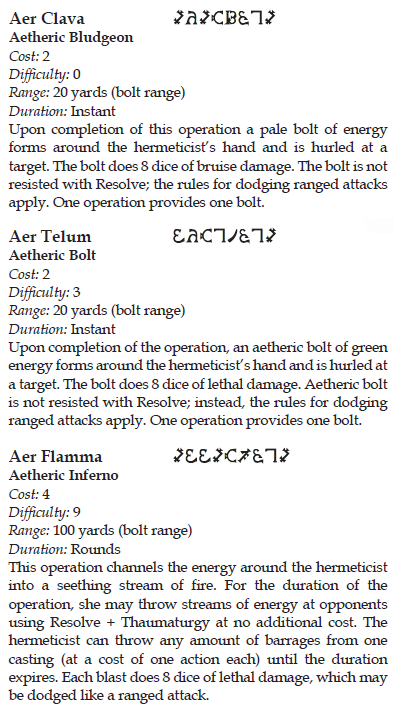
Okay, so. Judging by these three spells alone, I'm just gonna tell you straight-up: Victoriana tends to take magic spells and then divide them into informal groups based on difficulty dice. I'm going to use informal terminology. Difficulty 0 spells are Cantrips. They have low Quint costs and do small things but aren't difficult to use and you can use a lot of them. Anything with 3-6 difficulty is basically an Intermediate spell, there's a risk of failure and they require investment to use. Spells that are 7+ difficulty are Advanced spells and you're never going to fucking use them without substantial investment. Case in point: Aetheric Inferno. The cantrip form is the equivalent of a ranged cudgel. The intermediate form is on par with a bullet from most guns. In fact, Bolt is flat-out inferior to most forms of gunfire. It's laughably easy to sink money into getting a gun balanced to give you better accuracy and mechanically speaking you're investing more resources and EXP to know how to cast spells to begin with. Shooting guns is just Dex+Firearms and the ability to have a magic bullet at your fingertips doesn't really matter as much in a world of sleight of hand and derringers. Inferno is the top level offensive attack for Hermetic magicians. You shoot bullets for as long as you have Quintessence...which is a great way to run out of Quintessence and is essentially on par with holding the trigger of a semi-automatic firearm. Which exist.
The difficulty of Inferno is 9, which means you roll 9 black dice to eat successes. This is counts as an Incredibly Difficult challenge in a system where 2 successes is generally a proper success to do anything. If you're throwing around a 6 dice pool like the game wants you to then congrats, you're never casting this spell and just hurting yourself trying to. You want a 15 dice pool if you're going to approach this from the perspective of "I can turn three dice from my pool into an automatic success" and understanding basic probability. Five automatic successes vs. (1/3 successes)x9 black dice is a safe way to reliably cast this spell. You could gamble with a pool of just 12 but either way, this requires substantial investment in order to cast this single spell. The minimum way to swing this would be to have Resolve 6 or 7 and Thaumaturgy 6 or 7 and take other Talents that let you lower the difficulty of spells like Aetheric Manipulator. There's no other reasonable way to do this. The upside is at this point you can pretty easily cast any Hermetic spell, not counting the other ones that would be around the same difficulty. But this is a heavy point investment to work towards and not remotely possible at chargen.
Counterpoint: a soldier with a blunderbuss. The Revolving Blunderbuss deals out 8 damage dice and costs 2 dollars. The RB has +2 dice added to your pool for being a weapon that shoots in a cone (and technically functions as an AoE weapon if the targets are grouped) and holds 6 shots. Yes Inferno has a range of 100 meters but it damn well can have it. It is actually faster to shoot the Revolving Blunderbuss than it is for the mage to cast because it has a Rate of Fire of 4 meaning that you can pull the trigger four times (at the cost of having an abysmal pool of dice to hit, but). Shooting the gun would be Dexterity+Firearms and the difficulty flatly responds to the range in which you're shooting from: none up to 4 yards, 3 up to 8, 6 up to 12, 9 up to 20. To shoot someone within a reasonable distance, you'd need to aim which would be spending a turn like you'd have to spend at least one turn to prepare the spell without a risk of failure due to being interrupted. It's not unreasonable to have Firearms 5 and Dexterity 5, the +2 for using a Blunderbuss and for good measure let's take the Talents Marksman which makes the dice bonus +2 for aiming. If we want to be really ludicrous we could take the other points that would have to go towards raising Resolve to insane degrees and take all three levels of Hawk-Eyed which means that all ranged weapons increase their ranges by 60%. This is to say you're shooting a Blunderbuss that you can reasonably aim with up to 32 yards and the penalties now shift so close is 6.4 yards, +3 black is 12.8, +6 is 19.2 and +9 is 32. One round spend aiming is 14 dice and you have functionally shifted the penalties so that it's easier than ever to shoot further than you'd need to with a Blunderbuss. Now, admittedly, the benefit of Inferno is that you can just keep attacking once the spell pops off. And of course if you want a gun with a range that'll match Inferno...well you can find some that have triple the max range of Inferno. Yes they tend to be single-shot. They make up for it by dealing more damage per bullet.
So in short: it's much cheaper to invest in a well-balanced accurate gun than it is to invest in magic and there's the math that proves it. Let's take a look at the other spells.
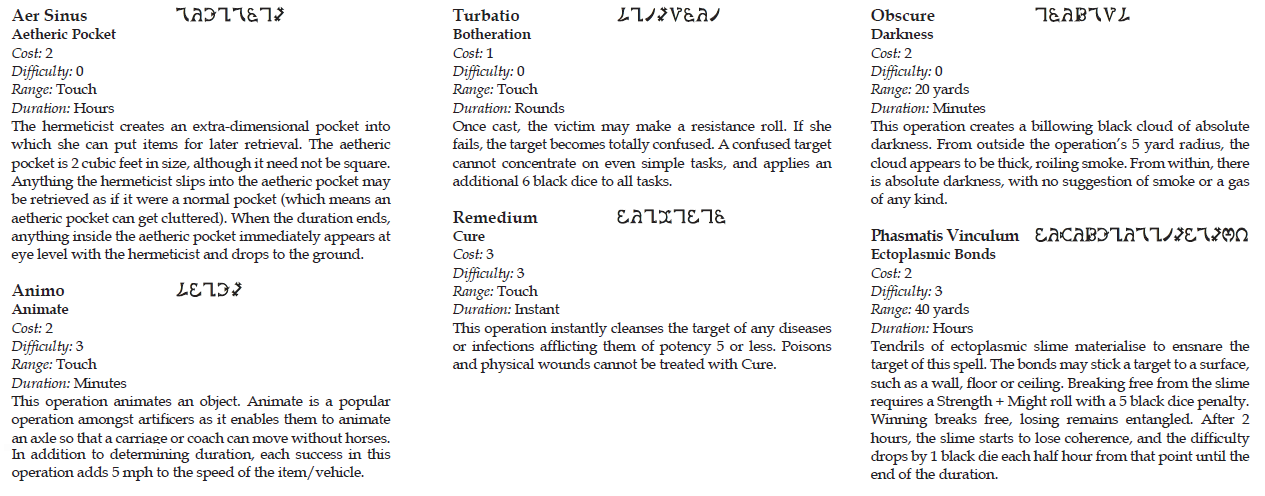
- Aetheric Pocket has a handy amount of space inside of it and can be useful.
- Animate is...interesting but not necessarily my first pick.
- Botheration is pretty damn useful but unfortunately touch range.
- Cure is good but the potency limit makes the Magnetist equivalent better.
- Darkness has its classic D&D uses.
- Ectoplasmic Bonds is very handy due to the fact that its use is measured in hours and can shut down combat pretty easily.
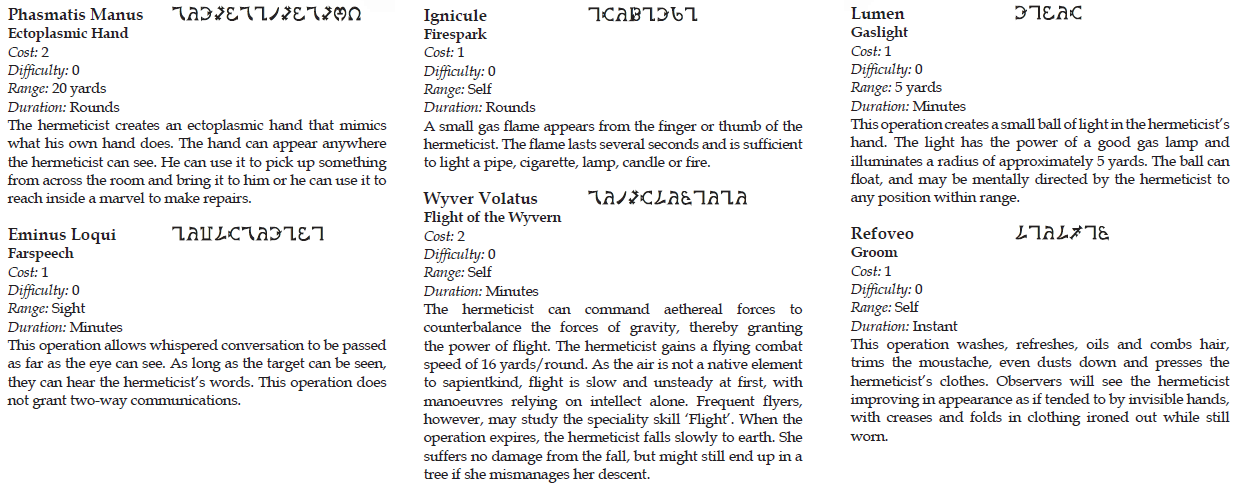
- Ectoplasmic Hand is just a reskinned Mage Hand.
- Farspeech is good and your average PC will get hefty mileage out of it.
- Firespark is just your standard cantrip.
- Flight of the Wyvern is flat-out game-breaking. Zero difficulty to cast? Contains built-in feather fall? Lord almighty.
- Gaslight is your standard Light cantrip.
- Groom is a very specific use of the Prestidigitation cantrip squirreled away into a single spell.
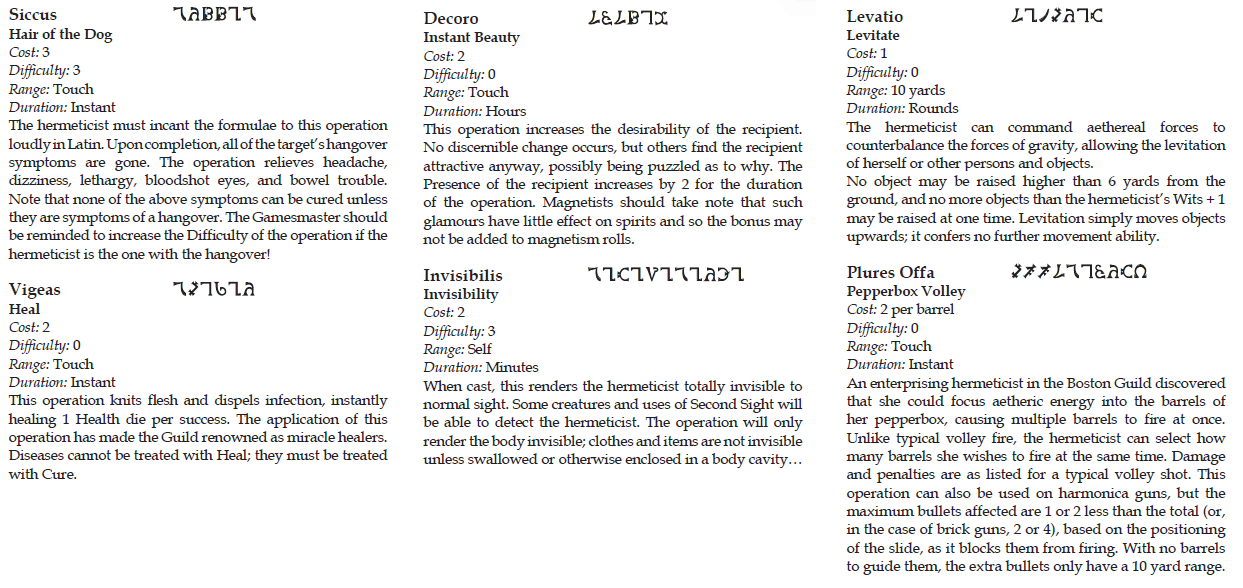
- Hair of the Dog is...tonally interesting but practically useless unless this will be something that plagues your party.
- Heal is the better version of the Magnetic Heal and is just flat better. A Hermeticist who has sunk a jillion dice into casting Inferno will just vomit prodigious healing energies whenever they need to for the party's benefit.
- Instant Beauty is surprisingly useful because they don't say it doesn't boost spells cast off Presence.
- Invisibility is disappointingly hindered. There's possibly some deeper subtext to the fact that total invisibility is only accessible by getting buck-naked and hiding things up your ass in Victorian England but I don't trust these writers with the notion/
- Levitate is pretty great and breaking because you can just use this to fuck with people and also it doesn't say that there's a weight limit.
- Pepperbox Volley is the response to the fact that guns are better. The problem is the fact that Pepperbox Volley runs into the issues of volley fire, which is to say it counts as multiple attacks and hideously shortens your dice pool per shot. Just focus on having a regular firearm.
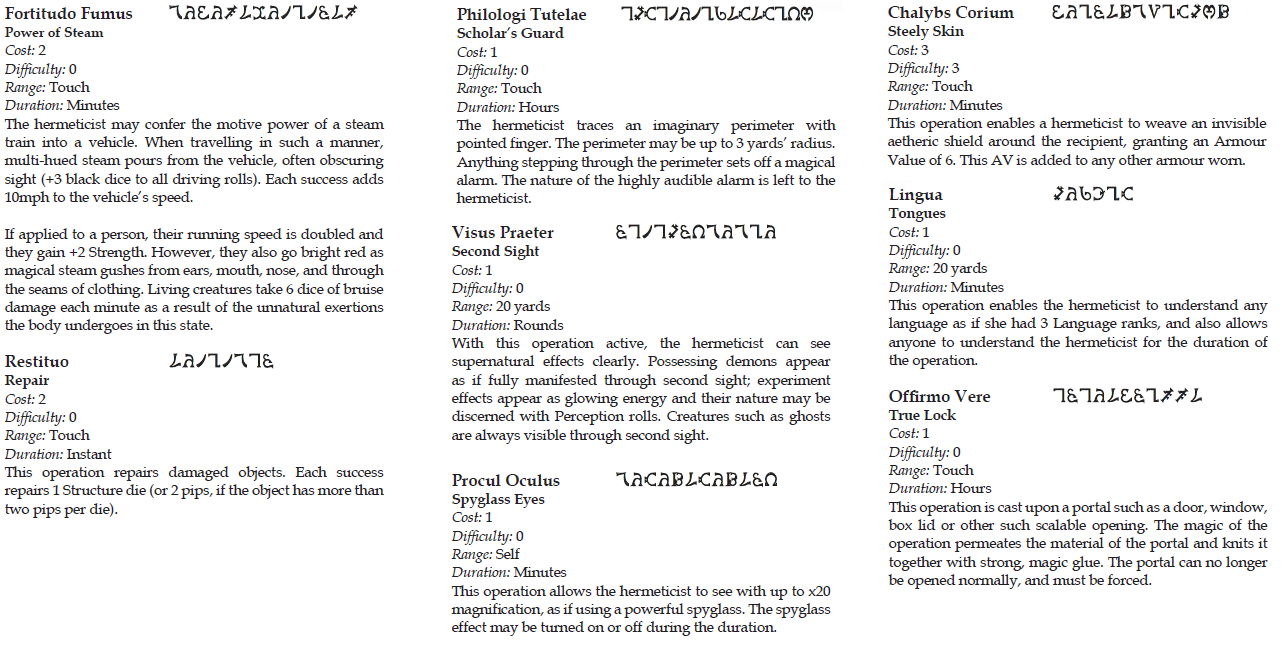
- Power of Steam is hilarious to me, because it's easier to do than Animate but makes it harder to drive and it also acts as a Bad Haste to people. It's not worth using at all because Strength is pointless, but it's still funny.
- Repair has its uses especially if you have tech people in the party or just want to play Crazy Diamond.
- Scholar's Guard is just like the Alarm cantrip. Good if you need it I guess.
- Second Sight is a cheaper version of the Magnetist ability which is funny but also makes Magnetism that much more useless.
- Spyglass Eyes would have some pretty good uses for general PC shenanigans.
- Steely Skin is very good for the fact that it adds on top of existing AC.
- Tongues is always useful.
- True Lock probably has its uses but also real glue exists and so do hammers and nails.
Sample Spell Selection Recommendations
Geek The Mage First: Heal, Steely Skin, Botheration.
The World's Greatest Spy: Tongues, Spyglass Eyes, Flight.
CoDzilla: Flight, Ectoplasmic Bonds, Levitate.
The JoJo: Heal, Repair, Botheration.
The Don Giovanni: Botheration, Tongues, Instant Beauty.
NEXT TIME: Pull on your cloak and yell obscenities at the moon for magical profit with PETTY CONJURING.
BOOK FOUR: Petty Conjuring and Sigil Magic
Original SA post
BOOK FOUR: Petty Conjuring and Sigil Magic
Or
Getting Frustrated You Didn't Prepare Anything Relevant
Petty Conjuring, as previously mentioned, is a form of enchantment. The Conjurer/Cunning Folk performs a ritualistic action to imbue an item with aether and Quintessence and sets up a specific trigger to activate the item's function whenever needed. Because technically everyone has Quintessence as long as they have positive Resolve, the trigger can be activated by whoever is holding it, not just the Conjurer. Conjuring doesn't draw power from Entropy or Order but it's rather like exploiting the functions of nature with One Weird Trick to get reality to what you want without seizing direct control and pulling. As a result, a Conjurer is generally looked down on as a pagan or someone consorting with the old gods. In more professional and technological settings, Conjurors are valued for being able to apply their triggers and enchantments to inventions.
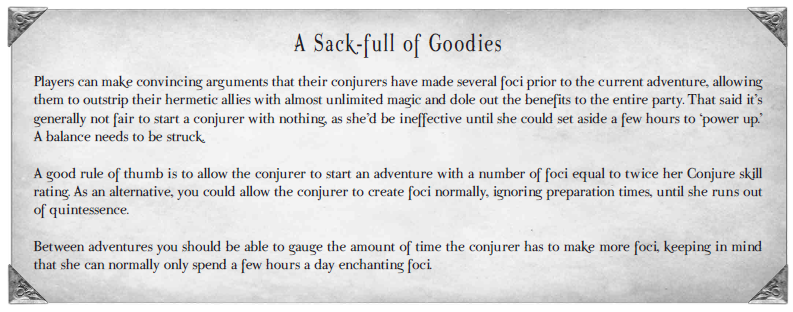
Ah yes, the classic thinly-veiled "we had this idea when there was a fight with the GM" sidebar.
The upside of enchantment is that you prep and use when necessary. The downside is that prep takes time and planning. There are rules that basically boil down to "depending on how badly you fail a Resolve+Conjuring roll, you will lose Quintessence, materials, both or more". The game also doesn't want you to just sit at home enchanting your ass off (though honestly it has no way to really enforce that outside of hours in the day and your Quintessence pool). To use an enchanted item, simply believe that it will work and perform the action necessary to trigger it (along with paying the Quintessence cost). It's possible to find enchanted things out in the wild but you have to determine what it does...without using it up.
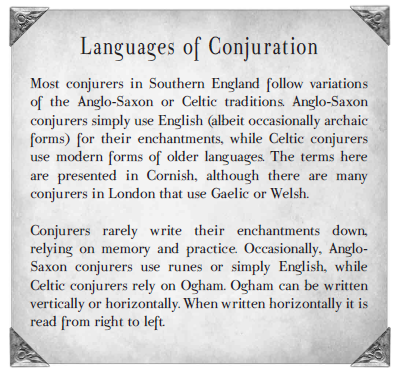
And I legitimately have no idea if any of these things are multi-use enchanted items. I don't think they are, that would make a lot of them a lot more useful than they are. Why ever bother clarifying that point.
ENCHANTMENTS
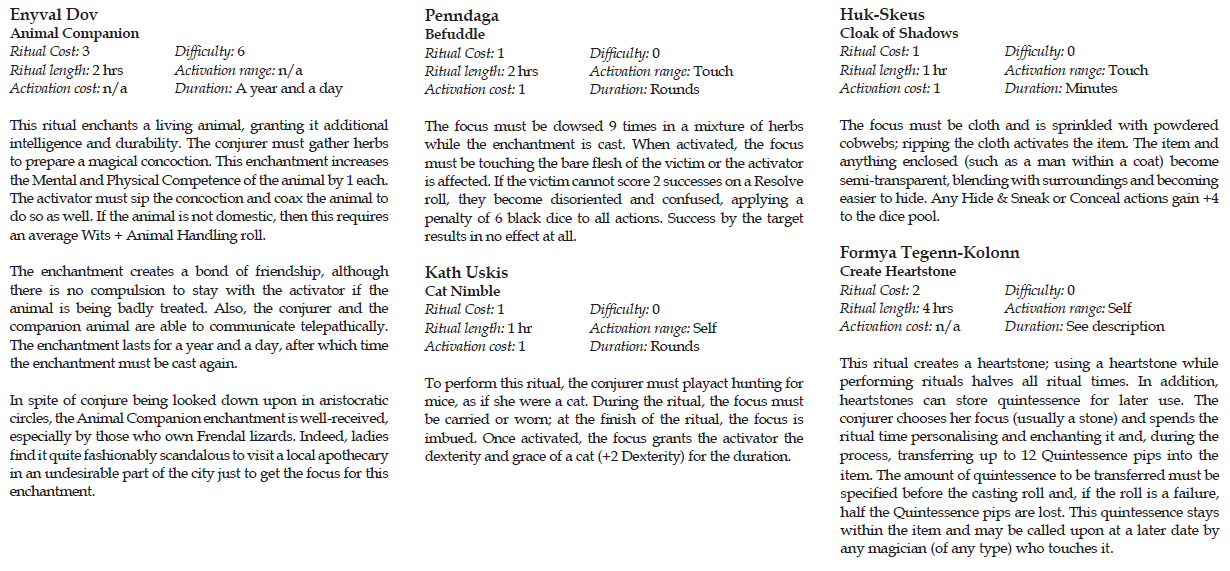
- Animal Companion is nice. It's not particularly great but hey there are probably some uses for an enterprising PC.
- Befuddle is pretty handy...except for the fact that I'm pretty sure enchantments are single-use and so I'd generally just lean on the Hermetic equivalent of this spell.
- Cat Nimble is great, save the buff for whenever you have to do excellent at murdering people.
- Cloak of Shadows is nice and a good counterpart to invisibility needing you to be naked.
- Create Heartstone is definitely good for a magic-focused party. The main use of this is to be a mana potion.
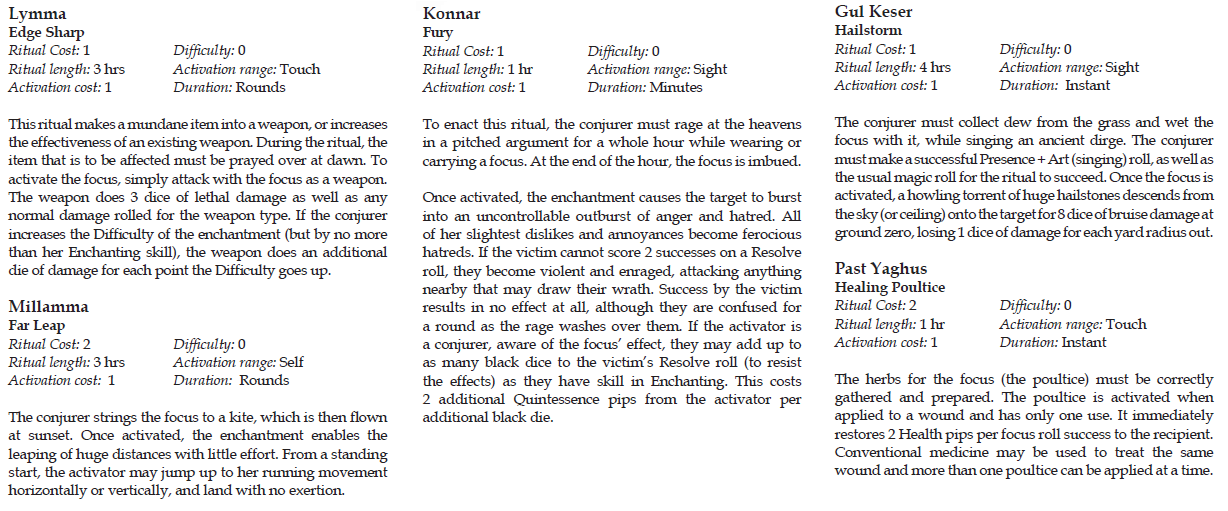
- Edge Sharp is pretty damn useful...for guns. Does it work on guns? I don't know. Fuck melee.
- Far Leap definitely has its fun uses and it's a shame it doesn't last too long.
- Fury is not as good as it sounds. To resist flying into a rage, the target basically has to make a plain, unmodified Resolve roll. It's not too hard to get the successes one needs if they have a sturdy investment in the stat that lets them resist magic. It also runs the risk of an unnecessary rampage caused by the target going apeshit.
- Hailstorm is a nice AOE attack on paper but it's just bruise damage. At least they say it works indoors.
- Healing Poultice is definitely one of the abilities to take due to being able to stack and due to not needing a mage.
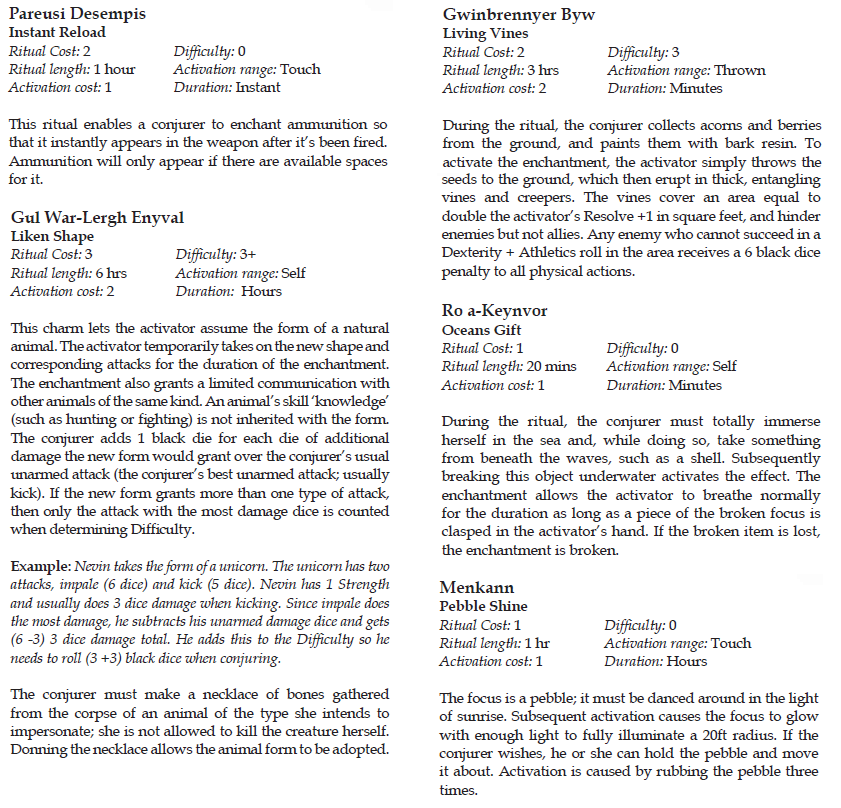
- Instant Reload is very practical and useful with the major caveat of not saying if you can bless a whole mess of bullets at once.
- Liken Shape is your answer to Druidic Shapeshifting...except it doesn't really give you any of those benefits, it's just "you're an animal now and you have natural attacks". The big benefit is the espionage potential of being an animal.
- Living Vines is just lamely hindering instead of helpfully restraining.
- Oceans Gift is a pretty practical thing when you need it.
- Pebble Shine probably had a lot more use before the proliferation of torches and flashlights and gaslight. Either way it's just another stupid Light spell.
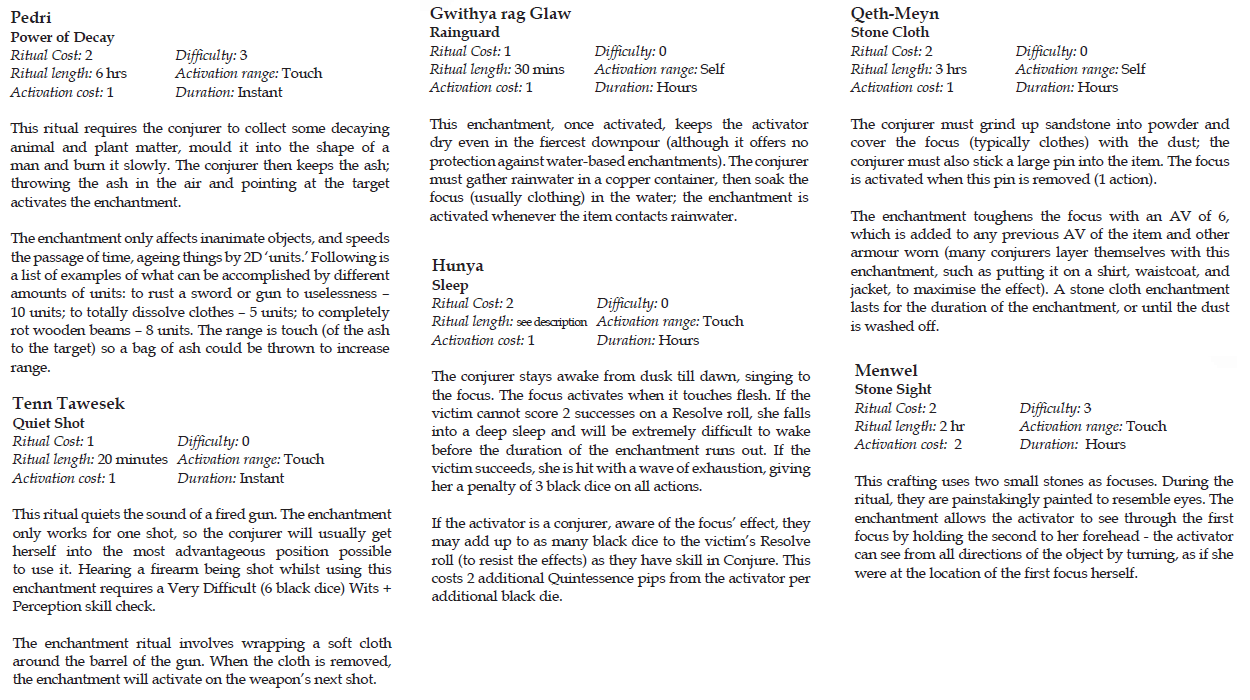
- Powder of Decay has many fun uses for the enterprising, the problem is just making enough of the stuff to begin with.
- Quiet Shot legitimately should have revolutionized warfare and assassination but whoops that requires considering the ramifications of magic and how it interacts with an environment, whoops. Multiple cloths+telescopic vision from Hermeticism+Whitfield rifle=World War I starting very early when a sufficiently motivated mage decides to start killing royalty for the cause of revolution.
- Rainguard must be pretty prized by people who want to waterproof their machines or are just pretty vain.
- Sleep is very useful sans how stat-based rolls function. Plus it's nice it still kinda works on people who are aware shit might be up.
- Stone Cloth is definitely the better version of the Steely Skin spell what with lasting hours, definitely worth taking.
- Stone Sight is...cool but debatably helpful.
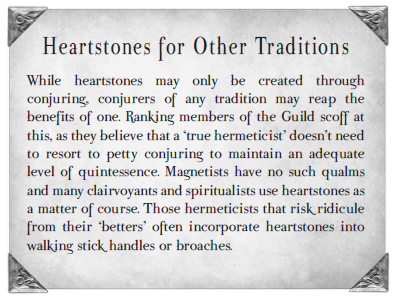
Out of all of these, Quiet Shot, Healing Poultice, Heartstone, Cat Nimble and Stone Cloth are the standouts. Good for using on the rest of the party and preparing a shitload of them in advance. Outside of that...well what else can I say, Conjuring just kinda exists. It's alright. It really doesn't have a lot to do what with magic sliding into obsolescence.
And now it's time for the magic I hate the most.
SIGIL MAGIC
Sigil magic is simultaneously the easiest and the most complicated form of magic that exists in this goddamn book. Fundamentally, an inscriber with a Resolve of at least 1 can spend time etching a sigil on stone, metal, even paper (not flesh). You then pay out Quintessence equal to the level of power you want the sigil to have (up to your Resolve) and the difficulty of the act is Level of Sigil+3.
Here's where things get complicated: intent. A sigil can only do two things. First, they can add bonus dice to your pool. Second, they can remove hindrances from your rolls. That's all they can do, either adding bonus dice or removing black dice from your rolls. So when you're etching out a sigil you can think "hmm, I want to remove the penalties of shooting from a distance!" or "I want this spear to do more damage when it hits people!" and that's the bonus depending on how much power you want the sigil to have. A level 3 ranged attack black dice reduction would remove 3 black dice, have a difficulty of 6 to inscribe and to activate would have an Difficulty of 3 (half the difficulty of the inscription) on a Resolve+Inscription roll and a cost of 1+Sigil level to use. The third point is baffling: unlike enchantments from Conjuring, you have to know Inscription to activate a sigil, meaning that the sigil-crafter of the party will walk around with a bag full of stones that they will turn on and pass out to the others. The upside is that sigils at least last for hours. The other nice thing is that you can re-use sigils as long as they inscription isn't broken and that if tampered with sigils on paper will catch fire, sigils on stone will explode and sigils on metal will melt metal. There's no possible way this can be abused, no sir, and the fact that it'll deal damage equal to the sigil's bonus won't be abused either.
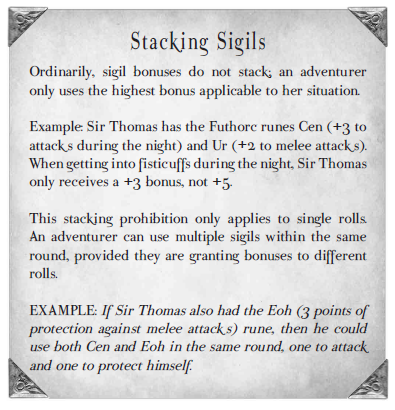
Ooh, two of these thinly-veiled sidebars! Must be my birthday.
Okay so that's not...awful. These rules are a little tricky but they outright say "well hey you want to inscribe runes that let you be creative about their use, bending and playing with their meaning" which hey at least that invites a certain type of creative player.
And here's where things get worse: you have to use either the Enochian language, the Futhark language or the Ogham language to etch sigils. The book includes a list of each along with each rune's meanings and why you'd want to pick this particular language.
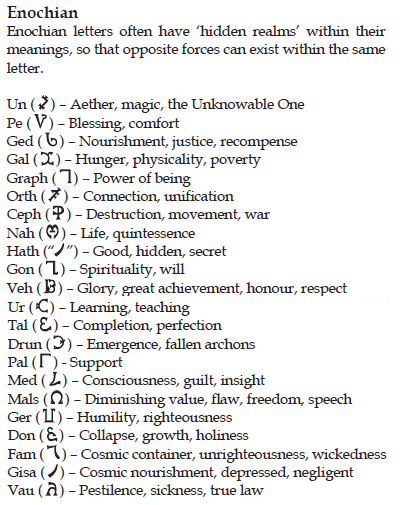
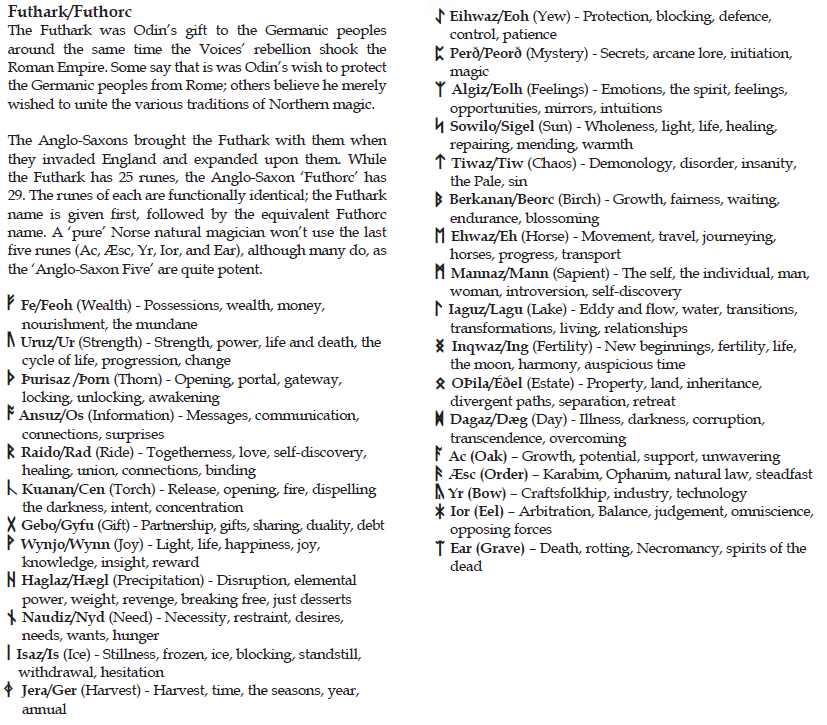
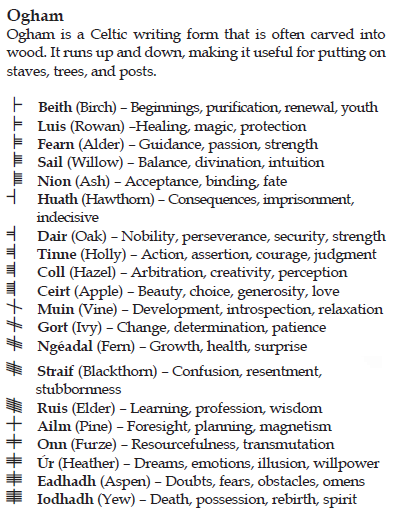
Again, here is what Victoriana is saying: sigils grant bonuses or difficulty reductions in certain situations. You etch them onto things and then activate them and have them on your person for the bonuses. Anyway here are three languages you have to use, you fucking work it out.
The book does say you can use another language like Hebrew. And then doesn't give any guidelines for using something like Hebrew. All runes all the time, ten thousand years of Norse runes, runes from a language that doesn't really directly translate to "I want a bonus to hitting people with a cudgel". Actual textual example from the book: "For example, a magician may use the Enochian letter Ceph to grant +2 dice to ranged attacks or -3 black dice when shooting at opponents behind cover. This guideline is left deliberately vague; a good magician is always thinking of creative ways to apply sigils." I mean. Can you? Ceph means "destruction, movement, war". That is a ludicrously specific application of a ludicrously broad word. This sounds like it's specifically designed to invite fights between the player and the GM where the player activates the Enochian word for war and then fights every step of the way to have a bonus for all things related to war. In a better system, you'd do away with the vague guidelines and say "you have to come up with a specific situation in which this is a bonus. Shooting people behind cover works, so does ranged combat. The rune itself really doesn't matter, it can be any design, it's just the intent of the craftsman that works". Now admittedly that's not a perfect system due to the fact that you're creating a crafting system that amounts to "make whatever and talk to the GM" but it's at least a more focused system. Instead this book continues to try to marriage existing real-world material to badly designed systems that feel like they exist solely because someone in a playtest had an idea for a character they didn't expect and they had to come up with something (except this is third edition).
Victoriana!
NEXT TIME: magic comes to an end with the Maleficium and the rules of Demonology and Necromancy. Remember how I said magic of the demons corrupts? Well...it sure does and that sure doesn't mean much, not when you can make people go comatose for days on end whenever you want with barely a ding to your karma meter.
BOOK FOUR: The Maleficium
Original SA post
BOOK FOUR: The Maleficium
Or
The Tragedy of Darth Plagueis the Wise
I swear I picked this subtitle for a reason.
It’s not illegal to know the spells of Demonology or Necromancy. It’s not corruptive to pick up a tome and study the contents. The problem is when one uses the spells. And even then, that’s not really that much of a problem. The Guild gives certain magicians license to know certain spells of the Maleficium and experiment with them for research purposes or legal use. If you understand the inner mechanics of the arts, you can leverage that knowledge to stop The Bad Magicians.
DEMONOLOGY
Demonology is broken down into two further categories: summoning devils/demons or casting invocations. The latter is simple, it’s just knowing a spell and firing it off with the right gestures and words. The former has rules and lots of info.
Go figure that it’s the easier application that is the better application.
Summoning takes hours of effort and requires the proper goods to invite the target into the realm of the living. It does matter what you’re invoking: Devils are previously Angels of Order who fell, Demons are just natural beings of Entropy. Summon a Devil and they’ll be glad to make contracts with you (that they will try to twist into making you suffer by their own terms). Summon a Demon and they’ll do the bare minimum of what you want them to do so you can release them and let them go back to doing their own thing. Either way you want to prep binding circles to contain the extraplanar being so they won’t just go Hulkamania on your ass. Successful summoning requires a roll to negotiate the terms of the contract (Presence+Demonology vs. the beings’ Presence+Bull/Demonology) and for the summoner to hash out what is being given up for the services.
FYI you want to summon devils, not demons. Failing the rolls for negotiation results in a demon deciding “hey I don’t have to negotiate peacefully, if I ram my claws through your guts you can give me your soul to remove my claws”. Failed negotiations with demons generally result in the summoner getting mauled and the area getting trashed. If you fail negotiations with a devil, the devil will simply say “mmm I don’t think you’ve got the backbone for this, take five to get your bearings and try again” and will depart peacefully. When a devil completes a contract…that’s it, they just go home. A demon who has completed a contract will immediately decide to try and stick around by possessing someone or running amok until they run out of Quintessence and disperse.
You also don’t really want to break contracts if you want a good reputation. If either party (or both) can’t deliver on its promises, the contract is broken and the demon will try to continue to nominally pursue the summoner’s goals because the contract is the only thing keeping it on Earth. If the summoner alone breaks the contract, the demon is still forced to keep its end of the deal and will leave a negative Hellp review that influences all further summoning attempts. I don’t care about rules of possession, demons just need to possess people to stick around and if the host dies they get ejected from the corpse.
Meanwhile if you want to cast a spell from Demonology, you just. Do so. Speaking of spells!
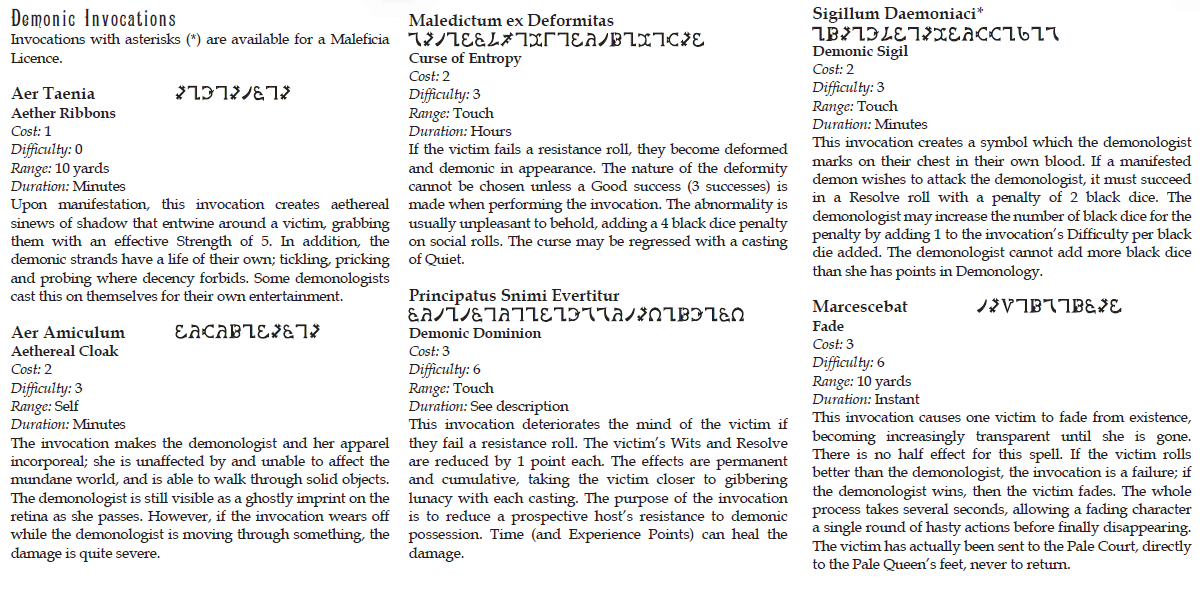
- Aether Ribbons gets us going strong on the note of bindings what sexually assault the person caught in them. Delightful. Also, fuck you. Stick with Ectoplasmic Bonds because the bonds restrain for longer and are also not incredibly uncomfortably inappropriate.
- Aethereal Cloak is pretty great, there’s good fun and use to be had in phasing through objects.
- Curse of Entropy is…strange. It’s handy that it lasts for hours and the debuff is nice but it’s also incredibly unsubtle as opposed to Befuddle or other spells like that.
- Demonic Dominion is pretty fucking cruel. I’m not a fan of blasting people’s mental faculties away with that like you’re running a belt sander to their face.
- Demonic Sigil is nice if you’re going to get into the summoning game.
- Fade is nasty. It’s one of the few Save Or Die spells that exists in this game and it certainly doesn’t do anything by half measures.
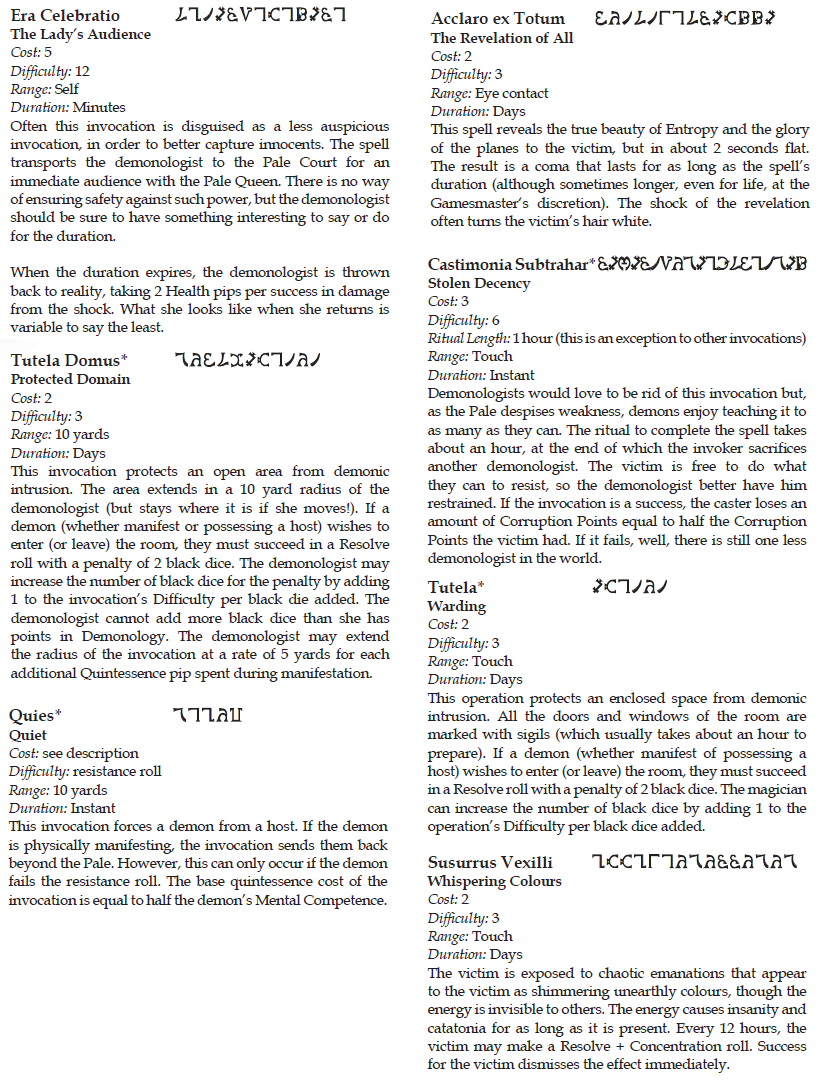
- The Lady’s Audience is absolutely useless. You’re never casting this to begin with due to the difficulty, let alone for the other dumb reasons it exists.
- Protected Domain is also good for summoning preparations and that’s really it outside of warding off demons.
- Quiet is good for getting rid of demons but I’m quite sure this is one of the few things Magnetists can do for cheaper and easier.
- The Revelation of All is by far, hands down, the best spell a demonologist can know. Put enemies in a nonlethal coma for days, break combat with a single look and the enemy doesn’t even get a chance to save against it. Beautiful. This is, by far, the only spell a demonologist really needs to know and throw around when needed.
- Stolen Decency is something to talk about later when I finish with Necromancy because it has a similar power.
- Warding is again for summoning.
- Whispering Colors is a less good Revelation because one can escape from it easier.
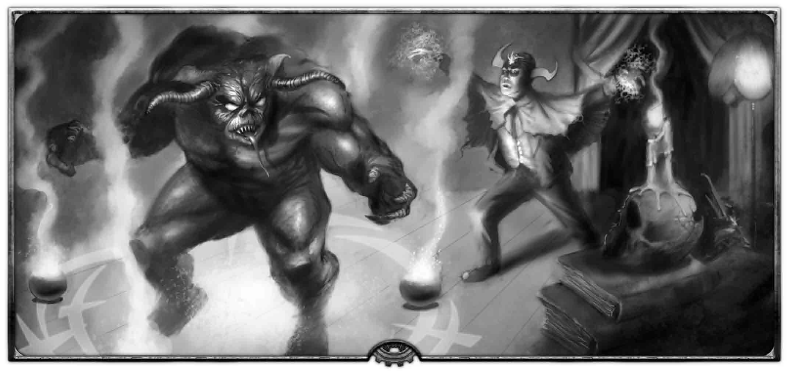
And now, without any real commentary, are the different tiers for summoning demons. To make my feelings on these known more clearly, they are as useful to any PC as it would be to fuck around with any sufficiently depraved Cthulhu ritual. The RPG Carcossa's stupid ritual spells come to mind.
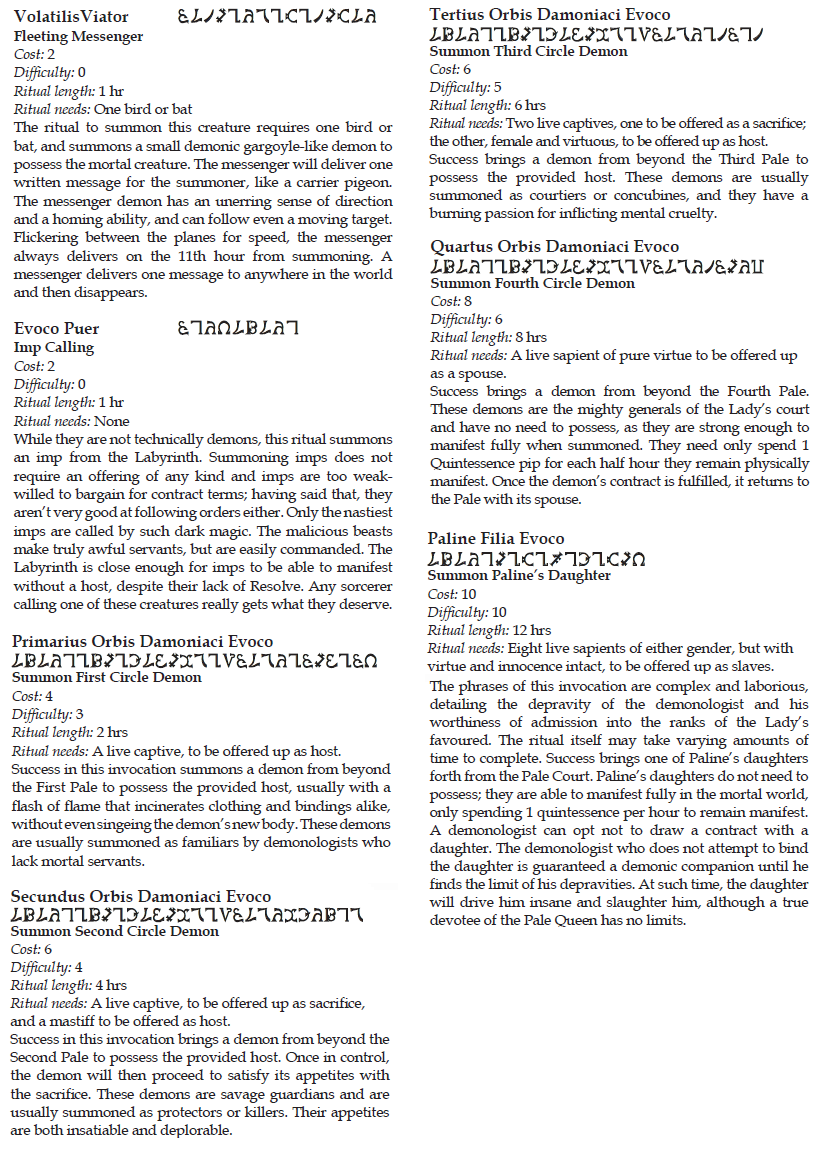
NECROMANCY
Necromancy is also summoning-focused but thankfully requires less depravity. Undead are either lesser or greater but all undead are spirits that just haven’t been able to pass on. Lesser undead are mindless or unintelligent who will follow the commands of their Necromancer, plucked from death and placed in a host body to reanimate the host. Greater undead are intelligent and come from exceptional dead and require a host body as well. They’ll obey but because they’re capable of thought they’re prone to becoming backstabbing and treacherous.

The big upside of summoning undead is that they stick around for a while. Undead will remain until their host bodies are broken but must remain subservient until the Necromancer dies. This is what makes greater undead dangerous: they’re capable of figuring out the latter point and hatching plots to kill their masters so they can run wild and free. You never run that risk from the lesser undead.
The other little quirk of Necromancy is that doing it at night or during certain phases of the moon will reduce difficulties. So, let’s take a look at the spells.
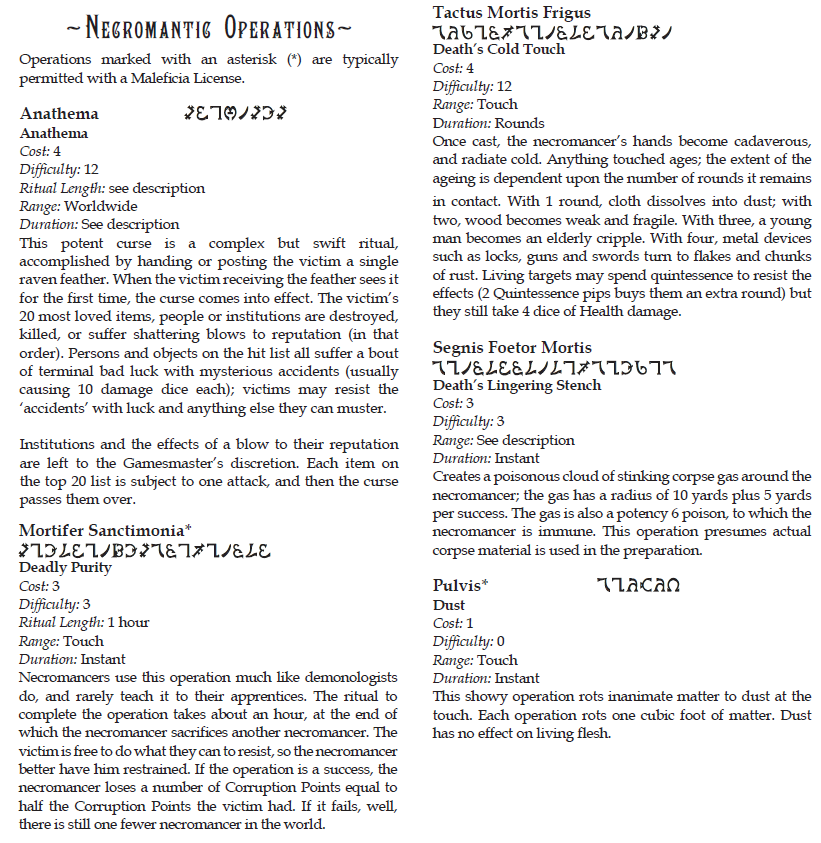
- Anathema is…baffling. First of all it’s difficult to cast. Second of all it’s a strangely broad curse. I kind of like it for its flavor, but I would never use it.
- Deadly Purity is the Necromancer equivalent of Stolen Decency and will be discussed later.
- Death’s Cold Touch is a neat attack that is way too hard to cast.
- Death’s Lingering Stench is a neat and handy poison attack that reminds me of good MMO attacks where a Necromancer pops a corpse to deal DOT AOE damage.
- Dust is very handy considering that everything short of living flesh counts as inanimate matter according to it.
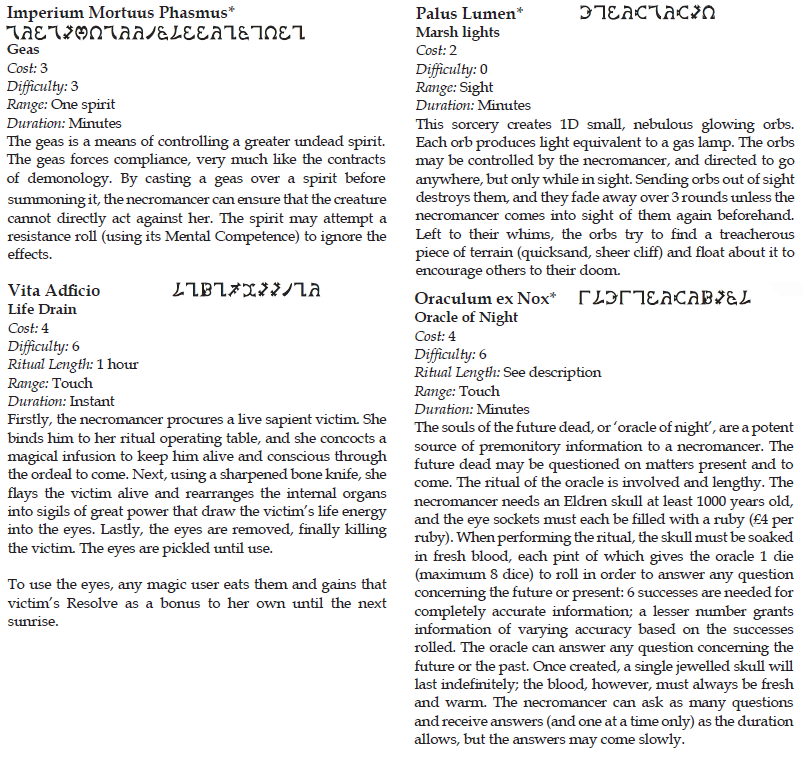
- Geas is good for preparing to raise a greater undead without losing the occupying spirit.
- Life Drain is just incredibly stupid. Like, I get it, you pickle the eyes so you can get the bonus Resolve for when you need to cast something like Anathema. The spell itself is just ridiculously stupidly ornate and hell it’s not even life drain, it’s more like Essence Theft. Misleadingly named.
- Marsh Lights is a bafflingly dangerous Light spell.
- Oracle of Night is a pretty handy way to see the future hindered by needing a shitload of rare crap. At least the skull has many uses once you get it.
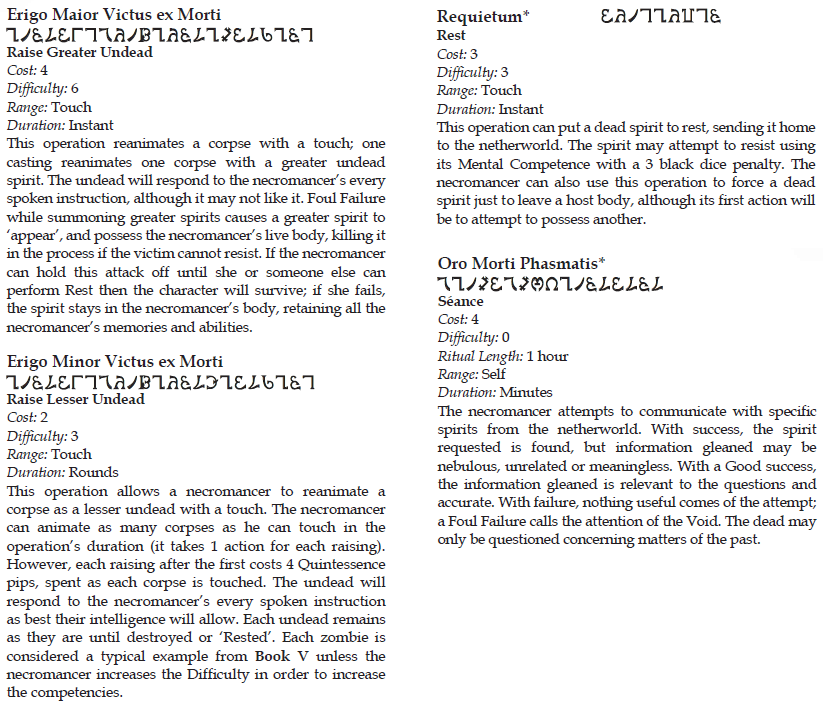
- Raise Greater Undead really doesn't need that Foul Failure where whoops you instantly die on a soul level and are now possessed forever. Like Greater Undead are really a gamble in and of themselves, why add that angle Victoriana? Either way...yeah ultimately I'm not a huge fan of Greater Undead.
- Raise Lesser Undead is gonna be your bread and butter spell for making buddies. Also the rule about raising as much as you can mention is fine...if you have to do it in a pinch. Otherwise you can just act economically and repeatedly cast the spell over and over again over the course of a night during a full moon (when you get maximum penalty reduction). Act economically and raise an army for a more reasonable cost for the mana-conscious Necromancer, as outlined by tips and tricks in my new book entitled "Raise Your Finances from the Grave: Smart and Sensible Money Lessons for the Practical Necromancer". Only 19.99 plus shipping and handling!
- Rest is fine and reasonable for telling ghosts to fuck off because they have a penalty to disobeying.
- Séance is the same as the Magnetist powers but now you go crazy eventually.
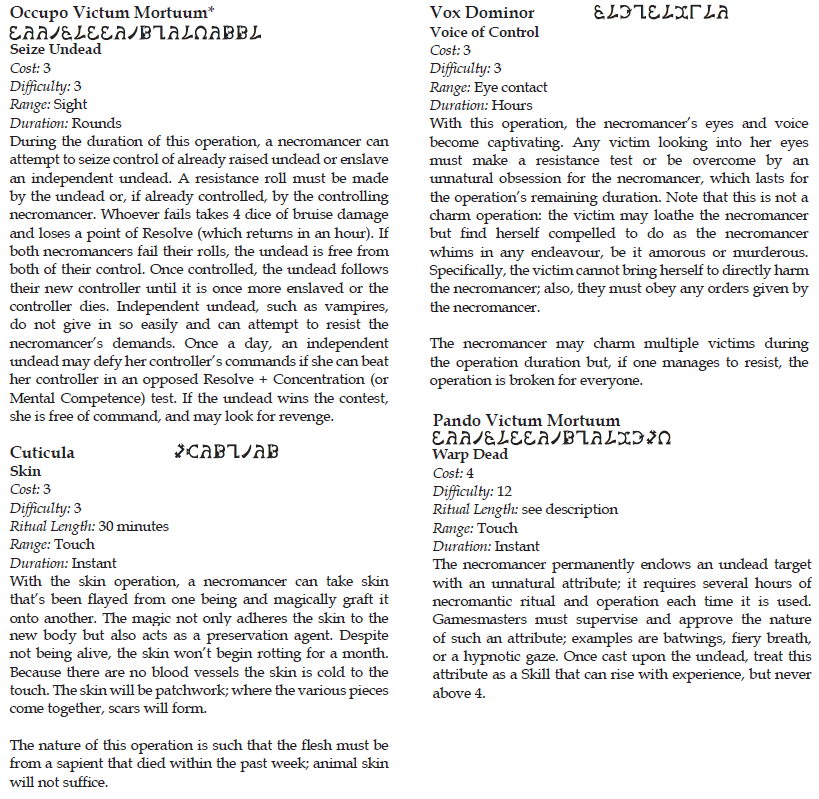
- Seize Undead is an interesting idea and a good way to poach talent from the competition. You kind of don't want to enslave intelligent undead though. They're generally going to try to backstab you anyway, don't give them more of a reason to.
- Skin exists and I don't know why. Is it to make undead last longer? 'cuz, uh, there are absolutely zero rules about if undead will ultimately stop working should they rot away into bones. Do zombies eventually turn into skeletons? I don't know. The book doesn't know and as a result what is the point of this spell asides from killing and impersonating someone.
- Voice of Control goes into Bad Mind Control territory for reasons that aren't...apparent. Why do Necromancers get this and not Demonologists? Who knows. Again, Bad Questionable Mind Control Spells are disgustingly useful and the game implicitly agrees by saddling it with a slap-on-the-wrist difficulty and cost.
- Warp Dead is a rad idea on paper but man, Difficulty 12? Fuck you. Plus the ritual takes long enough that you're not going to be able to imbue all the buddies you want in a single full moon night.
CORRUPTION
Corruption kind of works like how the Entropy/Order cogs work...inasmuch as it's just called Necromantic and Demonic Corruption Cogs. You only gain or lose Corruption based on spell use/cost and some other minor stuff. That's it. So let's take Revelation of All. ROA puts people in a coma. It costs 2 Quintessence per use, you gain 2 Corruption per use. Necromancy is a little bit different, as there are more specific applications, but every Lesser Undead you raise gives you +5 Corruption despite the spell only costing 2 Quintessence.
So what are the different levels of Corruption? Well. Welcome to Clownshoes Game Design.
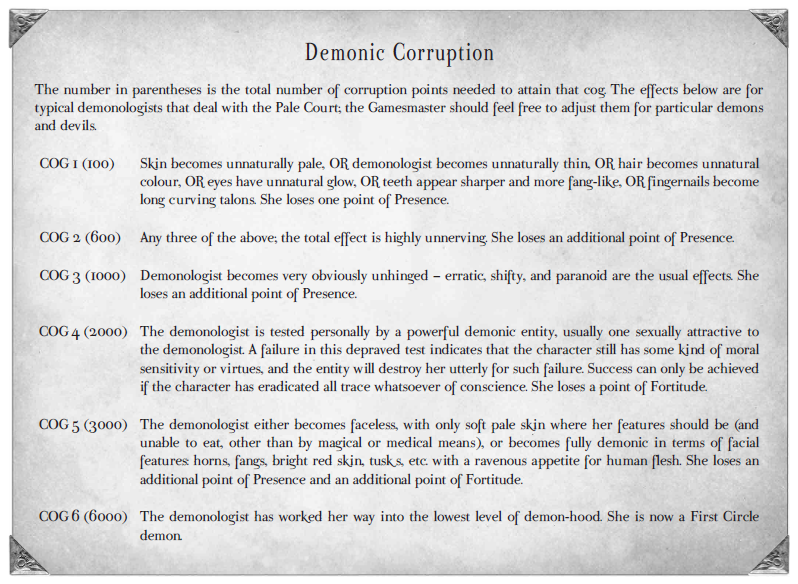
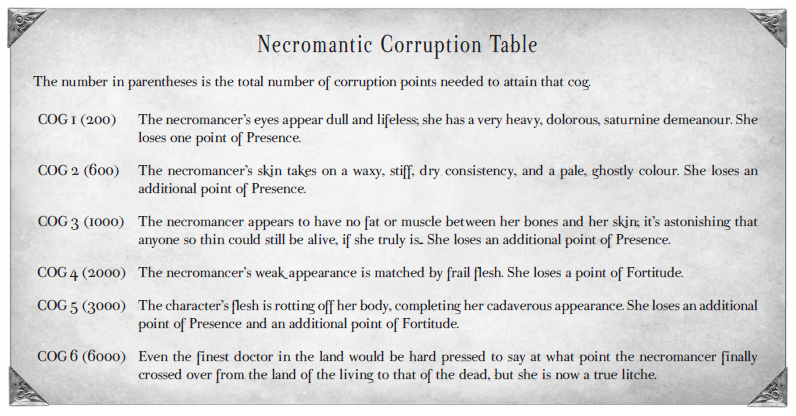
Corruption will generally never be an active threat to the PCs because the game is too afraid to punish the players for being naughty. That's 3000 people put into a coma or an army of 1200 skeletons before things go entirely pear-shaped for them. If at any point you have allowed your players to raise an army of 1000+ skeletons, you are probably going to be playing a very different game than this one. Presence is not a stat that really matters to a caster. Fortitude is...but it's easy to build around that and also the game slaps you very weakly in that department. Who needs health in combat or likeability in Victorian society when you can render opponents comatose or bury them under a gleefully agitated pile of skeletons and zombies. There's also the fact that these things can be done across such a long period of time, the magician might just live their life normally and never succumb to total corruption. One person in a coma a day means it'll take a little over 8 years for you to turn into a full-blown demon. Five zombies raised a month means in 20 years you'll finally achieve lichdom or you can spend about 16 years dissolving a single cubic meter of inanimate matter a day. At any rate there's plenty of time for you to stop or be stopped. Succumbing to corruption is, fundamentally, not a problem unless you're just a full-bore fiend for magic...and even then there are limitations in place such as Quintessence limits.
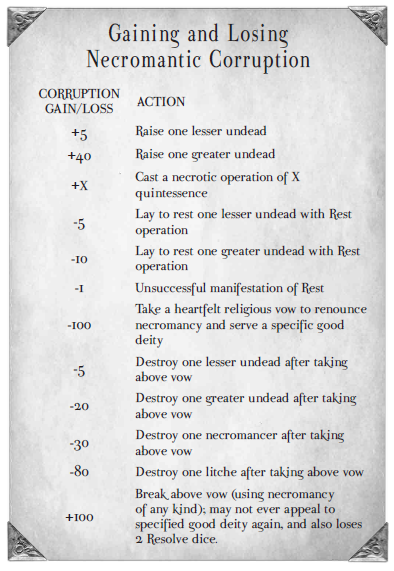
And then there's the means by which one can reduce corruption. The Necromantic abstinence vow is actually one of the best things in the game because I can just imagine playfully pushing up against the limits of the vow and gently coercing your GM into letting you use Necromancy to fight Necromancy. Raise zombies to fight zombies! Steal skeletons and forcibly disarm a dangerous Necromancer! Now granted mechanically this is absolute nonsense but c'mon, some rules are meant to be bent, perhaps broken. And then there's the sacrificial options where you throw other practitioners under the bus for your own gain. I'm not a fan of these. Let's dissect why.
- First, this is wildly tonally different from the rest of what the game has to offer and its existence isn't really justified considering how damn hard it is to accumulate enough Corruption to be A Real Problem. Yes the Maleficium has some bad weird dumb spells like the molesting restraints and the mind control. The ability to sacrifice people for material gain (outside of summoning) is a step far beyond questionable spells that a magician might know. The necessity of the spell for a long and storied career of a Demonologist or Necromancer is weird when you consider how little of the other spells are actually necessary. Like, flat-out, I do not consider the majority of the Summoning spells useful, not with the care that has to go into properly binding a Demon or Devil vs. what you actually receive and can use.
- Second, any system that makes something like this the only way "out" (fully ignoring getting all pious all over a bunch of Necromancers) and making it readily available to the PCs is going to invite the most horrific player behavior possible. Because there is no way to easily gauge how Corrupted a magician is besides how they look (yikes, the fucking subtext here) short of coming face-first with a lich or a demon, the players are actively invited to just perform a whole mess of sacrifice. I don't want to think badly of players but they work with the systems they have at their disposal. As a correlation to that point, there's the fact that the system is inherently rigged by the forces of Entropy to just cause a ruckus so it's a no-win game all around. The players buy into Sith backstabbing, powerful magicians rise and fall at the knives of their peers and their subordinates, the Demons keep whispering the information to new magicians and the GM has to contend with the game suddenly focusing on managing sacrificial resources. Then there's what I would consider to be the worst case scenario, where your players are actively seeding future time bombs to harvest. Find some amateur magician, teach them either a high-cost spell they'll fail repeatedly or a low-cost high-use spell, hunt them down in a month or two and then slaughter them. Turn your game about badly realized high-flying Victorian adventure into a resource management simulator.
- Third is the fact that there is no ability to go all religious all over everyone's asses and fight Demons and shit to lower your Demonology corruption, giving Necromancy a pretty big mechanical advantage over Demonology. I don't have much to add to this point, it's just incredibly strange that you'd rewrite the fundamental existence of organized Abrahamic religion and not have a whole mess of repentant magical templars putting their ex-colleagues to the sword to atone for their sins.
- Fourth and the second most important to me is the unintentional subtext that the British government is ritually executing prisoners, possibly without the knowledge of the general public. This requires a little explanation but it fundamentally boils down to the fact that Guild-sanctioned Demonologists and Necromancers are allowed to know how to perform the sacrificial ritual. They are systematically poking and prodding at the angles and workings of these forms of magic and their legal spells are somewhat limited and lacking...but they add up just as much as ROA and raising the dead. You work a six day work week and you're fucking around with corruptive magic. You're an employee of a Guild with its ties deep in the British empire. You're in a trusted position. They will likely want to A: keep you on as long as they can and resort to human sacrifice to do so or B: let you do it if you're willing and able so you can keep working for them. Victorian Britain was, historically, a time of incredible prison overcrowding, so much so they kept them in boats in harbors in lieu of having to build new jails before they decided on the Australia plan. Why fucking bother keeping the prisoners who have been prosecuted for performing dark magic alive? You've got a 45 year old middle management magician who has been working on industrial applications of turning shit into dust who you'd like to keep around for a while longer. Hell you've got a list of employees who need to have some Corruption shaved off of their mortal forms. Why even bother bringing them to jail at all, load them in the back of a cart and just deliver them to the office of anyone who needs a sacrifice.
- Fifth is the fact that avoiding full-bore corruption is kinda pointless to a certain extent because even if you do become a lich or a demon there are no rules that say "you lose control of your character". Just, tadaa, you're undead now, this is probably a reasonable character goal for you because you spent so much time raising a zombie horde. Sure you have to possess someone to stick around as a demon or the police might not like having a lich out in public. You came this far and committed to the bit, you had some plan for this.
Now, that being said, I have finally gotten off my ass and looked at the book that substantially expands the schools of magic, Liber Magica. Liber Magica includes new hermetic spells, conjuring spells, new sigil rules and also has rules for stuff like Alchemy or Shamanism or Magic Tattoos or the hot new forbidden magic of the Maleficium, Haemomancy. It is also pretty damn stupid. There are new rules requiring you to attune yourself to the signs of the Zodiac for bonuses, spells you'll never be able to cast, spells that are stupid and bizarre like being able to see in the dark by rubbing cat piss in your eyes and things that are actively incomplete.
Originally when I was planning out covering Victoriana, the idea was to segue into side books as needed. Liber Magica was going to be something I covered. Now it's optional. Let me know if you'd like me to continue going down the rabbit hole into stupid magic or if you'd just prefer if I'd get on with the core game.